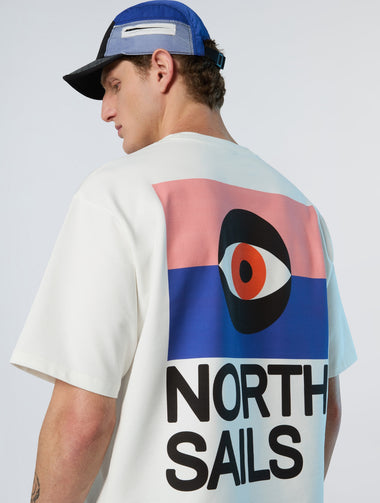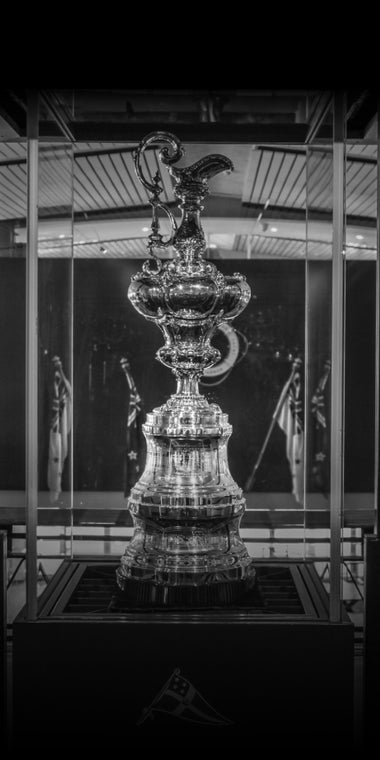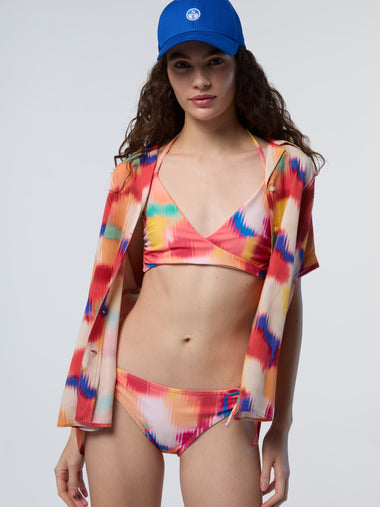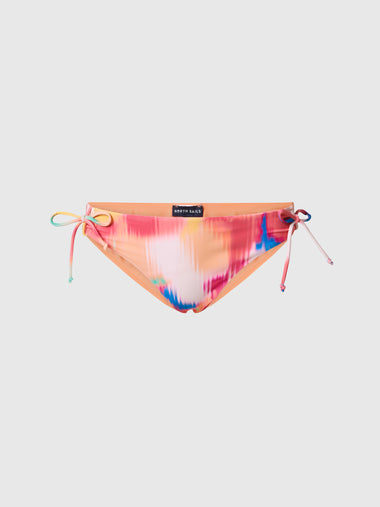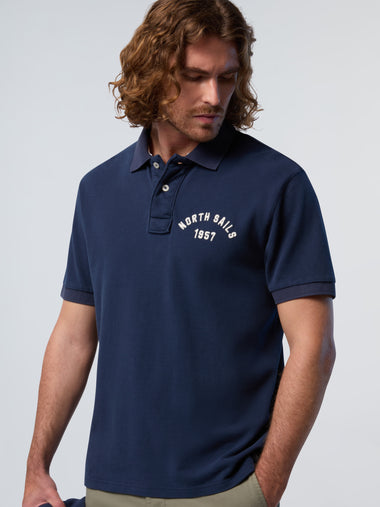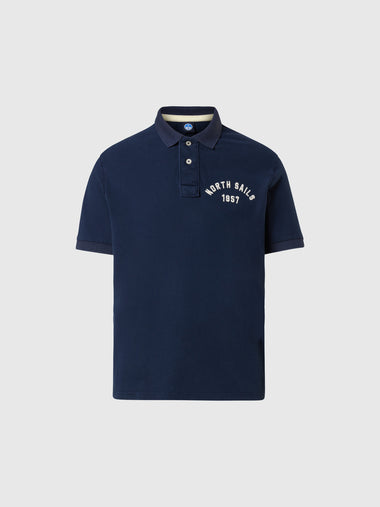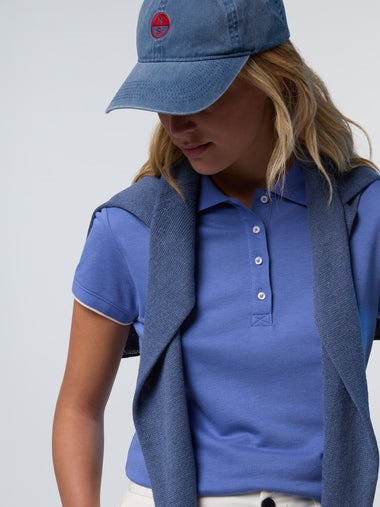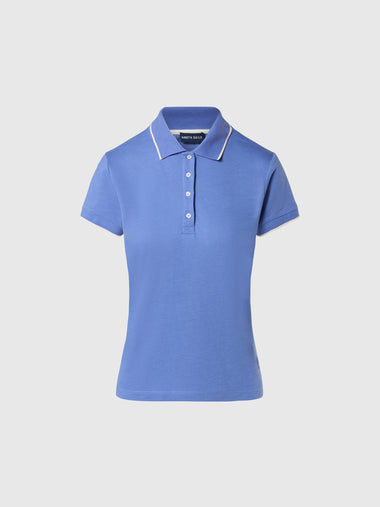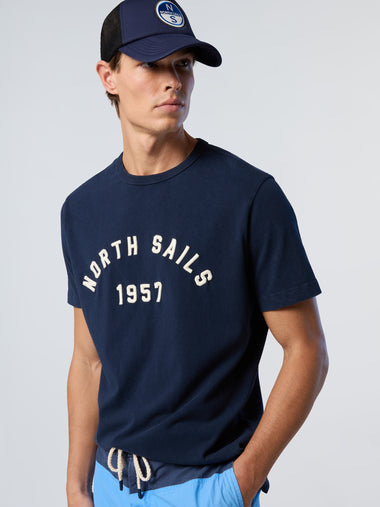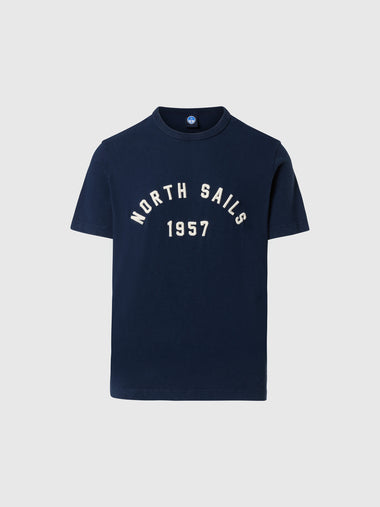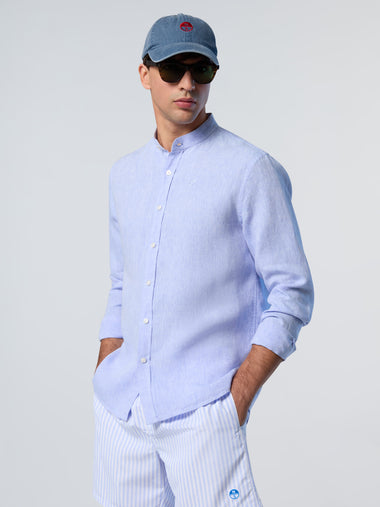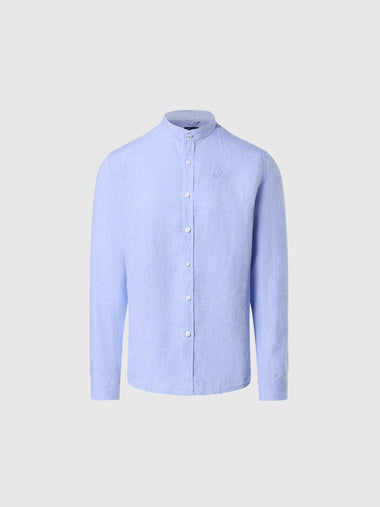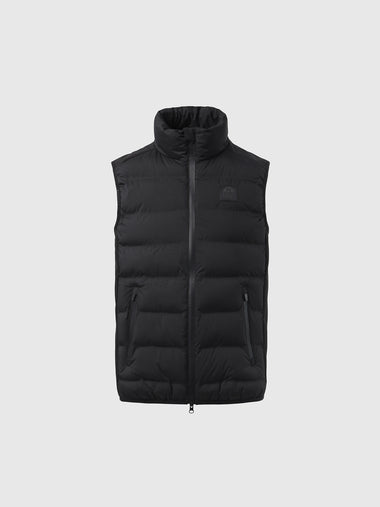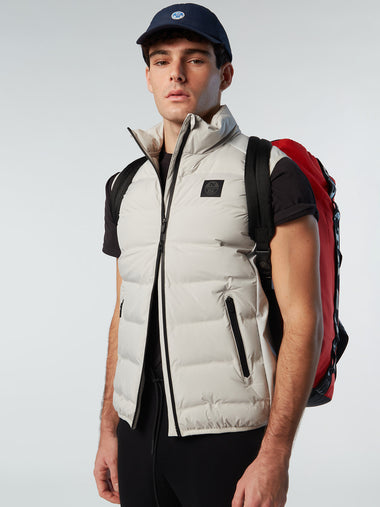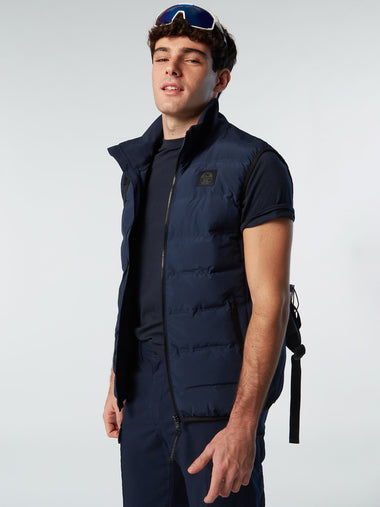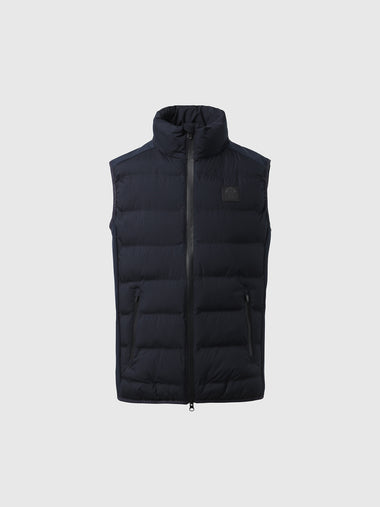NORTH SAILS BLOG
All
Events
Guides
News
People
Podcast
Sustainability
Tech & Innovation
Travel & Adventure
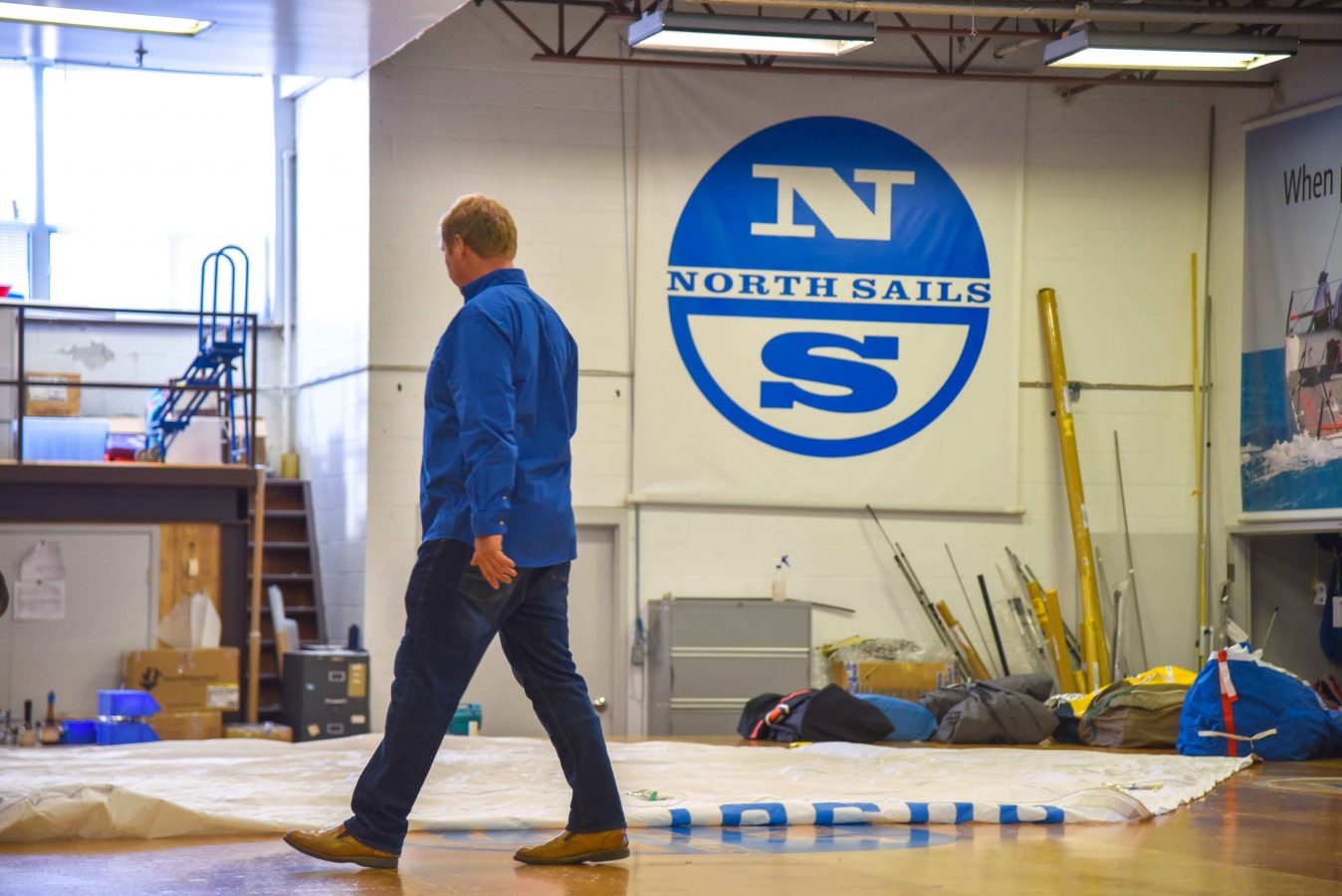
MEASURED & READY TO GO
MEASURED & READY TO GO
Local North Sails sales experts get racers measured & certified for the upcoming racing season
Racers gathered at our Toronto loft this past weekend to prepare for the upcoming season by getting their sails measured & certified. Our sales experts, Hugh Beaton and Mike Wolfs, and service team, Joel Caro, were on hand answering questions & providing service advice for sails brought in.
Our team of experts walked sailors through the measurement process, what would be involved in servicing them including a brief overview of our 10 Point Inspection and recommendations for improving sail handling. LOOR Chair Joe Doris stopped by with his Genoa for his Hanse 40 to get ready for the Lake Ontario 300 and the Susan Hood Trophy Race this year. Last year's Lake Ontario 300 Scotch Bonnet line honour winner & Yachtsman's Cup winner Mike Brown also stopped by with his A3 and S2 to prepare for the season.
It was a great event, in conjunction with Lake Ontario Offshore Racing, which helped racers cross off another item on their to-do list for the season. Our Toronto team thanks racers for coming out!
Missed the event? Not to worry. Bring your sails in anytime and our service team can help get your sails measured & certified, both for PHRF and IRC ratings.
To learn more about LOOR's yacht racing/handicap requirements for racing, please see here for more detail.
Learn more about North Sails Certified Service and how it can help your sailing experience.
READ MORE
READ MORE

ROAD TO THE J/22 WORLDS: KEEPING IT SIMPLE
KEEPING IT SIMPLE
Four basic rules to simplify your race days
Hop into my DeLorean, buckle up, and let’s go “Back to the Future”!
It’s September 2018. Imagine yourself at the dock at the start of day 2 of the 2018 Worlds in Annapolis. It’s currently blowing 18 knots with even bigger puffs because a front has just rolled through. There’s a 50% chance of this wind speed persisting all day and a 50% chance of the breeze dying to 8 knots in a few hours. What’s going through your mind? What should you set the rig to? Is the bay full of waves and steep chop? Should you think about changing your forestay? Where is the sweet spot for your jib halyard? Are the jib cars too far forward, too far aft, or just right? What about the top main batten? Should you stick with the standard or use the heavy-air batten? What is the competition going to do? Who do you have to watch out for? When should you leave the dock? Do you have enough food and water onboard? All these questions and more are swirling around in your head. How can you manage to answer them all correctly?
Hopefully, many of these questions will be answered in your preparation leading up to the “Big Event” because, if you try to focus on all these questions simultaneously, it’s easy to get muddled and over-complicate things. That’s why, as the season gets rolling, now is a good time to put in place a plan for your team to “keep it simple” as an important foundation to successful sailboat racing. To simplify your race days, try following these four basic rules.
First, have a plan and stick to it.
You’ve raced before, so set a routine that works and stick with it. For instance, you can keep provisioning simple by bringing the same food every day. You know what’s been successful in the past, so why overcomplicate things? As for how much water to bring, it’s better to have too much than too little. You can always dump some over the side if it’s not getting used. Knowing when you need to get to the boat and when to leave the dock should also be part of your premade plan. Again, keep it simple. Start with when you want to get to the racecourse (not too late but also not so early that you wear yourself out) and work backwards from there. Your daily schedule should then fall into place and won’t be an added concern.
Second, don’t leave things to the last minute.
When you come in from racing, it’s rare that something doesn’t need to be fixed or tweaked. How tempting is it to say, “I’m tired. I’ll just do that in the morning. What I need right now is a beer!” But how many times do projects on boats take longer than expected? (Hint: Every time!) That’s why you shouldn’t wait until later to get a job done. Just bite the bullet and do it when you get back to the dock. Avoiding stressful, last-minute work is part of keeping things simple. Good boat preparation isn’t last-minute.
Practice isn’t last-minute either, even though we’ve all heard people say, “I’d like to get out to the racecourse early to practice.” During a major regatta is not the time to try to improve your skills. That’s what practice before the event is for. The mornings of a major regatta are for getting out to the course and perfecting your setup for the day. So keep it simple and eliminate practice from your race-day plan.
Third, don’t sweat the details you can’t change.
As you head out to the racecourse, the question of whether your tuning is right always weighs on your mind, but don’t dwell on it now. Getting these details right is what the time before the first race and between subsequent races is for. When you get to the course, find a boat to tune upwind with, make some changes to go faster, and then get ready to race. Once the race has started, don’t obsess about the rig. It’s set; you can’t change it; so don’t think about it. Too many times I hear people say that they weren’t fast because their rig was too tight when the breeze dropped a knot or two during a race. But remember that everyone else is probably dealing with a tight rig too, so quit worrying about the rig and just make the boat go as fast as you can. If you’ve practiced and your team is ready, the tuning will be good enough to allow you to win the race. The point is not to focus on something you can’t change. Keep it simple and focus only on important decisions you’re able to make.
Fourth, make sure you’re going fast.
Speed is king in keeping things simple. Both upwind and downwind, speed makes everything easier because it allows you to concentrate on the race and your tactics. Whatever your problems may be on the racecourse, speed will help you overcome them. For instance, it you’re having trouble pointing, it’s probably because you’re not going fast enough to make the keel work, so you’re sliding sideways more than the boat next to you. The solution? Keep it simple. Put the bow down, go faster, then trim the main harder and let the boat do the work. You can also minimize risk by being conservative when you’re going fast, enabling you to tack in easy lanes. Keeping it simple with conservative tactics means that you’re apt to round the top mark with the leaders and move forward from there.
So back to all those questions that were swirling around in your head before the second day of the Worlds. You already have answers to them, so don’t overcomplicate things. Filling your head with questions and raising self-doubts is never helpful. Instead, keep it simple and don’t overthink. Have a plan and stick with it, never leave things to the last minute, and avoid getting stressed over details that you can’t change. Above all, make sure to go fast so you can focus on the racing and your tactics. As some of you may have already heard me say: Sailboat racing is like NASCAR – just go fast and turn left!
Mike Marshall crossing the finish line to win the 2016 J/22 World Championship
READ MORE
READ MORE
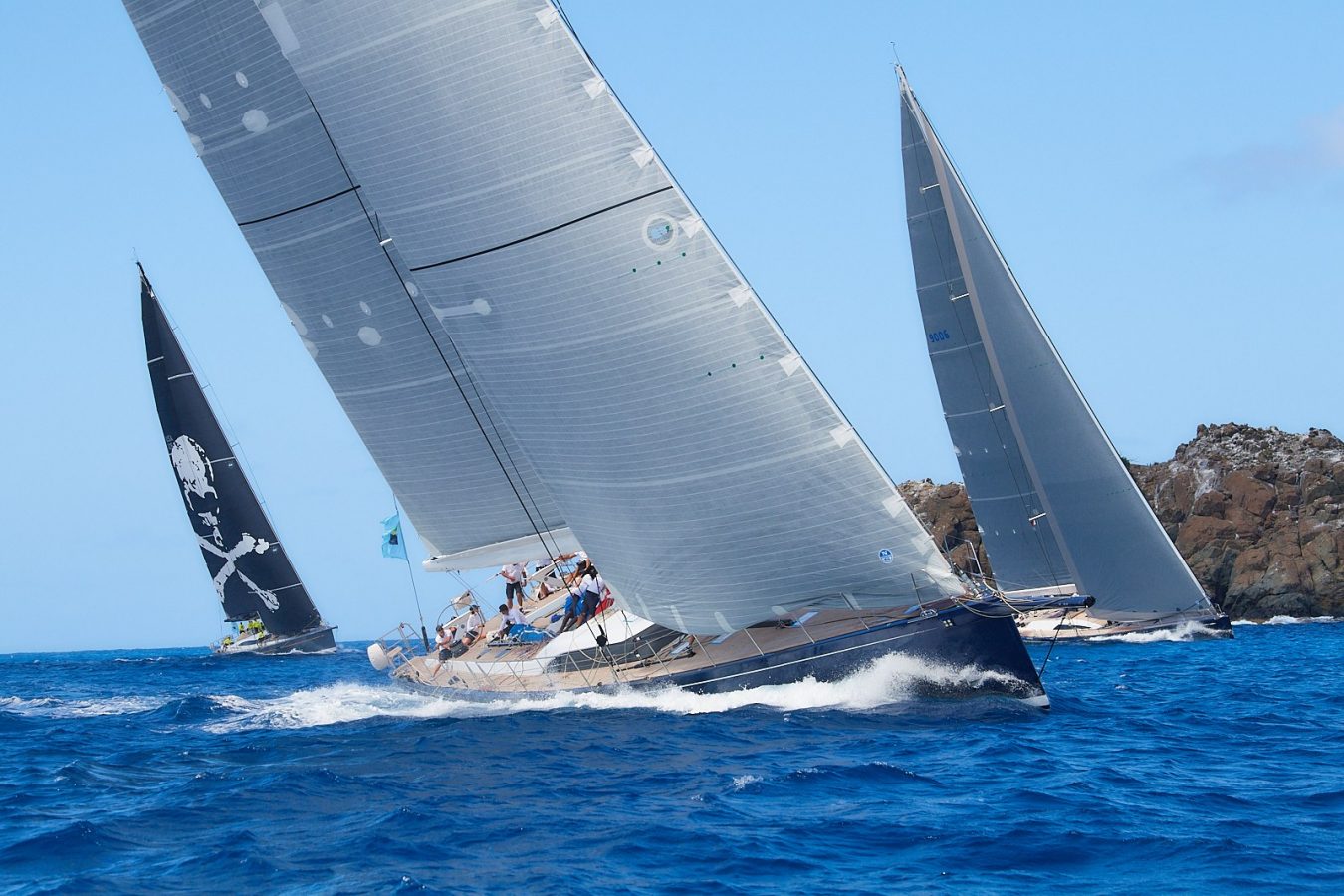
BUCKET BRAGGING RIGHTS
BUCKET BRAGGING RIGHTS
North Sails Superyacht Clients Sweep Podium at 2018 St Barths Bucket
Competitive superyacht sailing and onshore camradaries are hallmarks of the St Barths Bucket © Michael Kurtz
Superyachts were on parade this past weekend for the St Barths Bucket Regatta. Founded in 1986, “The Bucket” is an annual three-day invitational regatta that plays host to the world’s most breathtaking superyachts. This year is especially significant as many worried about the island after the 2017 hurricanes, but St Barths has bounced back, and island hospitality was running at full force.
“A huge amount of credit to the island of St Barths, the event organizers, and the owners who had faith the island would recover in time,” said Ken Read, President of North Sails. The Bucket is always an amazing, well-run event and everyone who sails these superyacht machines looks forward to a beautiful week in paradise. Superyacht racing is alive and well because of events like the Bucket.”
North Sails inventories powered all first place finishers and overall winner Nilaya in the Pursuit Classes, as well as Svea, first place overall on the J Class. It was a busy week of North Sails who had close to thirty sales and service reps on the island. Global Service Manager Ben Fletcher once again had the North pop-up loft working to ensure all boats were race ready should they need repairs. North’s sales and service presence is a testament to their global superyacht structure, which is enhanced with our expanded presence in Palma.
“It was a great week for North Sails and our clients,” remarked Tom Whidden, CEO of North Technology Group. “Bucket racing is competitive, yet there is a tremendous amount of friendship and camaraderie once the yachts hit the dock. Having been involved in North’s decision to leap into 3Di, the Bucket is proof that this technology creates the highest performance and most durable Superyacht sails. You used only to see 3Di on race yachts, but we’re now seeing many of the cruising oriented yachts sailing with 3Di inventories. The product holds its shape and will not delaminate making it possible to carry a single inventory for both racing and cruising, a quality owners and crews can appreciate. I sail on SPIIP whose 3Di mainsail has outlasted our expectations by years and still has amazingly good shape.”
Three J Class yachts participated in the 2018 Bucket. Svea collected six points to take first place with Velsheda and Topaz with 12 and 13 points respectively. © Michael Kurtz
Crew pulls in the spinnaker onto the deck of SIIP © Claire Matches
READ MORE
READ MORE
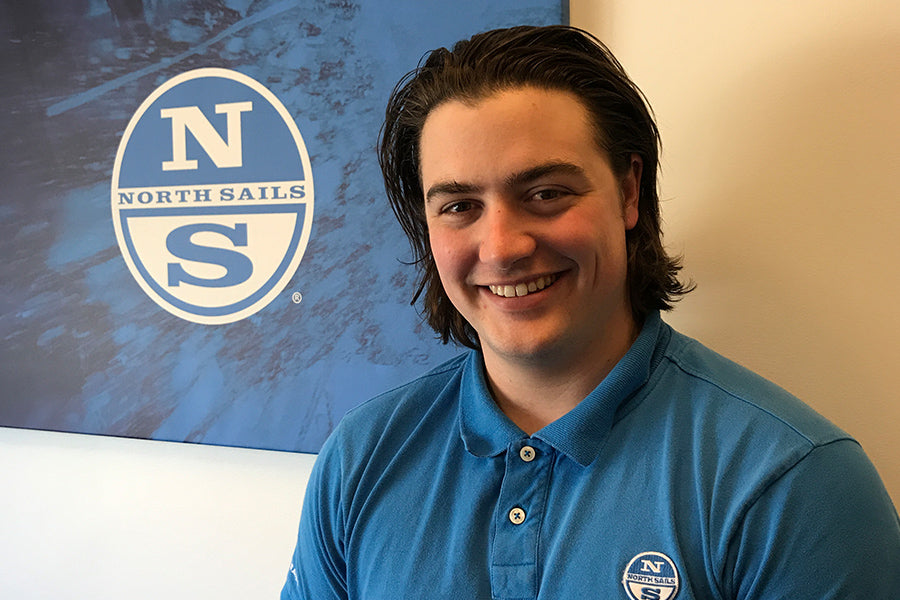
DESIGNER SPOTLIGHT: MAX TRINGALE
DESIGNER SPOTLIGHT : MAX TRINGALE
Developing Tools To Help Visualize Performance
There is a lot happening behind the scenes in a sailmaker’s world – things you wouldn’t know about unless you asked. North Sails Designer Max Tringale, based out of Portsmouth, Rhode Island USA, is teaming up with North U. on an exciting new project that will help to better educate sailors on sail trim. Max has a very defined background in boat building, marine systems engineering, and yacht design. Along with the North Sails design team, Max is building an easy-to-use application called Sail Trim Simulator. The tool will help clients and sales experts make sense of sail trim, fundamentals of sail shape, and understand how these variables impact performance.
Max explained;
“Our goal with the Sail Trim Simulator and with this new technology is to provide more enjoyment out of sailboat racing for our customers through a better understanding of what their boat is doing and how their sails are working.”
The North U. Sail Trim Simulator is being developed to help clients visualize how sails and rig interact together and how that relationship is manipulated by the different sail controls to achieve desired sail shapes. “We currently have two sail models, the TP52 and J/35, loaded into the simulator,” explained Tringale.
Bill Gladstone, director of North U. commented;
“There are specific boat designs for each model, and the user can select which performance factors they want to turn on or off. The Sail Trim Simulator has the ability to alter everything from wind speed to sea-state, which can all be altered to create a simulation of what you’d expect when you are out on the water. The user will be able to see the performance difference so they will understand how they should set the sails up for maximum speed in given wind conditions.”
In both screens, the J/35 is sailing at a little over 12 knots. In the upper right-hand corner, you have adjustments for wind speed and sea-state.
The Sail Trim Simulator is particularly suited for one design sailing, where it can be used as part of North Sails tuning guide to further explain rig set up and tuning. When supplied with various rig settings and tensions, the tool provides a visual aid to show why North recommends particular settings. The app provides targets for rig adjustments and trim settings before even getting on the water.
User optionality for viewing angles to see the slot of the genoa and mainsail and what the leech looks like from the top down view, showing flatness of the sail when the trim is applied.
“We’re looking at seven different control factors; mainsheet, backstay, traveler, cunningham, jib sheet, jib lead, and jib luff tension,” explained Tringale. “For each one of those controls, we are developing optimum sail shapes. We identify the optimum for each control point, understand how it is correlated with the other points, and then define optimum sail shapes for each wind speed. Other controls like rig tension and mast rake are left standard at this time to simplify the tool.”
When the user opens the application they will notice that each control point has a working range. For example, if you want to pull on more backstay tension, you can adjust in millimeter increments and watch as the output numbers change. The app has a function called the Magic Wand, allowing the user to set a desired TWS and having the app find the optimum upwind boat trim for that wind speed. Also shown is the VMG and TWA the boat is sailing at, showing optimum sail trim.
Image shows boat trimmed to 16 kts TWS. By dropping the traveler and adding more backstay, the main is flattened and the genoa can be sheeted in and the lead moved aft to twist the head. Image shows boat trimmed to 6 kts TWS. Using the magic wand, the boat sails naturally at 45.6 deg TWA with no backstay and the traveler set below centerline. Notice how the jib luff tension is softened.
Users can gain an understanding of how certain sail controls are used to de-power, and power up the boat. By adjusting controls, the shift in draft location manipulates twist, which affects boat speed, point, and VMG. All the controls are connected so the user can work towards their target boat speed for selected TWS.The rudder angle indicates if you have too little helm, which would tell the user sail trim adjustments are needed.
North U. is currently beta-testing the application during their Trim Seminars to make sure that the data that we’re developing is real, useful, and user friendly.
North Sails enjoys having a lot of talented designers contributing to their product development and are always looking to improve. “The Sail Trim Simulator is one tool that can help our designers (as well as our customers) understand the cause and effect of sail and rig trim,” remarked Tringale. “Not only the actual change in sail shape but also overall boat performance, which is ultimately what we are looking for.”
“It is incredible how much data and work has gone into the Sail Trim Simulator because it really shows the power of the North Design Suite software. We’re the only ones that are developing something like this that we know of. This project is special because we’ve developed real flying sail shape and rig data, developed using Membrane™ program coupled with Flow™, our program for the fluid surface interactions. From there, those optimized flying shapes are run through the North VPP, which is doing integrations between the various flying shapes. It really is a unique thing that we have; the ability to produce a tool like this.”
The creation of the Sail Trim Simulator is just the beginning of a new generation of designers at North Sails who strive to create the best products for our clients.
North U Seminars provide classroom training with a roster of top instructors and the latest in interactive multimedia training. Check our schedule of upcoming full and evening seminars, or get info on how to bring a North U seminar for your club, fleet, or association.
READ MORE
READ MORE

BESØG NORTH SAILS
BESØG NORTH SAILS
Forskellige bådtyper og forskellige interesser - North Sails dækker det hele
Har du lyst til og se et moderne sejlloft og de nyeste sejltyper og materialer?
Så inviter dig selv på en kop kaffe eller arranger, at din klub, klasse etc. kommer på besøg hos North Sails i Herlev.
”Vi får dagligt besøg af vores kunder og andre interesserede, som vil se vores topmoderne sejlloft. Ikke mindst er interessen for at se vores nye kompositsejl 3Di Nordac i polyester enorm.
Vi har 1000 kvadratmeter moderne faciliteter. Fx et sejlmagerbord på 400 kvadratmeter, hvor vi kan vise alle typer sejl og materialer,” fortæller loftmanager Jesper Feldt.
12-meter og Bavaria på besøg
Der har netop været besøg fra alle danske 12-meter både, og før det medlemmer af Dansk Bavaria Klub.
12-meter folkene oplevede en aften med fokus på den teknologiske udvikling hos North Sails med et oplæg fra designer Heine Sørensen.
Efterfølgende fortalte Mikkel Røssberg, der sejler professionelt på 18. år om kommunikation på båden under kapsejlads.
Det faldt i god jord hos de besøgende, der har et stort crew, hvor det kræver disciplin at få vigtig information tilbage til fx rorsmanden.
Designer Henrik Søderlund afsluttede med at fortæller om, hvordan man bedst tager foto og bruger anden teknologi til analysen af sejlegenskaberne, når båden og sejlene er i funktion.
Aftenen blev afsluttet på det store sejlmagerbord, hvor flere typer sejl kunne inspiceres.
Rullemaster og andre detaljer
På samme måde sluttede en aften for Dansk Bavaria Klub, der inden da have fået et oplæg omkring udviklingen af sejl og muligheder til netop deres typer af både. North Sails er eksperter i og lave sejl til rullemaster, som flere af Bavaria bådene er udstyret med.
”Vi har altid kaffe på kanden og er der særlige interesser, så giv os et kald i forvejen, så finder vi netop de sejl og materialetyper frem. Er I flere med samme interesser, så sammensætter vi gerne et program netop til jer,”, slutter Jesper Feldt.
North Sails kan træffes på 39 20 40 90 og besøges på adressen Lyskær 10 i Herlev
Der er altid flere North Sails-eksperter tilstede, som kan give råd og vejledning til de besøgende.
READ MORE
READ MORE
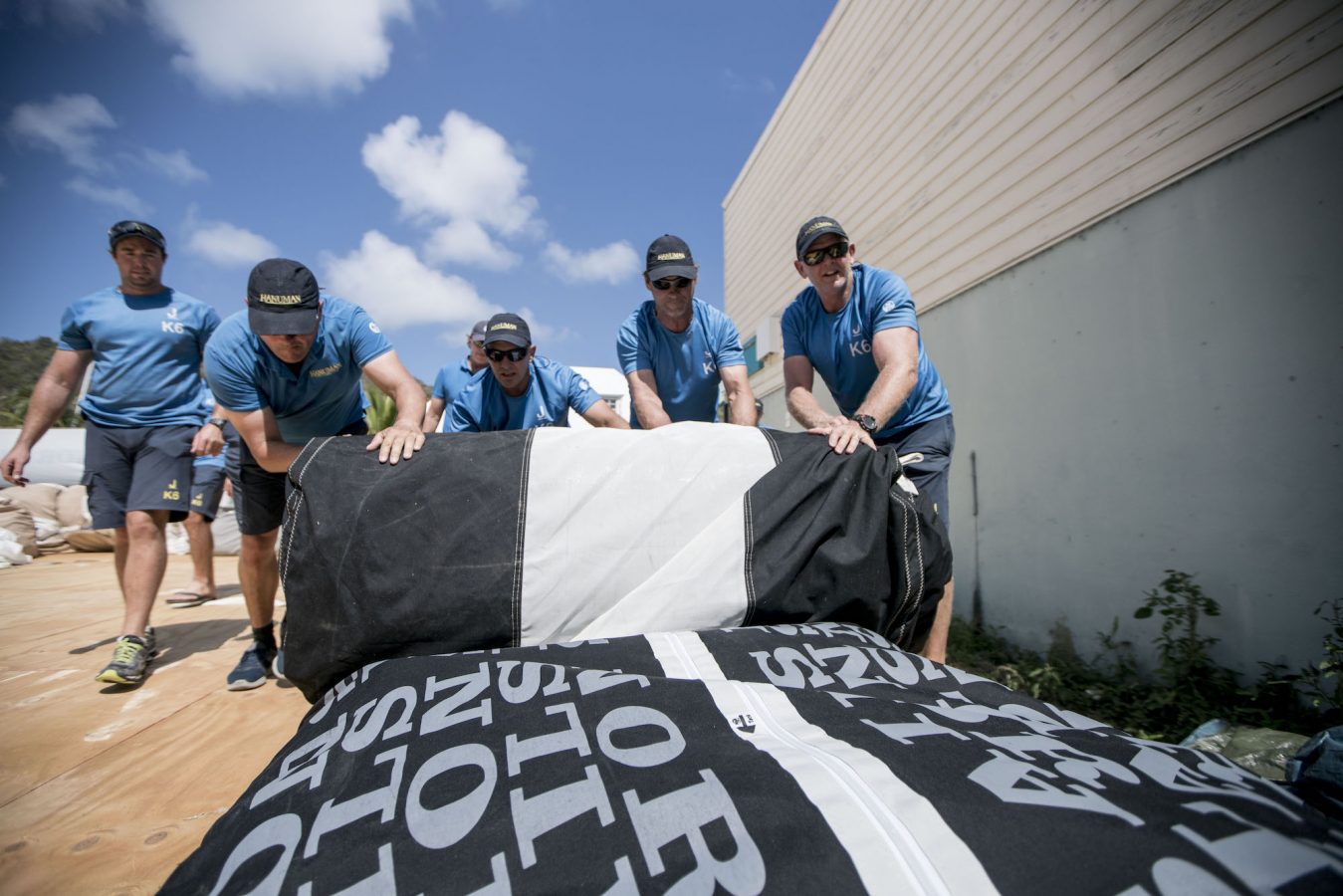
NORTH SAILS PALMA: THE LEADING SUPERYACHT SERVICE CENTER IN THE WORLD
NORTH SAILS PALMA: THE LEADING SUPERYACHT SERVICE CENTER IN THE WORLD
The completed merger of North Sails and the former Doyle Palma team creates the world’s most extensive sales and service facilities in Mallorca, Spain
Following the January announcement that the experts from the former Doyle Palma team would join forces with the local North Sails loft in Mallorca, Spain, the newly combined facilities and the team are taking shape in the heart of the global Superyacht industry. The enhanced personnel, increased capacity, and expanded resources look set to offer clients, for both Superyachts and local boat owners alike, a market-leading customer service unrivaled anywhere in the world. With a combined loft space of 6,518m2, 42 staff, three vehicles for sails transportation, two with 1.5-ton cranes, as well as storage for 2000 sails, North Sails in Palma is unquestionably the best service site in the world for quality, capacity and turn around.
Since announcing the merger, both senior management teams from North Sails and the former Doyle Palma team, have been working collaboratively to structure the combined operations and organizations to optimize the customer experience. With unparalleled experts, loft space, knowledge, technology and facilities, the newly restructured Palma lofts build on years of experience to ensure the best service and results for clients. The two lofts feature modern high-powered specialist sewing machines, two sail washing facilities; and the dockside office facilities located in STP will serve as a convenient customer meeting point.
The former team from Doyle Palma headed by Quinny Houry, Fiona Bruce, and Russell Thom have always placed a high priority on customer service. “By joining forces with North Sails we can together give all our clients the customer service they expect while improving our offer through North Sails products and the worldwide sales and service network,” says Fiona Bruce, Palma Site Manager overseeing the newly combined loft management for all three locations.
Quinny Houry, Superyacht Sales:
“Our combined team of sail experts have enjoyed sharing insights and knowledge with our new North colleagues, and we feel confident our customers will only see improvements going forward. We are also very excited about the opportunity to offer all our clients the cutting-edge 3Di technology and the world’s largest network of lofts across five continents.”
The combined North Sails Palma loft will now have three operational centers:
Dockside Office in STP; customer meeting point
Edificio Global
Muelle Viejo de Palma
Camí de l’Escullera
Palma de Mallorca, Balearic Islands 07012
Palma Loft*; sail design, sales, service assessment
Calle Ca Na Melis 11a
Poligono Son Morro
Palma de Mallorca, Balearic Islands 07007
READ MORE
READ MORE

J/24 MIDWINTERS: BOGUS SAILS TO WIN
NORTH POWER SWEEPS J/24 MIDWINTERS
North’s Will Welles Shares How They Sailed To Win
© Chris Howell
35 teams met at Shake-a-leg Miami for the 2018 Midwinter Championship where sunny skies and beautiful breeze greeted sailors with ideal racing conditions for the three-day event. Each day brought building breeze from the NNW that slowly clocked NNE by the end of each day, keeping sailors on their toes with oscillating shifts that were as high as 30 degrees. As the breeze increased, teams concentrated on maintaining boat speed in the developing chop, which made for some great opportunities to gain both upwind and downwind if you could catch the right shift and make smart decisions.
At the end of day one, Will Welles’ team Bogus was hot as ever, ending the day with snake eyes giving them 4 points total. This would be a precursor to the remaining race days, as Will’s team never scored worse than a 5th place, allowing them to win the race to the dock as the last race would be their victory lap. Consistency paid off the remainder of the weekend, driving Welles to win the overall championship by 18 points, with one discard. In second place was Tony Parker’s North-powered Bangor Packet. Mark Laura’s Baba Louie was unstoppable, stepping up the level of competition in the Corinthian division. Congratulations to our clients on a successful weekend. A great start to the 2018 spring sailing season.
Full Results
The truth About Bogus, 2018 J/24 Midwinter Champs
We caught up with skipper Will Welles who was driven to success in Miami for the J/24 Midwinter Championship with his team Bogus. Hear the truth, first-hand from Will, on how his team sailed to win the regatta.
What were some of the things you focused on during some of the practice days leading up to the first day of racing?
We had a lot to do in a little time because we borrowed a boat that was already down there, we picked a boat that we knew had good pedigree, but we knew we’d have to spend a day or so changing a couple things to make it the way we wanted it (Thank you Nick Turney!). Once the boat was set and the full team had arrived we were able to head out sailing spending a few hours on Wednesday and then a few more hours on Thursday.
“Our main focus was to make sure the boat was up to speed, that it had the straight line speed that we are use to with our own boat. We just set the boat up to our dock tune and then went out and lined up with a few boats and pretty quickly found our speed, straight from the tuning guide!”
When you get out on the race course, what are some things that your team focuses on? Of course you probably sail upwind a little bit, make sure your rig feels right, your boat speed is good, get the trimmer warmed up- but what else are you doing to get ready for the first race?
“The big thing is, we don’t want to rush, so we get out there at least an hour early and spend at least an hour on the race course before the first warning signal.”
In Miami we actually got out there about an hour and a half early each day, and without rushing, your heart rate isn’t too high and you can just focus on getting your homework done. The homework is sailing the course and seeing what the wind is doing. Logging in some compass numbers upwind and checking the rig setting. We like to meet at least another boat out there to sail upwind together to make sure we’re going alright and that our rig set is where we want it to be. We get some numbers and then go back to the line and check in. Note: As far as rig settings go, we were always making sure we weren’t ever caught too tight on the rig, we’re always gearing towards maximum power. There were some big holes (lighter air patches) on the course, and they lasted a long time, so max power was key.
Sometimes we’ll do a split tack where both boats start at the committee boat, one on starboard and one on port and we sail for five or maybe six minutes then tack and see where where we are when we come back together. Sometimes this is helpful, but it’s not always helpful. You just have to take it as more data.
“You can’t always think that if a boat that sailed the right side crushed the left side, that’s how it’s going to be by the time you get the first race started.”
So we do the split tack and then we go back to the line and take a little water break, maybe eat a granola bar and then start doing our starting line homework. We ping the line at both ends, then log some head to wind compass readings which helps us get an idea of what the shifts are doing. Then the big focus is getting off the line on the favored side of the starting line and getting to the side you want to sail the first beat. We usually discuss all this stuff as a group, then try to execute our plan.
So after the start, you guys are heading up the first beat. Is there a lot of communication between you and the trimmer? And if so, what kind of information is discussed?
Rich and I have sailed together for a bunch of years, so the talking is minimal, but that’s just because we know what to expect with one another and we know what we’re looking for. There’s not a lot of conversation. Depending on sea state, the bigger the waves he might be playing a little bit more sheet than he would if it was flatter water. In conditions like Miami, it wasn’t that wavy, there was some small chop. We’d get out of the tack, he’d get the genoa inside the lifeline then to the rail, I’d put the winch handle in and when the boat was up to speed I’d grind it the rest of the way in.
We pretty much leave it in unless I was flogging the main more than I wanted to in a puff, he listens to that and I might tell him for some waves, burp the genoa (sheet) a little bit. Or if the breeze drops down a little bit, I might tell him to burp the sheet or if I adjust the backstay I’d let him know that too. So there’s little chatter. We’re always talking about the sheet. I do the final winch handle fine trimming, in and he’s doing the easing out of the sheet up wind.
As you approach the downwind leg, rounding the top mark, you crack off and start the pre-feed. Who makes the calls from there?
We have a discussion, soon as we round the top mark, I’m asking the tactician (PJ Schaffer in this case) are we extending or looking to jibe? We’ll have that discussion and I know before we get to the offset what the plan is. It’s my job to get the boat setup so that we can either jibe or continue and extend. I’m watching the boats around close behind us, or close in front to make sure we are clear to make a move if we decide that is the plan. The breezier it is, the less weight you want off the rail from the weather mark to the offset. So we try to keep weight on the rail and trim the sails to the angle we’re sailing to the offset so we can get maximum speed. Making sure the main is trimmed just right, the vang, and the genoa, we go for the pole and pre-feed the guy and be ready to set the kite at the offset when I call for it.
Then once the spinnaker is set we’re always talking about angle and pressure. I’ll ask Rich if he likes the angle out of a jibe if we do execute. I’ve got a good feel from the rudder and the wind on my neck, and he’s got probably the best feel with the pressure in the kite from the sheet. I’m always looking to hear what he’s feeling in the sheet and that kind of helps me plan whether I want to start putting the bow up or start pushing the bow down.
“We usually have someone on the boat giving us a heads up on what’s coming big picture pressure wise, whether it’s a long lull or a big puff or just medium pressure. That’s also good information for me to decide where I need to put the boat. It’s just good communication so everyone is on the same page.”
The key is that we don’t talk constantly, we talk as needed. I think sometimes people can talk too much, so when you’re communicating less words are usually better than trying to sprinkle lots of extra words in there. Just getting right to the meat of what we’re trying to talk about whether it’s a puff or a lull or good pressure works the best.
What would you say are three things that contributed to your team’s success at the Regatta?
Everyone on the team brought a lot of skills to the team, and so it was almost easy. We all just fit together really well and everyone knew their jobs and did their jobs and it just worked. Having a good boat and a good team is so crucial and it’s a key to success. Once you have that stuff, it’s getting good start, picking some shifts correctly, .and having fast sails of course.
Give us three tips that would help a J/24 class sailer get faster on the race course?
The boats have been around for a long time, and the tuning information that we have is pretty solid. You can get a boat, set the rig up right to the tuning guide and have speed straight away, which is really good. That takes one huge thing off the plate. Boat speed is a crucial part, thankfully the tuning guide and our sail designs offer boat speed to all the teams that use our product. Boat preparation is also key. Making sure you have a good keel, rudder, bottom, mast and rigging, and make sure they won’t fail you on the race course or hold you back. That’s all relatively easy stuff to get sorted. Once you get those things figured out, get sails and needed boat speed then the real difference becomes the crew.
“Sailing all you can together in all the conditions and approaching it as a team and all growing as a team is so important.”
Knowing ahead of time you’re going to be doing an event or even back to back events, is there any mental preparation involved to get your mind right?
The key is the people you surround yourself with. It’s a lot of work to get a sailboat to a starting line and if all that work is on one person’s shoulders then that can create some stress, so having a good team with good teammates that all know their strengths and weaknesses and bring what they can to the table to help scratch things off the to do list is kind of what it’s all about.
“It’s who you surround yourself with and the teammates you go to battle with.”
If you don’t have good teammates, then you get on your heels with the boat work and boat preparation and that creates stress and makes it hard to succeed. Making sure you leave enough time to do everything you need to, be prepared, eating good food, getting good rest, and having good teammates that are helping with the workload is very important in mental preparation not just for the skipper, but for the entire crew.
Interested in regatta winning J/24 sails? Contact our experts!
READ MORE
READ MORE
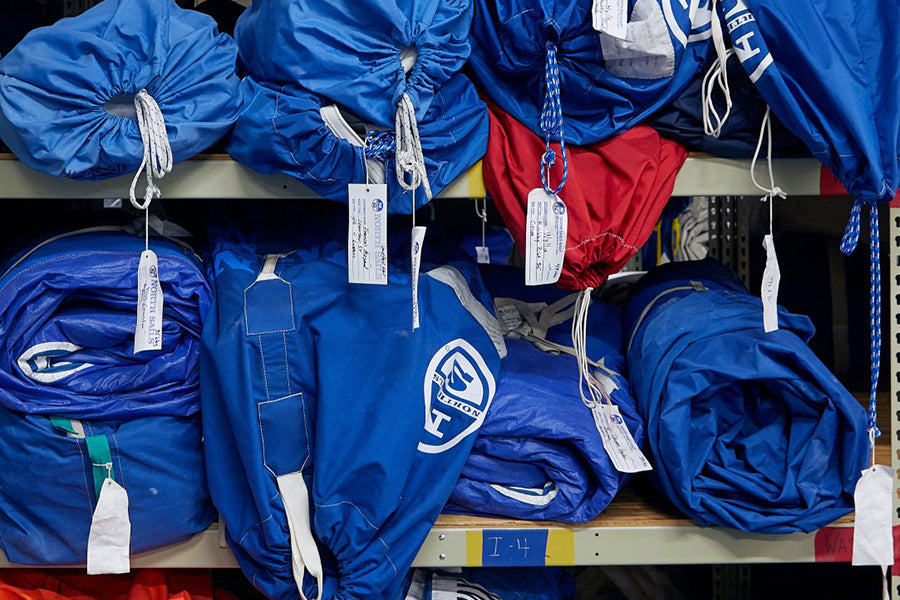
SERVICE TIP: DEALING WITH CORRODED ZIPPERS
SERVICE TIP: DEALING WITH CORRODED ZIPPERS
One of the more frequent service jobs we have here at North Sails revolves around sail bag zippers. They are easily over looked yet are a fundamental component of your sail.
To keep your zips functioning try these tips from our service manager Nick Beaudion:
Rinse the zipper cars with fresh water after use. This will greatly extended the life of your metal slider. Using the last bits of the crews water bottle at the end of the day is a simple solution.
Silicone spray your zipper cars. Any number of silicone sprays will accomplish the same goal of protecting the metal slider from salt water.
Keep your sails dry. After the fresh water rinse and silicone spray, storing your sails in a dry environment will greatly extend the life of the slide over longer periods of time.
If you do have a corroded zip there are a number of things you can do to rectify
Pour fresh, boiling water over the zip to help clear the sail buildup
Gently pull the zip apart and tap on the slider with a screwdriver. This will dislodge the sail buildup and help move the slider
If worse come to worse drop your sail bags off to your local North Sails service loft to have your old sliders replaced before your next big regatta
READ MORE
READ MORE

A NOD TO FEMALE SAILORS ON INTERNATIONAL WOMEN'S DAY
A NOD TO FEMALE SAILORS ON INTERNATIONAL WOMEN'S DAY
Celebrating 8 years in the sailing world through my lens
Sailing, as a kid, was something we did on weekends or at camp; never did it come into mind that it could be a career avenue. Growing up, I never would have thought I’d be working where I am today or in the industry I am. But now? I couldn’t imagine working anywhere else. The people you met, the stories you hear and the adventures you experience are some of the most unique that it will always keep you coming back for more. There’s never a dull day.
My start in the sailing industry began in high school when I took a summer job at a local chandlery with what I’d soon learn was minimal sailing knowledge. It was quite literally a whole new world I had just embarked on. Sure, I grew up sailing at camp and on the family boat here and there, but it was nothing compared to the world I was thrust into. Overwhelming to say the least but I was hooked. I returned for another summer the following year – and 6 more after that second one. Gradually learning more along the way while also getting out on the water more.
As time went on I noticed a great imbalance in the number of women in the industry though. There were a small handful of us who were familiar faces in the local sailing scene in Toronto, be it leisurely or professionally, creating a sense of community. The more involved I became the more I was introduced to this network of female sailors who welcomed you with opened arms, such as Kristina Gilbert. It’s been great to become a part of this community and help grow the sport.
After 10 years of volunteering on Race Committees and 4 years of participating with Club Level Racing, I can truly say that sailing is in my DNA. I have done everything from recording sail numbers to being RO on Race Committee; my passion though is mark setting. When it comes to racing, as with most, I started out as rail beef gradually transitioning into different positions throughout the boat. Currently, I am testing my skills as pit.
There is no better place to be than on the water and with the craziness of our daily lives, sailing is the one thing that makes my soul smile within two minutes of leaving the dock. At the end of the day it is exactly what the doctor ordered and spending time with people that have the same sort of passion for the sport is the cherry on top!
-Kristina Gilbert, Port Credit Yacht Club
I joined North Sails almost a year ago and have not looked back since. It has been a fantastic environment to learn and grow; one that encourages women to become more involved in the sport and overall community.
The past eight years as fantastic as they’ve been have not come without their own trials and tribulations. The sailing world is for the most part a male dominated industry with even greater inequality for women when it comes to the professional yachting industry. It’s a familiar scene walking the docks, crews upon crews getting ready to head out during weeknight racing or a weekend of racing. The ratio of men to women is probably 80 to 20. A ratio that needs to become more balanced.
We’ve seen teams like Team SCA from the 2014/2015 Volvo Ocean Race to Team Magenta 32 who competed in the World Match Racing Tour have helped change the stage for women in professionally yachting. Further changes such as the crew options for the 2017/2018 edition of the Volvo Ocean Race have also opened up new opportunities for female sailors to compete on a level playing field in professional yachting. While we have made great strides, there is still room for improvement. I have no fear that the tides are turning, and we will see the realm change for the better in the years coming.
Happy International Women’s Day to all!
Check out more leading ladies changing the tides in sailing.
READ MORE
READ MORE

GIORGIO TORTAROLO SCELTO COME SPECIALIST NORTH SAILS
SAIL AND VELERIES, GIORGIO TORTAROLO CHOSEN AS SPECIALIST NORTH SAILS
Carasco - A few weeks after the entry of Matteo Sangiorgi in the North Sails network, the Carasco sailmaker announces the entry of a new important reinforcement in the technical-commercial staff, that of Giorgio Tortarolo.
Winner of three world titles, two continental and five national, Tortarolo, already engaged on board the TP52 Orlanda and Anonymous, boasts affirmations in all the circuits connected to the Melges classes (20 and 32), including the newborn Melges 40 Grand Prix. In addition, the activity carried out in the maxi area is also of absolute level, thanks to its involvement in Stig's projects, protagonist on the international regatta fields with a Baltic 65 first and a Mini Maxi 72 then. Thanks to the highlights of a career dedicated to sailing and regattas, Giorgio Tortarolo obtained the titles of Azzurro d'Italia and was awarded the CONI of the Star for Sports Merit.
Backed by an experience of three hundred and sixty degrees deriving from having managed some of the shipyards, the last of which Savona ShipYard, Tortarolo, which in recent years has concentrated its competitive activity mainly on monotype, is ready to make available to North Sails and his clients as he matured in years of activity linked to sailing: "Being part of the North Sails network is undoubtedly a prestigious step in the career of every sailor. We are talking about a reference brand for each professional, one of the first to become familiar when deciding to devote himself to sailing and regattas. Over the years I have been able to appreciate the constant search for performance by North Sails: a goal pursued through major investments in research and development, that have equipped the technicians with the most modern and technologically advanced instruments and the boats of fast and reliable profiles. Moreover, looking beyond monotype, North Sails is a reference veil in the world of offshore and offshore regattas, areas that fascinate me because they leave great space for optimization and custom solutions ".
Available along the docks of the main Italian and international sailing events, Giorgio Tortarolo and his collaborators are available to customers at the North Service Point in the Marina di Varazze, where they offer services such as consultancy, sale and washing of sails and clothing supplies for crews.
Welcome to Tortarolo in the North Sails working group was the management of the Italian loft of Carasco: "Giorgio is one of the most active Italian sailors in the world of monotype: present at all the main events of the season, for years collaborating with the teams flagship and this makes it one of the most profound connoisseurs of the one design classes of reference. It is one of those elements able to make the difference, whose point of view helps to achieve the objectives to be achieved more effectively ".
READ MORE
READ MORE

VIPER 640 WORLDS: INTERVIEW NICK JERWOOD
INTERVIEW WITH 2018 VIPER 640 WORLD CHAMPION NICK JERWOOD
Top Ten Teams Powered by North Sails
North Sails is proud of all clients for their dominant performance at the Schweppes Viper 640 World Championship in Perth. All top ten boats at the Worlds were powered by North. Our own Viper expert, Zeke Horowitz, had the pleasure of catching up with new World champion Nick Jerwood to pick his brain on the key factors that led to his team’s success. Please enjoy the interview with the Champ below!
Tell us a little bit about your team and what it’s like to sail as a family at such a high level. How long have you guys been sailing together and how much Viper experience do you have as a team?
Brian is the father of my daughter’s crew in the 470 Class and he asked me back in September 17 whether I would be able to sail the Viper with him, potentially on up to and including the Worlds. I jumped at the chance never having sailed with Brian before but knowing full well what a really top bloke he is, it was an easy decision! The choice of middleman was the next piece of the puzzle that we had to solve, the answer came to us fairly quickly after Matt (my son and helm of the World Match Racing Tour team “Redline Racing”) confirmed he would be able to sail the Worlds with us. To sail with Matt was quite an honor, I haven’t had the pleasure of sailing with him in a regatta for many years, so to see first hand how much he has matured as a sailor and to benefit from the professional approach that he brought to the team was a real learning experience for both Brian and I. Brian had sailed Vipers to a limited degree prior to September 17 but my exposure to the class had been ZERO. Matt had very little prior experience of the Viper but thankfully he had good experience of asymmetric classes, 49er, M32, GC32 etc. which proved invaluable. My sailing experience has almost entirely been on symmetrical spinnaker classes so early on in our campaign I was quite lost on the downwind legs, initially always sailing way too low and then too high, downwind sailing was definitely the aspect of Viper sailing that took the longest to get to grips with.
What was your practice/training schedule like as you prepared for the Worlds?
Matt couldn’t sail regularly with Brian and I due to his other sailing and coaching commitments for most of the run-up to the event, but this didn’t stop Brian and I sailing at every opportunity we had. During 2017 training opportunities were quite rare for us due to work commitments but my time freed up in early January 18 at which time Brian and I ramped up the effort to get out on the water three to four times a week with various experienced crews who helped us learn a lot about the boat. Matt trained with us whenever he could but this was limited to maybe six or seven- sessions until the week before the event when he returned to Perth from Sailing a GC32 in Melbourne and we were able to get out on the water for some solid practice sessions most of that week. Little did we know the conditions during the worlds were going to be totally different to those we had been practicing in.
How did you approach the tuning to make sure you were going really fast in all conditions? What were the three things on your “tuning checklist” you double checked before starting each race?
We knew we had very little time to experiment with the boat’s setup prior to the event, choosing instead to set the boat up to replicate the North Tuning Guide as closely as we could, hoping that this would be a quick easy way of dialing up boat speed. The hope being that this approach would enable us to spend more of our time concentrating on boat handling and starting rather than setup.
We gained confidence quite early on from the feel of the boat, the response of the rig and look of the sails that the North Sails tuning guide had set us on the right track to be as fast as any boat out there, so we were able to save many hours of tuning up time just by following the straightforward North guide.
One of my sailing tenants is to make sure you have the basics covered, build on a strong footing so to speak. So before each race, we would make sure the basics were in place as far as rig setup was concerned then the three most important considerations for us would be, Cap shroud setting, chocks and luff tension. All three of which tended to be set to the conditions while most other adjustments were more, set and forget.
You ended up winning the Championship by a pretty large margin. How did your strategy and approach to each race change as you could start tasting the Championship near the end of the event?
We were very conscious of the quality of competitors in the fleet, we have a huge respect for their abilities so were at no point confident that the win was ours until it was in the bag. We had a UFD on the first day so could not push the starts at any point, this coupled with the random light gusty conditions that prevailed, and the close proximity of the shore to the top of the course meant that the potential for a deep finishing position was always present and that would put a huge dent in our regatta prospects. The last day was particularly difficult, we were determined to get the job done (win the event) during the first race of the day but after going for what appeared to be a certain pin bias start the wind started playing tricks and we quickly found ourselves in the middle of the fleet bouncing around the 13th position that we needed to achieve the win. We had talked together during the event about how we needed to trust each other’s abilities and that, as long as we did our best and sailed to keep the odds in our favor then things would turn out for the best. We did just that, didn’t panic, just stayed close to our nearest opposition sailing as fast and free as we could in the conditions. It paid off, and to our great relief we won the event with a race to spare. To go on to win the last race was the icing!
What is your favorite thing about racing the Viper?
Without doubt, sailing downwind in 20 knots, or even 25 knots and above on a good day when we get blessed with a good seabreeze. It’s what we live for. A close second is the mateship and friends you get from participating in such a tight fleet, really lovely people following their passion for the sport. Can’t think of a better way to spend leisure time.
What are three tips you would give a first-time Viper sailor to help them have success in their racing?
Keep it simple and make sure you have the basics covered before worrying about the 1%. The standard boats are excellent, while the off-the-shelf sails from North set up beautifully to their guide to give a fast responsive package. Just concentrate on pointing the boat in the right direction and you will have everything you need to make the boat competitive. Don’t put up with anything that doesn’t work properly, the equipment needs to be the best quality and in good working order so that you can enjoy sailing and get the most out of the experience.
What’s next for team Jerwood?
That is quite a funny question for us, but not in the way you may first think. As mentioned earlier, my daughter Nia sails with Brian’s Daughter Monique in the 470 class and they set-up a facebook page called “Nia Jerwood / Monique deVries – AUS 470 Sailing Team“. So, as a result, the AUS Viper sailing team from the same families has been named in jest by the girls as “Jerwood and de Vries Sailing Team B” 🙂 But in all seriousness, we will continue on sailing Vipers, Flying 15s and various other classes just having fun for the foreseeable future. Always with an eye on ramping up again for the next Viper Worlds at some point..! Can’t wait.
North clients finished 1,2,3,4,5,6,7,8*,9,10 in Perth.
Learn more about North’s fast Viper sails.
READ MORE
READ MORE

NEWS – PARTENARIAT 2018 AVEC LE CHAMPIONNAT DU PETIT LAC
LE CHAMPIONNAT DU PETIT-LAC ET NORTH SAILS SUISSE SONT HEUREUX DE VOUS ANNONCER LA POURSUITE DE LEUR COLLABORATION POUR LA SAISON 2018.
L’équipe de North Sails sera présente sur la plupart des régates pour faire de jolis clichés afin de récompenser par des agrandissements photos les podiums de chaque classe en fin de saison lors de la soirée de gala qui se tiendra au Château de Bossey le 30 novembre.
L’action principale de cette collaboration sera de nouveau le coaching personnalisé, réalisé sur certaines épreuves du Championnat (hors Genève-Rolle-Genève, Bol d’Or et la Double). A noter qu’une fois un équipage tiré au sort, il ne pourra pas être sélectionné une deuxième fois (voir le règlement du tirage au sort dans le billet du CPL).
Dans une atmosphère conviviale et avec pour objectif de partager notre passion commune, ce coaching personnalisé comprendra les actions suivantes :
J-5 Lundi matin, tendance météo, check-list performance avec le skipper (carène, voiles à bord, électronique etc.), établissement de la liste d’équipage pour l’entraînement et la régate
J-4 Entrainement du mardi soir avec l’équipage complet (lieu à définir ensemble)
J-1 Briefing météo, réglage du gréement, lecture des instructions de course, derniers conseils pour la préparation du bateau
H-3 Météo finale, stratégie générale, check-list des priorités
H Suivi de la régate, photos et vidéos techniques, prise de notes ou navigation à bord
J+3 La semaine qui suit, débriefing avec l’ensemble de l’équipage autour d’un café à la voilerie (ou d’une bière J), avec analyse des photos/vidéos et établissement de la liste des points « à améliorer ».
Avec nous, les pros, c’est vous ! Nous partagerons nos trucs et astuces pour booster les performances de votre speedo, améliorer vos manœuvres en toute sécurité, affiner vos réglages et tactiques sur des bases simples mais efficaces.
Toute l’équipe North Sails Suisse, composée de Christine, Arnaud, Ben, Jonas, Julien, Michel, Nicolas, Patrick, Philippe, Pierre-Yves et Rata, est à votre service tout au long de l’année pour vous prodiguer de bons conseils en toute simplicité. Pour cela, un seul numéro, le 022 782 32 22 !
Nous tenons à remercier chaleureusement le Comité du Championnat du Petit-Lac pour le renouvellement de sa confiance et pour l’ensemble du travail accompli depuis plus de 40 ans.
Nous vous souhaitons à toutes et à tous une excellente saison et un super Championnat du Petit Lac 2018 !
Votre team North Sails Suisse
READ MORE
READ MORE

VIPER 640 SPEED GUIDE
North Sails expert Zeke Horowitz answers your Viper 640 speed and boathandling questions.
Who sails a Viper 640?
The Viper achieved status as a World Sailing international class, yet its sailors are mostly amateurs—pro sailors are welcome but by rule may not be paid. As a result, this class has a grassroots, sail-with-your friends feel to it. Many sailors in this sporty 21-foot keelboat have college or dinghy background, and in the Northeast part of the U.S., many come from the V-15 dinghy class. Strength helps, but sailors range in age and many women sail, including some husband-and-wife teams. Boats can sail with three or four aboard; the ideal target weight is between 500 and 600 pounds.
The Viper 640 is a fast, sporty boat that rewards a crew that loves hiking out.
What’s involved in crewing?
Most boats have three people aboard, and the skipper trims the mainsheet and vang while steering. On some boats, the middle crew may trim the main or vang at times, but otherwise is mainly hiking, calling wind pressure, and tactics. The Viper is a relatively physical boat, with a shallow and wide cockpit that requires some athleticism to cross. The spinnaker halyard has high loads, and we always like to have the strongest person pulling it up! The chute emerges forward, from a tube, and comes down the same way, with a spinnaker-retrieval line. The middle person also trims the chute on most boats.
Top three Viper speed tips?
Hiking hard counts upwind.
Know the tuning guide—the boat is sensitive to rig adjustments.
Practice! Good tacks, jibes, chutes sets, and douses make a big difference.
What should buyers know when choosing a boat?
Rondar in the UK is the builder and is always building new boats. There are also plenty of used boats for sale, spanning four generations. Built in the ‘90s, the first generation boats had aluminum rigs and lighter keels. Since the carbon rig and keel weight were added in the second generation, the boats have become easier to bring up to current standards. Recent changes have provided big improvements in equipment durability, and a recent shift to a vertical rudder has enhanced the boat’s downwind capabilities in breeze. Adapter kits are available from Rondar. Overall, the class has worked hard to make it possible for older boats to remain competitive. The majority of used boats cost $15,000 to $27,000, and new boats are $38,000.
How does a Viper get around on land?
At 750 pounds and with low windage, a Viper can be towed on a trailer behind a small car. The carbon mast can be stepped and un-stepped by one or two people, and the boat can be rigged or de-rigged in an hour or less. The keel, which has a 220-pound bulb, is secured with a few bolts and is easily lifted via block and tackle in about 30 seconds. Some owners remove the keel completely from the boat when towing, putting it in their vehicle to reduce the chance of damage to the keel cassette.
How many sails are required?
The Viper 640 carries a main and a jib made of woven Dacron or Mylar laminate with polyester scrim, plus an asymmetric spinnaker made of nylon. North Sails offers a racing jib, mainsail, and spinnakers made from DK75, the slipperiest nylon sold, for easier hoisting and dousing in the spinnaker tube. For more general details, visit the Viper 640 class website.
Viper 640 Tuning
What are the keys to rig set-up?
When tuning the Viper 640 rig to race, we pay the most attention to headstay tension, shroud tension, and mast rake. Of these three adjustments, maintaining ideal headstay tension is No. 1 when it comes to maximizing speed. It’s worth noting that without a permanent backstay, mainsheet tension on a Viper is a major factor in creating and easing headstay tension. In light air, sighting up the headstay, you want about 2.5 inches of sag to leeward to power up the jib. As soon as the crew has enough wind to hike out, your goal should be to make the headstay as straight as possible; if you hit a lull and ease the mainsheet, the headstay will sag again and power up the jib in the process. Putting mast blocks in front of the mast at the partners reduces prebend, making the mast stand taller and reducing headstay sag. Typically, top boats have 2.25 to 3.25 inches of mast blocks in front of the mast.
Mast prebend is controlled by adding and subtracting mast blocks. The mast bends easily so it is sensitive to upper shroud tension. The leeward upper provides a good guide to know if your shroud tension is in the ballpark: when you’re fully trimmed in, it should just be starting to go slack. This requires a big range of adjustment – 8 or 9 full turns from light air to heavy. See the North Sails Viper 640 Tuning Guide for more detail.
What else is important?
Other speed controls like the mast butt position can be set in one place and then ignored. While the headstay length can be adjusted, it is generally kept at maximum length. Spreader brackets and tips are also adjustable, but need only be set once. (See North Sails Viper 640 Tuning Guide)
Spreader angles need only be set once, per the North Sails Tuning Guide. The upper shrouds are adjusted frequently, but top sailors adjust the lower shrouds less frequently - using them as a fine tune to keep the mast in column. They maintain just enough tension to be sure there is no leeward sag in the middle of the mast.
Viper 640 Upwind Sailing
Which is better, sailing high or fast?
On the Viper 640, we make a conscious choice at any given time between two modes of upwind sailing—faster and lower, or higher and slower. In light air, we find it’s usually better to sail low and fast due to the keel’s small surface area. With more wind, the choice often depends on the wave state. In smooth water, the boat can sail well in a high, heeled mode. When it’s choppy, we shift to more of a vang-sheeting faster and lower mode. Your crew weight and hiking ability makes a difference in your choice, and you can also use the modes in different tactical situations. For instance, it’s often beneficial to use the higher, more heeled-over mode coming off the starting line in a big fleet so that you work up to the pack on your hip and get clear to tack. Use the bow-down vang-sheeting mode when you want to get over to a puff on one side of the racecourse or roll over a pack to leeward. Our tactician keeps “moding” as a top priority and will relay the preferred mode to the driver, so that the set-up can be adjusted to get the boat as fast as possible in the new mode.
Upwind, where does the crew sit?
The rule of thumb in the Viper is to stay as forward as far you can while keeping the boat very flat. In light air, one crewmember is positioned in front of the shrouds. When everyone starts hiking, the forward crew stays there as long as they can tolerate it, then moves just aft of the shrouds. As it gets windier, everyone slides farther aft, because the boat is wider there.
How do you trim the Viper 640 mainsail upwind?
The mainsail trimmer’s primary focus is on leech tension: being sure to keep it tight enough to power the boat fully. Leech tension flattens the sail plan, tensions the headstay, and gives power to the boat. In normal conditions, we like to see the top telltale on the verge of stalling. When the breeze comes up, using the Viper’s GNAV compression vang helps maintain leech tension. Mainsheet trim requires a fair amount of strength. There are three different mainsheet set-ups, and it’s worth taking the time to study the rules on the Viper 640 class website and understand them all. If you’re in any doubt about what’s best for you, we advise that you choose the rig with the purchase aft so you can always generate the needed leech tension in a breeze.
Three mainsheet set-ups are allowed. Our default recommendation places the purchase aft.
How do you trim the Viper 640 jib upwind?
We adjust the jib leads fairly often, through a range of up to 3 or 4 inches. With more waves and more breeze, we move the lead aft to flatten the sail and/or twist the leech. In strong wind, the key is getting the sail itself flat enough to depower it while still trimming it hard. Otherwise, jib trim is fairly standard: trim in as much as you can but keep the leech telltales streaming. In some conditions, we trim in a little windward sheet to in-haul the jib, but it’s not a major factor like it is in other classes.
How do you shift gears upwind?
Between races, we often adjust shroud tension. During a race, if the wind comes up, we may add mast blocks forward of the mast and move jib leads aft. There’s also a jib halyard fine-tune, which allows us to easily add tension when the wind builds.
Who says what when sailing upwind?
Driving well in the Viper requires focus—watching telltales and waves while maintaining top boatspeed. On our boat, we leave it to the tactician to execute the game plan and determine whether to tack or duck in crossing situations. Another crewmember typically counts down the puff and lulls and relays relative speed information for nearby boats.
Keeping a constant angle of heel is fast when sailing in a breeze.
Viper 640 Downwind Sailing
How fast is the boat downwind?
Sailing downhill is what the Viper 640 is all about. In light or heavy wind, you always feel you’re going very fast. And when it’s windier, you truly are sailing fast—17 to 18 knots in a 20-knot breeze.
Where does your crew sit when sailing downwind?
Like upwind, the Viper likes weight forward to keep the wide stern sections lifted. It’s also good because the sprit is bendy and when the asymmetric spinnaker is flying, it pulls the bow up out of water. In light air, the forward crew stands in front of mast and looks aft to call puffs. The trimmer is at the shrouds, and the skipper sits on the floor, leaning against the wall of the cockpit. As it gets windy, if you’re hiking, you’re sailing too high a course. For stability, load the weather rail with your crew, with the forward person sitting just behind the shrouds.
Under spinnaker, how much heel should be carried?
The key is finding balance in the helm. Usually it comes with 5 to 8 degrees of leeward heel. Our rule of thumb is this: If you have leeward helm, push the tiller until the helm goes away. If you have weather helm, pull the tiller until it goes away. Use main trim and crew weight, along with tiller movement, to keep the boat in this mode with a balanced helm. Unlike heavier boats, the Viper never sails rocked to windward in a deep mode.
What are the keys to trimming when flying the chute?
As with any spinnaker, focus your trim on easing the sheet to the point that the luff curls. It’s a fairly flat sail, so you don’t do a lot of easing and trimming. You do need to be ready for apparent wind shifts, which can be drastic due to speed changes in puffs and lulls. The jib remains set for extra sail area but should always stay slightly eased, with the top of the jib light to avoid interrupting airflow across the spinnaker. The main always stays trimmed in pretty tight for two reasons. First, without a backstay, when it’s windy the mast can invert if you turn downwind by mistake with the sheet eased—this is another reason to sail with the lowers eased. Keeping the boomvang fairly tight also supports the mast. The second reason to keep the main trimmed in is that with the apparent wind forward, trimming with the leech twisted open at the top is faster.
How do you shift gears downwind?
The main downwind gear change relates to positioning crew weight. Move weight forward when you can, and then, when planing, move bodies aft. In waves, use a more aggressive steering mode—you’re passing the waves downwind, so use mainsheet and crew weight to maintain heel angle. Finally, be mindful of the need to stay in control and avoid wipeouts. If you feel the boat starting to wipe out, move crew weight aggressively aft to make the rudder more effective.
Viper 640 Boathandling
What are your top tips to starting well in a Viper?
The Viper 640 does not have a good “slow mode” prior to the start. You are either reaching fast or parked. You’ll need to practice steering with crew weight for those times when you’re ready for a big bearaway to get the boat going again. Like many boats, Vipers don’t go fast when sailing in a pack. Look for separation from others boats so you can go full speed after the start.
What are the keys to tacking a Viper well?
Light air tacks are the biggest challenge in the Viper; the most common mistake is not turning the boat far enough and not rolling it hard enough with your combined crew weight. It’s also important to backwind the jib. The turn takes time, and you need to wait before you roll, usually until the jib is fully backwinded. In light air, the forward person handles the jib sheets and the middle person rolls, aided by a hiking line—on our boat it’s a soft, fluffy, large-diameter line attached to lifting rings on the cockpit floor. The helmsman steers, trims the main through the tack, and aids in the roll of the boat. When it’s windy, the jobs don’t change, but you don’t usually need to roll the boat. Our crew crosses quickly and only backwinds the jib for a moment. In this condition, the helmsman needs to be sure not to oversteer the boat and give up distance to windward.
What are the keys to jibing a Viper well?
Jibing is one of the more fun, challenging aspects of sailing in this class. Big gains and losses are made on jibes. In most conditions over 6 knots, crews do a “blow-through” jibe as described below. (Remember that the jib remains set downwind.) As the boat turns, the forward crew lets the jib backwind so the chute can fill against it on the old leeward side. The trimmer tugs on the old kite sheet a couple times so the chute is slightly over-trimmed. The forward crew then gives the leech of the chute a tug until the trimmer yells to release it (when the sail is full and backwinding on the jib); the chute blows through and fills on the new jibe, and with three or four big tugs on the new sheet, it’s properly trimmed. Good footwork by the crew is key, and of course none of this works if the skipper turns too slowly or too fast. If you turn too slowly, the chute doesn’t blow through; if you turn too fast, you risk wiping out. In less than 6 knots of wind, the crew jibes the spinnaker conventionally, by simply pulling it around jib. The helmsman should turn the boat more slowly, so the trimmer can ease the chute until it’s in front of the headstay. When it’s really windy, say 18 to 22 knots, a blow-through jibe is still fastest. If you prefer something more conservative, try catching a wave, point dead downwind, and pull the spinnaker around in a more conventional jibe style. This eliminates the risk of wiping out in a blow-through turn, but it can also get tippy if you stay dead downwind so long that the boat comes off the wave.
How do you make a fast spinnaker set?
The key to a quick set is a strong middle crew and a well-lubed spinnaker and bag. The tack and and the pole-out line are the same, which means you raise the chute most of the way before setting the pole. On our boat, we make sure to mark the sheet and always have it cleated before the set. On a jibe-set, the middle person hoists (without pre-cleating the spinnaker sheet) and the pole goes out normally. As the sail is going up, the skipper turns the boat dead downwind or to a broad reach and waits for the chute to reach full hoist before making the jibe. The pole goes out as the chute goes up and the spinnaker-retrieval line comes free.
What are the keys to a good spinnaker takedown on the Viper?
Put your strongest person on the spinnaker-retrieval line, which is attached to the middle of the sail. They will use their whole body—legs, arms, and back. The helmsman should leave room to turn downwind briefly during the drop. As the helmsman turns the boat down, the trimmer releases the sheet and takes up on the retrieval line until it’s taut; then the forward crew pops the halyard and immediately lets go of the pole-out line. As the middle crew hauls in the chute, the forward crew watches out for tangles in the halyard or anything else. In light air, you can drop the spinnaker at the leeward mark; in a breeze, at 18 knots, it’s good to leave some extra time. Like other top teams, we dedicate a lot of practice to this maneuver!
How do you recover from a broach or capsize?
Although it’s not common, you can capsize and turtle the Viper 640. Recovery is like any other dinghy. It’s not difficult but it’s not fast either. On the other hand, it’s easy to recover from a broach. Make sure you move crew weight aft in the boat, release the vang, and backwind the jib. Often, that’s all it takes to make the boat bear off; if necessary, release the spinnaker halyard. Or, if you’re strong enough, you can try the “pro move” of pulling the chute around the headstay to backwind the chute as well as the jib.
What are recommended boathandling drills?
On the Viper 640, you can’t practice too many spinnaker sets, jibes and douses, including making layline calls in all wind speeds. You might bear off 15 degrees between 7 and 12 knots. Also, learn how to do hot drops when you’ve overstood and are approaching the mark at a fast angle.
The coolest thing about the Viper 640 class?
What’s great about this class is the culture of knowledge sharing among all the top sailors, sailmakers, and builders. People are easy to talk to and learn from if you’re struggling. Daily debriefs are the norm and people hang out together after racing; it’s common for sailors to eat from a pasta buffet and stand around the keg, listening in a big circle for nuggets of wisdom.
READ MORE
READ MORE
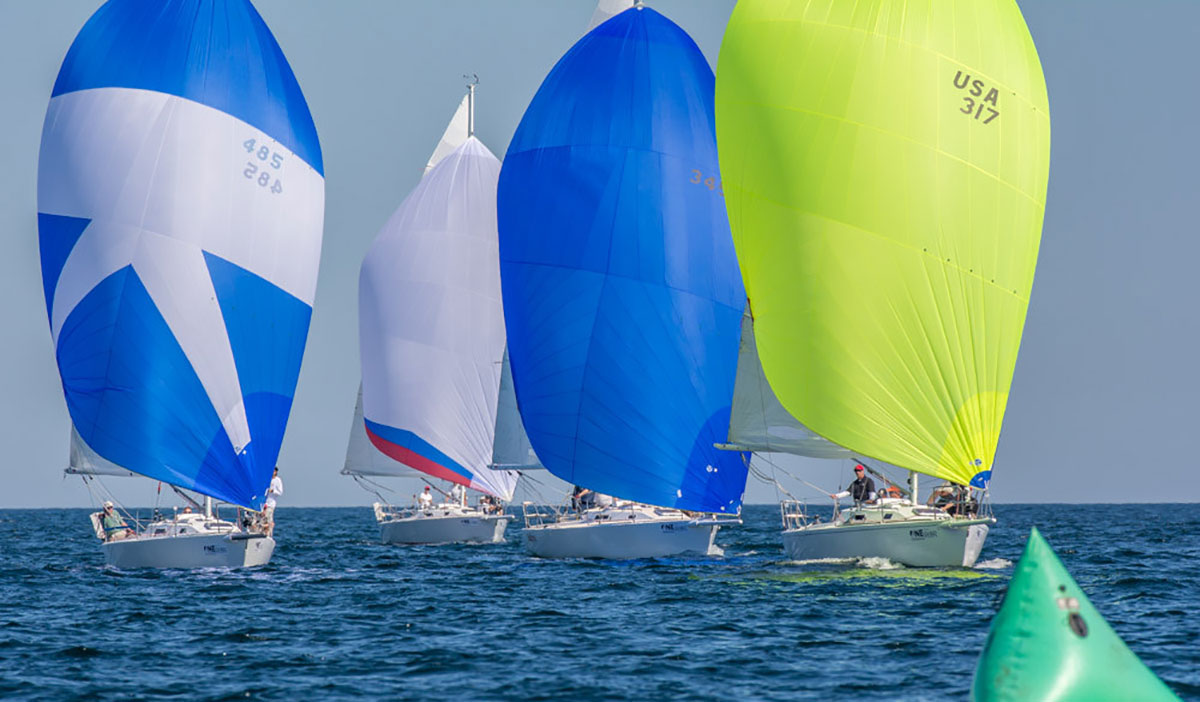
J/105 DOWNWIND TIPS AND TRICKS
J/105 DOWNWIND TIPS AND TRICKS
How to sail as deep as possible while still keeping your speed up
We often see teams get a little too relaxed when sailing downwind, even though this is where you will make the largest gains (and losses) when racing your J/105. You are trying to get to the bottom mark as fast as possible, so you need to sail as deep as possible while still keeping your speed up. Since the J/105 is primarily a displacement boat and doesn’t plane easily, the key is to coordinate several critical elements as you sail through velocity changes.
Puffs and lulls
Sailing with the wind, you will only see about half as many puffs as you did sailing upwind, so it is critical to designate one crew to call the breeze. A constant stream of verbal puff and lull communication will help keep your team in sync and anticipate the next change in velocity.
Helming
The goal for the helm is to minimize rudder movements while steering the boat downwind, using crew movement and sail trim to steer the boat. Make sure you are in a comfortable position with good visibility. We often see the helm trying to sit too far forward, which makes it difficult to steer accurately. As a driver, you are going to be working hard all race, so get comfortable!
Kite Trimming
The spinnaker trimmer and helm should maintain a continuous dialogue, discussing the pressure on the spinnaker and the correct angle to sail. “Up in the lulls and down in the puffs”…right? Yes, but make sure the angle changes are slow and smooth. As the breeze starts to drop, begin to “heat” up slowly—before the boat speed crashes—until you reach the angle that will keep your speed up in less breeze. When the puff returns, bear away and gradually build speed until you reach the new lower target angle.
In non-planing boats like the J/105, the goal is to get the spinnaker to rotate to weather, which increases its projected area and gets the sail out of the disturbed air behind the mainsail. To accomplish this we use both heel angle and tack line ease. In all but very light wind, keep the boat flat (or even slightly heeled to weather). This will also help the boat sail deeper in the puffs with less helm movement. Generally speaking, you can ease the tack line of the spinnaker as long as it goes straight up or to weather; if it goes to leeward when eased, keep it tight.
Weight placement
The J/105 is very responsive to weight placement, and moving crew weight to help turn the boat will minimize the amount of rudder needed.To head up, the crew leans to leeward; to head down, the crew hikes/leans to windward. In light air, we like to keep only the helm and main trimmer behind the cabin top winches; put the rest of the crew at the shrouds. As the breeze picks up, we move weight back just enough to keep the bow from digging in.
At least once a season, we like to completely empty the boat of EVERYTHING. This is a great way to see how much excess weight is on board, as well as an opportunity to pare back to the bare necessities.
Stabilize the rig
Keeping the rig from bouncing around in puffs and waves will mean the sails are pulling the boat forward and not just moving the mast. Apply enough backstay tension to make it “just snug”, and tension the jib sheets after furling to take the “slop” out of the headstay.
Four Modes of Downwind Sailing
Light air VMG
In VMG mode, the apparent wind will be around 90 degrees. Make sure the trimmers are easing sails in the puffs so the driver can work lower. The crew will be sitting forward and to leeward in the light spots, moving to the centerline and even up to weather in the puffs to help steer the boat down. Constant communication between the trimmers and helm is critical!
Moderate air running
The crew sits just behind the shrouds, heeling the boat to weather to help rotate the spinnaker out from behind the main. Ease the tack line as much as possible while keeping the spinnaker stable; don’t let the tack fall to leeward.
Heavy air running
The crew slides aft to help grind in the spinnaker and to keep the bow from digging in. If you are having a hard time steering straight, there is too much weight forward.
Wing on Wing
Sailing wing and wing can be very beneficial, especially for tactical reasons. Our recommendation is to sail conventionally, unless the water is very flat or you need to dig low for tactical reasons. A winged-out spinnaker is not as stable, and recovering from a collapse is very slow.
When all of these variables work in harmony, huge gains can be made by continuously sailing lower and faster and smoother than the boats around you. By working on these elements in practice and then applying what you learn on the race course, you can definitely “up your game.”
10 knots of wind. Crew forward and to weather to help the spinnaker rotate to weather. The tack line is eased to increase luff windward projection. Two people looking aft to ensure that we get into and stay in the puffs.
Crew forward and to weather with good spinnaker rotation.
Wing on wing in FLAT water. Crew forward and to weather with spinnaker trimmer holding sheet out to ensure that it is not affecting trim. Crew looking aft to help find puffs.
READ MORE
READ MORE

DESIGNER SPOTLIGHT: JUAN GARAY & JUAN MESEGUER
DESIGNER SPOTLIGHT: JUAN GARAY & JUAN MESEGUER
How Science And Numbers Guide North Sail Design
For the past decade, both Juan Garay and Juan Meseguer have been sought after by the most competitive inshore Grand Prix teams because they combine sailing experience and sail design expertise. Juan Garay works closely with the TP52 team Azzura and has worked with America’s Cup team Artemis Racing. Juan Meseguer has been a designer since 2000 and helped BMW Oracle Racing win the 2010 America’s Cup.
Today the two Juans are at the vanguard of ground-breaking monohull R&D, because the TP52 class is serving as a test and training platform for potential America’s Cup teams. Much of this development work happens behind the scenes at North Sails, powered by the North Design Suite. With this specialized software, the North design team is able to analyze performance in the most efficient way possible: on the computer.
Today North designers use the VPP tool within the North Design Suite to investigate how the changes they make to their sail designs impact the sailing performance.
“We’re applying high-end technology to aid people in making decisions. The VPP tool allows us to organize all of the inputs to the yacht’s performance in one model.,” explained JB Braun, Head of Design and Engineering at North Sails.
“How do we design the sail? What sails do we put together for the best performance package? What impact do different designs have on boat speed? VPP allows us to answer all these questions. Juan G. and Juan M. are using the VPP tool to help teams improve their performance with better-designed sails.”
The advantage of working with VPP is that North designers can deliver a more optimized inventory from the start. “We remove a level uncertainty that you can not achieve without the tool,” remarked Juan G. “We run tests to see the cause and effect of different variables. The tool cuts down on the experimenting and guesswork of a large test sail inventory. VPP gives North designers better information to deliver more accurate designs before the boat hits the water. An inventory designed with good VPP saves a team budget, but also valuable time because you are working with sails that we feel already have a head start.”
Above is an example of a TP52 cross-over chart showing VPP results comparing a light vs. all-purpose (AP) mainsail. The results show the light mainsail (blue light) is the optimal choice in 8-11 knots, whereas you’d want to switch to the AP in more wind. Overall, the VPP gives designers an opportunity to predict how much faster a sail will be in given conditions, and rework their designs if they want a different wind range.
“The TP52 is an example of the most competitive fleet that we have right now,” says Juan Garay. “And it’s like a football game because everything is moving so quick and hectic. It’s very important to be part of the sailing team, to understand what they want.”
Juan G. recently wrote a paper entitled Quantifying Gennaker Performance by Virtual Wind Tunnel-VPP simulation in the TP52 Class. “The purpose of this new process is to have the ability to give a quick answer in a short period of time. North Sails Virtual Wind Tunnel is used to generate sail force data that in turn powers the VPP,” he explains. Combining two tools within the North Design Suite provides quicker results for initial performance analysis.
Our first question for Juan G. was to translate the article from designer-speak to something our customers could digest. “We can go into very deep studies, but sometimes the full analysis is not needed and we want to have an answer in two or three hours,” he says. “I cannot tell you exactly if will be 9.2 knots, but I can tell you that it will be .2 knots faster than the previous . These small differences are important in classes like the TP52 where teams are looking for inches rather than big gains.”
A screenshot from VPP, the NDS tool that Integrates rig, sail, hull and appendage performance data allowing North Sails designers to customize and refine sails for virtually any boat with unprecedented precision
North Design Suite Importance
Juan G. says the North Design Suite has industry-wide impact. “While the development in the TP52 fleet is what makes the news, the impact of this work is transferred to all sails that North designs. We have tools to help make any boat fast, tools like VPP, Membrain™ and Flow™. We can help designers build better boats through our Design Services department, we can improve a boat’s performance, and we can help sailors improve trimming of the sails and their setup. All of this is made possible by using the North Design Suite.”
A screenshot from Flow, the program within NDS that applies wind pressure to sail surface and calculates forces created
Juan Meseguer agrees the software is very important to North’s leading role in the industry.
“There are a lot of good sail designers out there who do not work for North Sails. They’re good competition for us because we cannot sleep. But our access to the North Design Suite is unique to our company and allows us to deliver more exact sails, while also limiting the amount of ‘test’ sails a program needs to purchase.”
How important is the North Design Suite to the work Juan G. and Juan M. are doing? “Everything goes through the North Design Suite. We use it daily,” says Juan G. “It is the best sail design software. There’s nothing even close to it on the market. We are good designers, but the software is a big part of how good we are.”
“Sail designers are tailors,” he continues. “Every sail is unique. Our job is to make a sail fit perfectly on the yacht. It is essential to take and input the proper measurements into the software. Whether we have AutoCAD drawings for a new project or exact measurements for older boats, getting it right is key to getting the sails to fit. Beyond that, there are variables: is the boat heavy or light, are we dealing with a carbon or aluminum mast, etc. With the 52’s we have a lot of detail, as specific as where the jib tack will be placed. The more detail we have, the better we can design the sail.”
Design Team Collaboration
Both Juan’s also mention collaboration among 80 experienced designers as a significant company strength. A designer working on a multihull project in North America can employ the expertise of a designer in France who’s worked on projects for Francois Gabart’s MACIF and Thomas Coville’s Sodebo. “Someone really specialized can speed up any sail designer on the specific task or specific boat,” Juan G says.
“I can ask any other sail designer in the company and they can give me the best starting point. That’s the strength of North.”
Juan M. describes how collaboration helped move the entire TP52 fleet forward in 2017. “We exchanged all our ideas and a lot of experiences throughout the season. We shared a lot of good ideas that led to next steps of design, and we also debriefed what went wrong. Which boats were fastest in which conditions, which designers worked best for which teams, etc. Everything was independent during the season, but we all come together in the end and agree on next season’s ‘baseline’ package. The baseline is used for new teams who are coming into the class for the first time. We have very high standards, and I am confident any team could be competitive with these designs.”
The North design team can also bring together an unprecedented depth of experience to solve a specific problem. At a recent meeting, nine designers focused on optimizing the North Design Suite for the America’s Cup monohull designs that will soon be announced. Juan M. points out that;
“Nine is more than other brands have on their entire staff, but it’s only a fraction of the North design team. Add up their cumulative experience, knowledge, and ideas, and it’s no wonder why North Sails has become the authority on sail design.”
Want to read more stories like this? Sail back to 1977 to get the full scoop on how digital sail design all began here at North Sails.
READ MORE
READ MORE
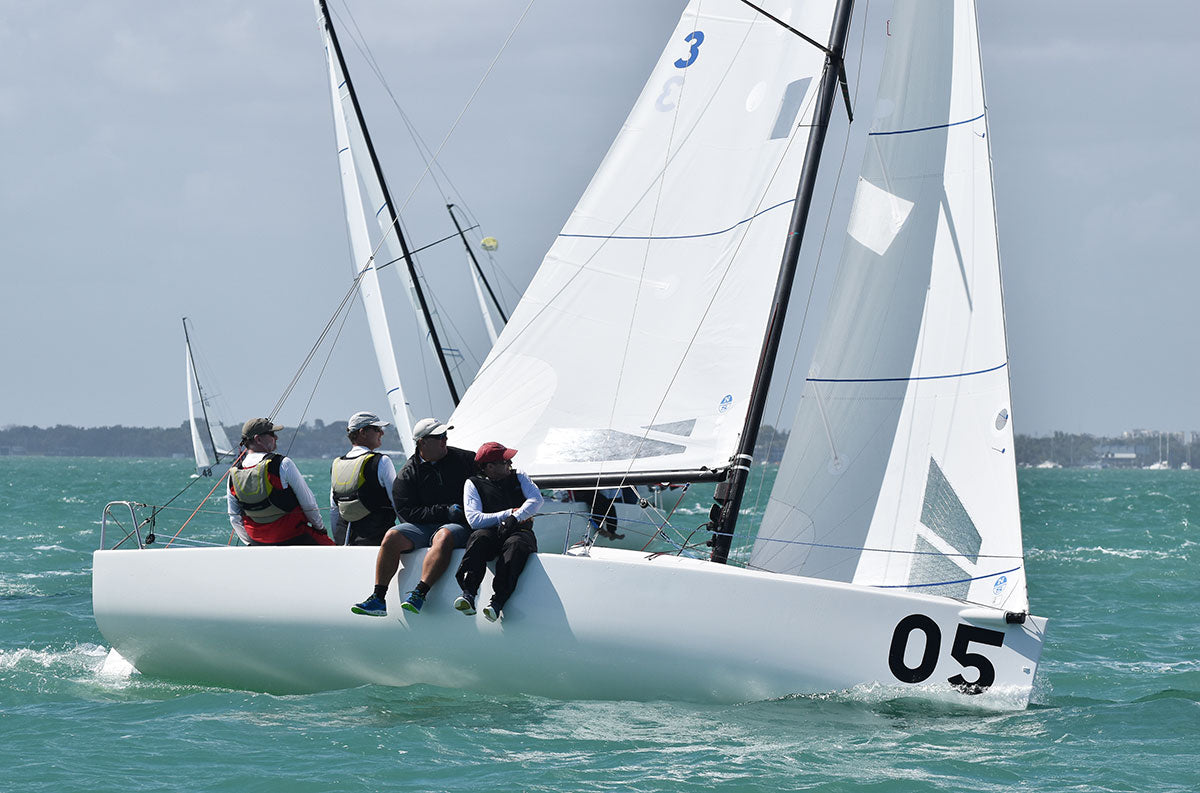
NORTH POWERS 1,2 AT THE J/70 MIDWINTERS
NORTH POWERS 1,2 AT THE J/70 MIDWINTERS
Following up on wins at the Davis Island Winter Series and North Americans, North customers win again – Jack Franco (Open Division) and Jenn & Ray Wulff (Corinthian Division)
Jack Franco’s 3Ball JT, 2018 J/70 Midwinter Champions
The J/70 has become one of the most competitive classes in one-design racing and North clients have consistently taken the top spot on the podium. In fact, North products have powered the winners of all three events at the US Winter Series and the North Americans, proving again that North has the fastest J/70 sails available. Jack Franco’s 3 Ball JT did it again last weekend in Miami, sailing to success in a 61-boat fleet with consistent single-digit race results in a variety of conditions. We caught up with North Sails’ Allan Terhune who sailed on the 3 Ball JT to learn what worked for them:
There were a few things we worked on diligently on the 3 Ball JT both during practice and also during the actual regatta to make sure it was a success.
Practice
We worked hard on two things during practice.
Have the maneuvers down. It is imperative to be able to turn the corners cleanly.
Do as many line ups as possible to have confidence in the settings – rig tune and sail trim. We have marks on everything to make sure the “fast” settings are repeatable.
Make practice pointed and concise. Its very easy to over practice leading up the event and end up being tired. Having a detailed plan and goals went a long way to getting the desired results from the sessions.
Great Starts are Key
We had great starts throughout the Midwinters, other than our BFD which happened on a general recall. The goal for is to identify a general area on the line where you want to be and then focus on finding space. It’s a team effort:
Bow guy calls time
Jib trimmer talks distance and speed control
Mainsail/Tactician calls on speed and positioning
Driver focus on the execution of the acceleration when it is time to go.
Sail Trim
Mainsail – Make sure the mainsail is trimmed in a way to help keeping the boat flat. De-power or power-up to keep the boat from heeling back and forth. This is crucial for good steering.
Jib – It is important to trim the North J-6 jib with the correct ratio of in-haul to leeward sheet. We sailed with the halyard a tad looser than normal so the jib was a little fuller to get us through the chop. When we needed to ease for power, we eased the leeward sheet not the in-haul. The only time the in-haul was eased was when the main started to luff. The J-6 proved to be a real weapon in the Biscayne bay chop.
See also: How to Trim Your J-6 for Max Speed
Steering
This is the hardest part of the boatspeed wheel and Jack did a great job for us. The groove is quite fine and it’s very easy to be too high, which is easy to identify as the luff of the jib will go soft and the inside tell tale is up. But the critical error is to be TOO LOW. The boat heels and doesn’t go any faster and you lose a lot of height if you get too low. This is common in chop. If the leeward tell tale is ticking hard, you are generally too low.
Remember it’s a team game.
We would not have had success without the four of us doing our jobs, communicating well and always working at it. There was never a down moment on the boat (Ok thats not true, the BFD penalty was a bummer) but we work hard on being positive and not letting any other team out work us. Keeping it light, communicating the important points and thinking the situations through will lead to great results.
2018 J/70 Midwinters
Open
1, 2, 4*, 5, 8, 9*, 10, 11, 12, 14, 15, 16 – Congratulations Jack Franco!
Corinthian Division
1, 4, 5, 6 – Congratulations Jenn & Ray Wulff!
* Denotes Partial North Sails Inventory
Jenn & Ray Wulff’s Joint Custody, winners in the Corinthian division
Joel Ronning and team Catapult, 2nd place at the J/70 Midwinters
Brian Keane, winner of the Davis Island Winter Series, flying fast at the Midwinters
John Brim’s Rimette, powered by North Sails
Will Welles’ Scamp, sailing with our sail designer Mike Marshall
READ MORE
READ MORE
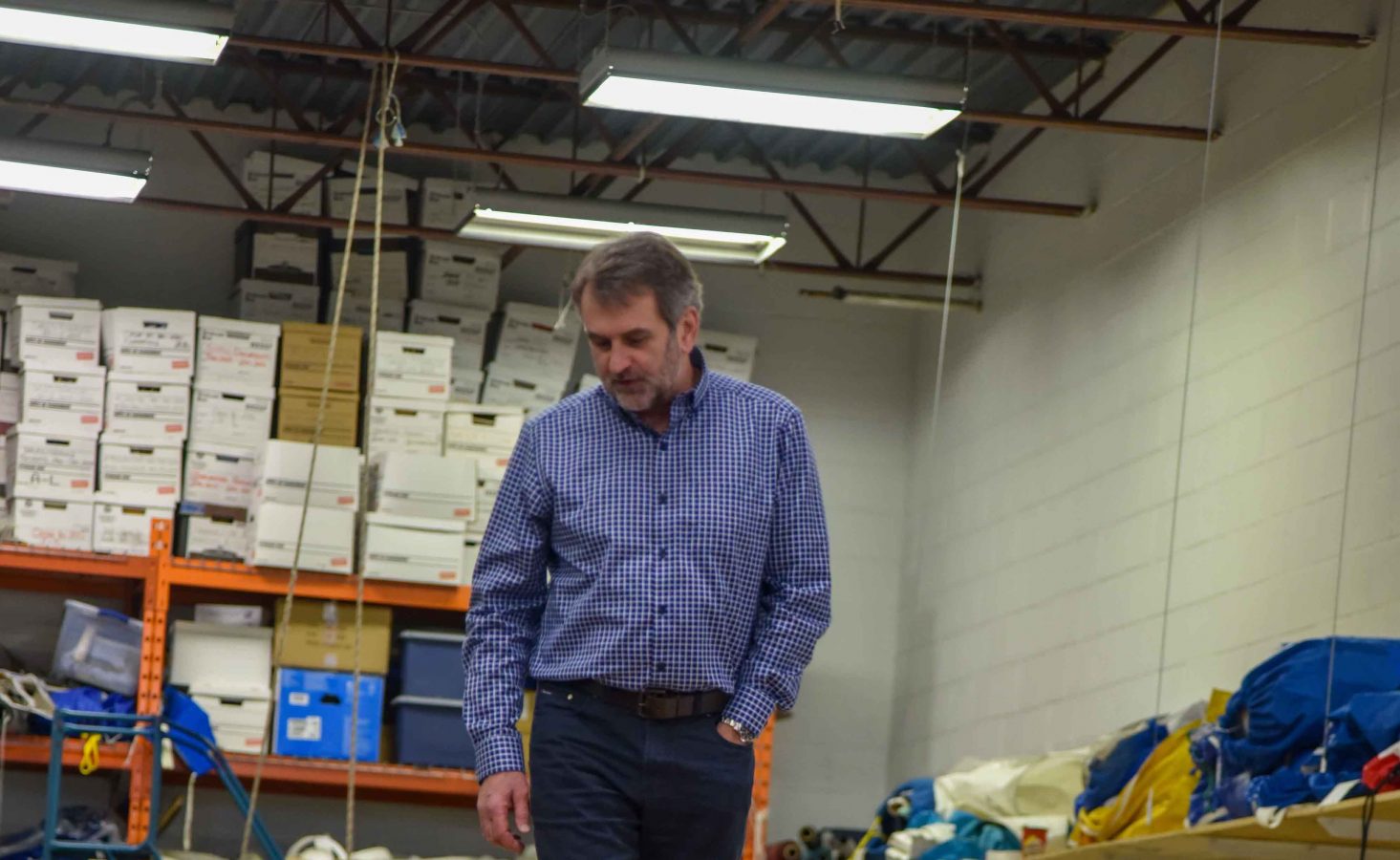
WHO WE ARE: HUGH BEATON
WHO WE ARE: HUGH BEATON
Get to know your local sales expert
What do you sail? How long have you been sailing?
I learned to sail in Barrie ON, working through Lasers, 470, International 14 and small keelboats.
What boats/classes do you sail?
Early in my career I was introduced to the International 8 Metre, which quickly became my class of choice working with over 40 boats from 12 countries. The boats are beautiful to sail, and highly technical making them an ideal platform for North Sails' range of design services and 3D manufacturing. I have attended 21 World Championships winning 9 titles along the way. It has been very rewarding to work with so many great sailors, and to develop products and tuning guides for the class.
Aside from the 8s, Hugh enjoys distance racing on the Great Lakes, and cruising with his family in the North Channel area of Lake Huron.
What got you into the marine industry?
I started in the marine industry by working at local sail loft during summers while attending the University in Toronto. During this time, I learned to design and build spinnakers - developing a passion for racing IOR boats throughout North America.
How long have you been working in the industry?
I joined North Sails in 1990 and was privileged to work with some great people in the Toronto office: Hans Fogh, Steve Calder, Bruno Dubois, Larry MacDonald to name a few.
READ MORE
READ MORE

WHO WE ARE: LOUISA SONOSKY
WHO WE ARE: LOUISA SONOSKY
Get to know your local sales expert
What do you sail? How long have you been sailing?
I’ve been sailing since I was a kid in middle school flipping between dinghies and keelboats. I grew up sailing Hobie’s and Laser’s at camp while my father had a Beneteau 36.7.
What boats/classes do you sail?
The last classes I sailed were J/24s and Beneteau 36.7s.
What got you into the marine industry? What’s your favorite aspect of working in the industry?
I started in the marine industry through a Summer job at a local chandlery, Fogh Marine, and ended up working there for 7 years; learning just about everything I could about sailboats. I definitely was not the most knowledgeable when I started as I had taken a bit of a hiatus from sailing during my teenage years, but over the years I learned a ton thanks to colleagues and customers. My favorite aspect of working in this industry is getting to spend time on the water and photographing regattas.
What is your earliest sailing memory?
My earliest sailing memory is sailing at camp. It was a sunny – but chilly – day and they took us out in a small Hobie Bravo.
How long have you been working in the industry? What keeps you coming back for more?
I have been working in the marine industry for 8 years now – time flies. For me, what keeps me coming back is the people you meet and the stories they have! Everyone has a story and it’s great getting to know the different paths everyone took to get into sailing.
If you could have any boat in the world, what would it be? And why?
I’ve always wanted a J Boat; either a J105 or J97E. Photographing J Boats has always been one types of boats to photograph – the crisp lines can’t be beat.
READ MORE
READ MORE

OUR TYPICAL MORNING REGIMENT, ONE FLAKE AT A TIME
OUR TYPICAL MORNING REGIMENT, ONE FLAKE AT A TIME
A birdseye view of a typical morning with our service team at the North Sails Toronto loft
Kidd and Joel hard at work on varies sails in for our 10 Point Inspection. They provide a glimpse into a typical morning at the loft, demonstrating a sails journey from start to finish when in for service. While Summer is the height of our teams’ busy season, they are equally full during the offseason getting everything ready for another season on the water. Sail washing is our most popular offseason service type.
https://youtu.be/dCObHN7ODo4
READ MORE
READ MORE
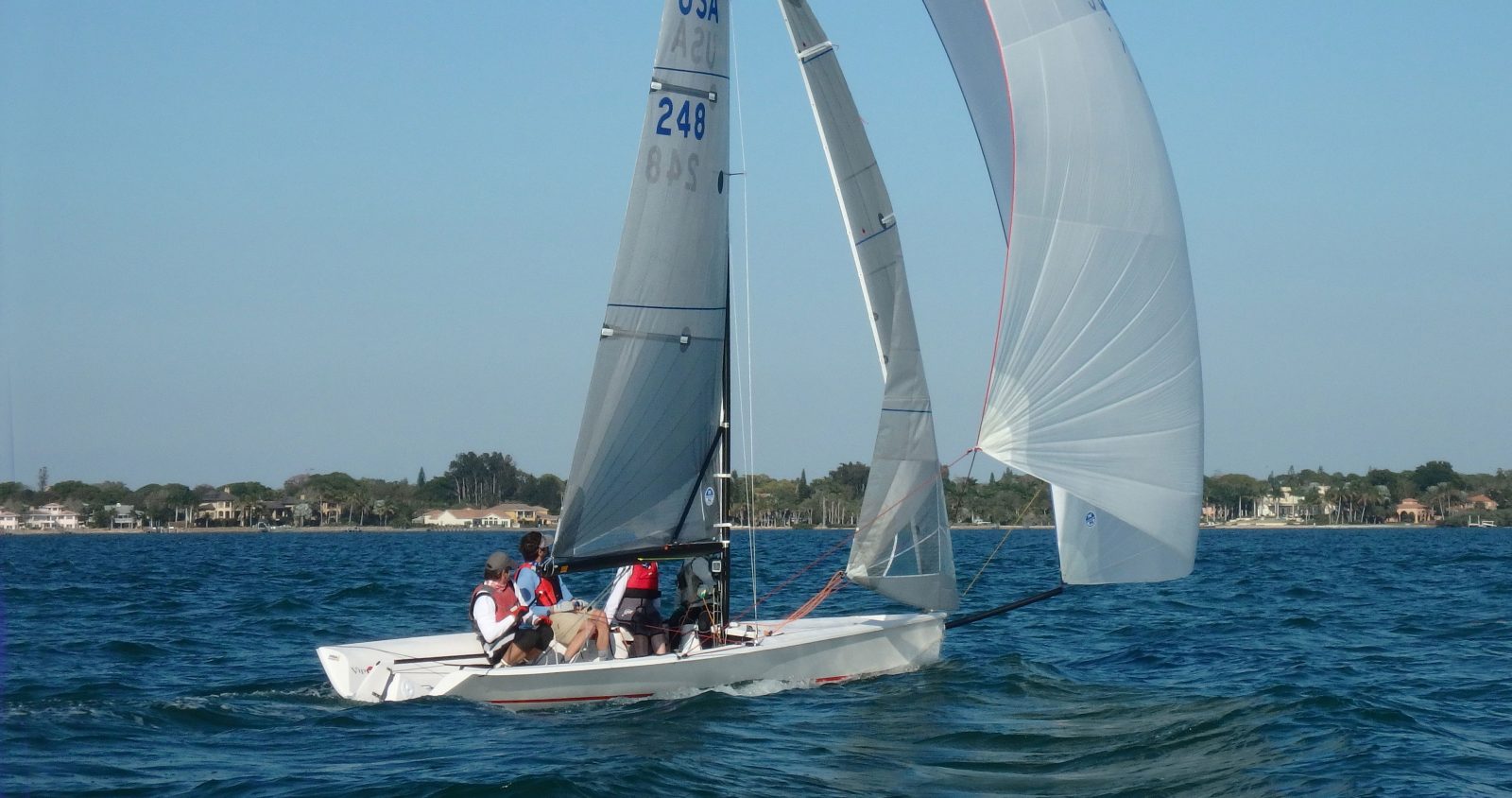
GYBING LIKE A HERO
JIBING YOUR VIPER 640: HERO OR ZERO
Boat Handling Goes A Long Way
Whether you are gybing your Viper in 5 knots, 15 knots or 25 knots, A LOT can be gained or lost. Having the confidence that your crew can nail a stellar jibe at just the right moment in any condition is a truly liberating feeling that can see your team leaving other boats in the dust. No matter how much wind there is, the keys to a successful jibe are:
Steering with your body weight
Rate of tiller movement
Getting the spinnaker filled on the new jibe
Hitting the exit angle
CONVENTIONAL JIBE
If the wind is very light (under about 6 knots or so) you should try doing a “conventional jibe”. This method guarantees that the spinnaker is going to make it around the headstay (as long as everyone keeps their feet off the sheets!) which takes away the risk of messing up the “blow thru” part of the blow thru-jibe. There is nothing worse than having to pull the spinnaker off the windward side of the jib after failing to execute a blow-thru in light air. You’re dead in the water!
To execute the conventional jibe, the first thing to do is move body weight to weather to induce a down turn. The turn down can be slow so don’t move the tiller too much at first. The trimmer should slowly ease the sheet out as the boat turns down until they feel the pressure leave the sheet. This is usually right at about dead down wind with the clew of the kite eased to being nearly even with the head stay.
At this point, the trimmer drops the existing sheet and starts whaling on the new sheet, pulling it around as the helmsman speeds up the rate of turn, ultimately hitting the right exit angle, which needs to be high enough on the new jibe that the spinnaker is able to fill. This depends a lot on how light it really is. Whatever the crew can do to generate a bit of roll throughout this process is really helpful to keeping the speed up in the jibe.
Both the helmsman and the forward crew should stay on the old windward (or new leeward) side as long as it takes for the trimmer to fill the kite and get situated on the new board. There is always time to cross the boat!
BLOW-THRU JIBE
As soon as the wind is above 6 knots, we use the blow-thru method all the way up the wind range. To execute a good blow-thru, first be sure that both sheets are ready to run clean. Just like in light air, it is important to try to steer the boat with body weight, so have all the crew lean to weather to start the jibe.
As the boat begins to turn down, the trimmer should give 1-3 good pumps of the existing sheet (depending on how long their arms are!) which flattens out the spinnaker and makes it easier for the breeze to now fill it on the new side. The jib trimmer can also trim the existing sheet in at this time.
It’s very important that, after the initial down turn using body weight, the helmsman really tugs the tiller and turns sharply. The forward crew should have to hang on tight so they don’t get ejected! A good blow-thru means that the kite goes from full one side to full on the other side as quickly as possible. Doing a fast turn enables a quick transition for the kite so practice over-exaggerated turns and then start to slow yourself down if you are too quick (I bet you won’t be!).
As we are passing dead down wind and the spinnaker has lost all its pressure (and while the helm is still hard over) we recommend having the forward crew reach up to the spinnaker clew and give it a nice yank down and back. This puts tension on the leech and flattens the sail, making it much easier to fill onto the backwinded jib. A critical part of the sail actually blowing around the headstay is that it actually fills from the leech first. This little yank makes this much for likely to happen.
At about the same time the forward crew does the yank, the trimmer should now be over to the new sheet which should only require a few big pulls since the wind is now doing most of the work for you. This is the time when it is really important that the helmsman finds the right exit angle. As soon as they see that they’ve turned fast enough to execute the blow-thru, they can slow the turn down a bit and start to try to feel the boat based on its heel angle. If the boat is dead flat, you need to keep turning up to the appropriate exit angle. If you feel you’re starting to wipe out….. Time to ease the sheets, get to the high side and try to turn back down a bit! (scooting aft in the boat can help avoid a wipe out too)
After the kite is all the way around the head stay and filling on the new side, the jib trimmer can go ahead and switch the jib as well. The method of this jibe really doesn’t change much in the different wind speeds – you just need to practice a lot in all conditions to hone in on the variables like rate of turn, exit angle, and how much sheet you need to go through.
HEAVY AIR
If you are starting to get towards “survival conditions” for your team, you can reintroduce the “conventional jibe” again. It may be a little less risky in terms of wiping out. The key here is to try to find a good wave to surf down as you begin the jibe so that the load on the sails decreases. As you are surfing down the wave, you can ease the kite out a few feet, get to dead down wind and then flick the main over and cross the boat. Once the main and the crew have switched sides, the boat becomes a lot more stable. Then the trimmer can pull (hard!) on the new sheet to start to pull it around as the helmsman conservatively turns up to find the angle where the kite will fill again. This method won’t be quite as fast as a perfectly nailed blow-thru jibe in 25 knots, but it is a heck of a lot faster than turning over from messing one up!
READ MORE
READ MORE
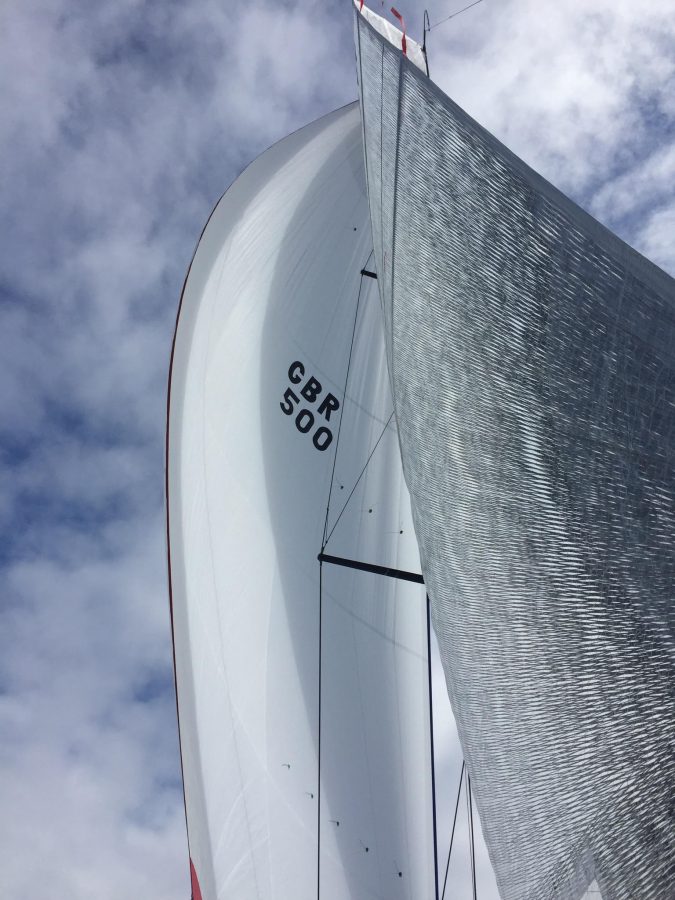
THE IMPORTANCE OF SAIL SELECTION
THE IMPORTANCE OF SAIL SELECTION
Shane Hughes tells us about the A-Zero and the longevity of North sails onboard Melges 32 ‘Red’ at the Regata Chiloe Santander in Chile
This January, North Sails Shane Hughes left the cold Irish weather and the Northern hemisphere behind and headed south to Chile to compete in the bi-annual Regata Chiloe, one of Chile’s biggest and most prestigious regattas based around the beautiful southern island of Chiloe and the protected waters between it and the Chilean mainland. Shane had been invited by Pablo Anfruns and Rudolf Mijac to race with their team on the Melges 32 Red. For those who have not experienced it, Melges 32 racing is fantastic fun. The boat is very powered up and can easily sail in as little as 4 knots of wind but really comes into her own in 15 knots plus downwind! Having had a break away from sailing the 32 for a few years, it reminded me what a truly special boat it is. With only one other Melges 32 based in Chile right now (the newly acquired ‘Pepe Pato’ owned by Jose Tirado and Patricio Lopez) both boats were entered into the IRC division, not historically the Melges 32’s strong point with its big sail area and light displacement. So expectations were set firmly in pessimistic mode. However, Shane underestimated how the format of the regatta along with the traditional winds for this event (light!) would play into the Melges’ strengths rather than its weaknesses. Thankfully Pablo, the helmsman, and co-owner had not overlooked these factors and this had formed his reasoning for purchasing the Melges 32. The regatta format is a mix of coastal races, with some inshore windward-leeward races. While the 32 would struggle a little on some of the inshore races, the longer coastal races actually suited the boat, especially with downwind or light upwind legs.
©Regatachiloe.cl
One area of concern in the lead up to the regatta was the absence of a Code Sail on the Melges 32. The boat had been almost exclusively raced in One Design configuration, with no need for any code sails, but this regatta format demanded a sail that would work on the reaching and super light wind legs. With the help of Dave Lenz in the North Sails UK design office, we set about designing an A-Zero for the race. With such a long bowsprit the Melges 32 does not offer the option to set a true Code Zero sail, as you can not generate the cable/luff tension required to furl the sail properly thus the choice of an A-Zero which is hoisted, deployed and retrieved the same as any other spinnaker onboard. This in itself presents a challenge because if you build the sail from too stiff a material (laminate or 3Di) the sail will be very difficult to hoist and recover through the fore-hatch but use a softer nylon material and the sail will not have the stability to retain its flying shape, especially as an IRC zero which requires a big mid girth (>75% of foot length) . The compromise we struck was with Contender’s MaxiKote 200P. A great choice that produced a really stable sail shape that was easy for the crew to handle and work with. We also added North’s Velcro stop tabs which allowed us to roll the head and tack sections to make strong wind hoists easier and safer. The sail performed superbly and despite us using it infrequently (as is often the case with code sails!) it ended up winning us a coastal race where we were trailing our opposition Melges 32 for 70% of the race up until we hit a parking lot under a headland. They hoisted their biggest A2 Asymmetric and we hoisted our A Zero. From 100 meters behind, we sailed straight by them and even caught up to the other boats in our size range! We hit the new breeze first and won the race by some distance! The lesson learned, bigger is not always better especially in very light conditions. Shane stated:
"We used a full North Sails inventory, which bar the new A Zero, was from 2011 when the boat competed in its last World Championships in Palma. The Main and J1/Light jib were 3DL, while the J2 and J3 were 3Di Endurance. The A-2 asymmetric we used was a little newer, both made of AirX nylon. It really was a testament to the durability of both 3DL but especially 3Di that the sails had retained their flying shapes incredibly well. Granted they had not been used extensively in the interim but as you will see in the below pics, you would not guess they were 7-year-old sails."
The 3DL sails were just beginning to show the first signs of de-lam in high-density fiber areas and while this did not affect the performance of the sail at all, it does highlight what a huge advantage 3Di has over all of the ‘string’ sails from this perspective. The 3Di sails still looked brand new! No ill effects of being sat in the bag for that extended period. Unfortunately, the predominantly light winds meant they mostly remained in their bags, but the J1 held up superbly and ended up being the workhorse headsail for the team. At the end of a thoroughly enjoyable weeks racing, both Melges 32’s ended up at the top of the leaderboard with our team taking the win. This surpassed expectations on all fronts for the owners, especially in their first year in the boat. This promotes the future growth of the Melges 32 in Chile. There was quite a lot of interest in the boat, especially regarding its performance against other boats of similar size in the coastal races. Find out what we can do to improve your sail inventory or get in touch with one of our experts here!
©Benjasans.com
©Regatachiloe.cl
READ MORE
READ MORE

RORC CARIBBEAN 600: BAM SAILS TO WIN HER CLASS
RORC CARIBBEAN 600: BAM SAILS TO WIN HER CLASS
BAM wins her class in RORC Caribbean 600 crediting North Sails speed and reliability
Conor Fogerty, skippering the smallest boat in the fleet, his Jeanneau SunFast 3600 BAM, won his class in the RORC Carribean 600. The race was very windy with Conor and his team emerging victorious after five days of wet and wild racing. Conor has been working on his sail inventory with Maurice ("Prof") O'Connell from North Sails Ireland since the first launch of "BAM" in 2015, notching up an OSTAR win and a previous class win in the C600 in 2016. He took delivery of a new 3Di offshore main just prior to the C600 this year.
Speaking after the race Conor was fulsome in his praise of North Sails ;
"The new main is perfect, it was great to be able to totally rely on our sails, whilst boats around us dropped off due to sail failure. "BAM" returned to Antigua with a full intact wardrobe, and a class win which were are delighted with!"
Congratulations also to the HYC team on Pata Negra who finished 2nd in their class. Great racing for Irish offshore teams!
© RORC Racing / Tim Wright
© RORC Racing / Tim Wright
© RORC Racing / Tim Wright
© RORC Racing / Tim Wright
READ MORE
READ MORE
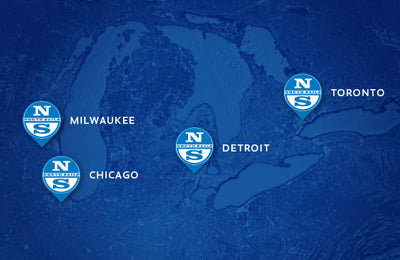
GREAT LAKES. GREAT RACES.
GREAT LAKES. GREAT RACES.
Our Top 5 To Tackle
A perfect combination of pristine waters, spectacular scenery and ever changing weather conditions makes the Great Lakes an exciting place for sailors of all levels. Distance racing in this unique environment can teach even the oldest dog new tricks. From helming, sail trim, navigation and night sailing, the entire crew can take part and experience the thrill of offshore racing. Our team have picked their favorite races across the Great Lakes to take on this year, have you signed up to any yet?
“The Bayview Mac is more than a race, it's a life experience. From week long activities leading up to the start, to the awards party on the island, there is fun for everyone! This race draws more attention to the sport we love, and in my 30+ years of taking part in this race, I have been able to share experiences with so many other racers. Once you have sailed it with someone, you have developed a lifelong bond.”
- Karl Kuspa, North Sails Expert, Detroit.
Register now to start planning your season of sailing and talk to your local team about how North Sails 3Di is the #1 choice for offshore distance racing.
Lake Erie Interclub Cruise
Lake Ontario 300
Bell's Beer Bayview Mackinac Race
CYC Race To Mackinac
Lake Superior International Offshore Series
READ MORE
READ MORE
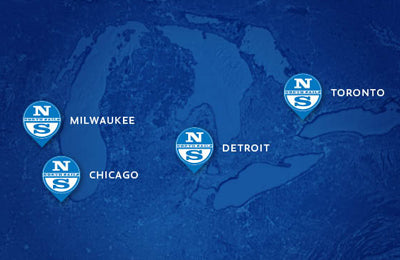
GREAT LAKES. GREAT RACES.
GREAT LAKES. GREAT RACES.
Our Top 5 To Tackle
A perfect combination of pristine waters, spectacular scenery and ever changing weather conditions makes the Great Lakes an exciting place for sailors of all levels. Distance racing in this unique environment can teach even the oldest dog new tricks. From helming, sail trim, navigation and night sailing, the entire crew can take part and experience the thrill of offshore racing. Our team have picked their favorite races across the Great Lakes to take on this year, have you signed up to any yet?
“The Lake Ontario 300 has become one of the most significant races on Lake Ontario, entering its 29th edition in 2018. Having done this race many times, including the first one in 1990, I have learned something new each time. One of the most important takeaways from races like this is the value of seamanship and thoroughly enjoying your time on the water.”
- Hugh Beaton, North Sails Expert, Toronto.
Register now to start planning your season of sailing and talk to your local team about how North Sails 3Di is the #1 choice for offshore distance racing.
Lake Erie Interclub Cruise
Lake Ontario 300
Bell's Beer Bayview Mackinac Race
CYC Race To Mackinac
Lake Superior International Offshore Series
READ MORE
READ MORE
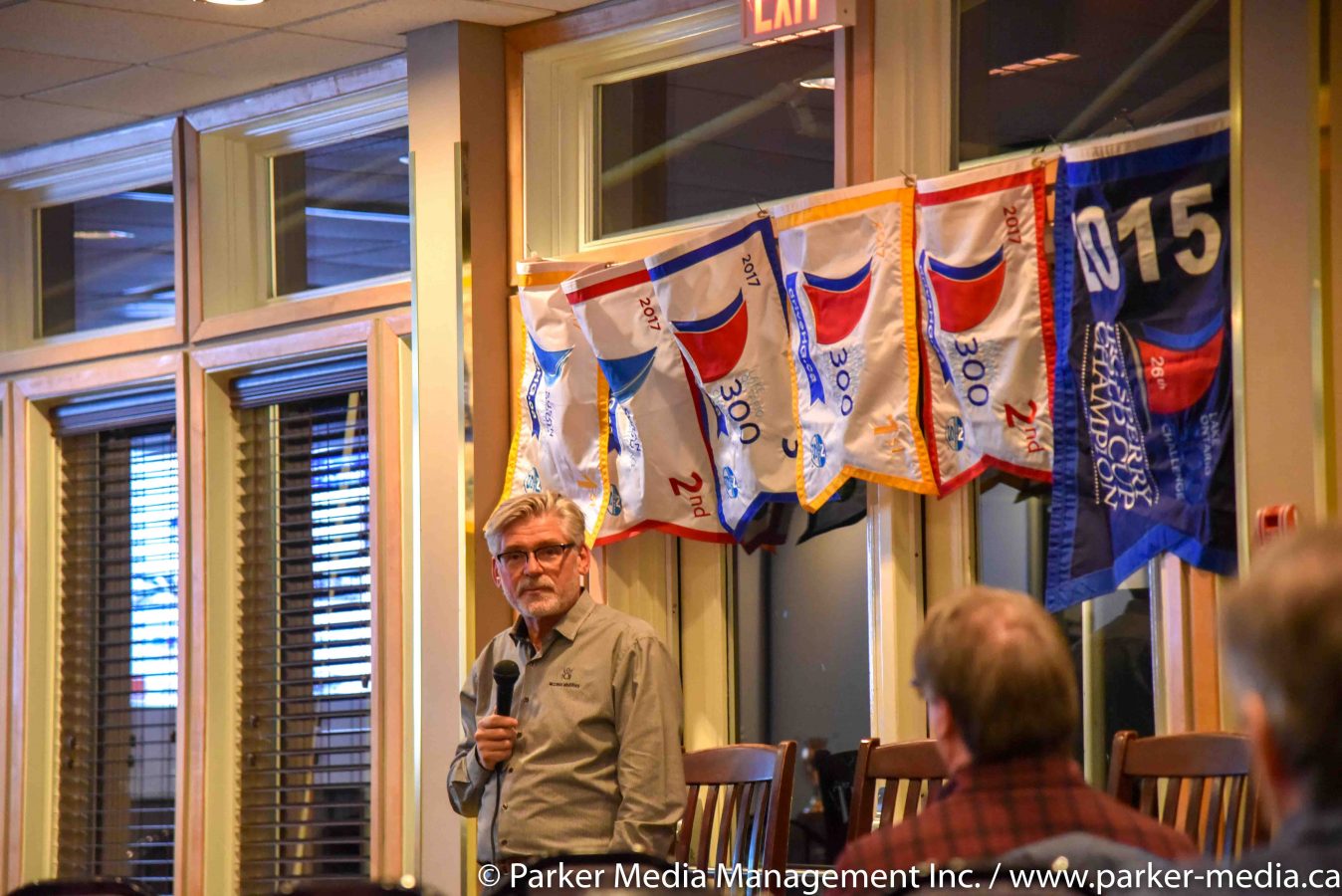
SPEAKERS NIGHT WITH LAKE ONTARIO OFFSHORE RACING
SPEAKERS NIGHT WITH LAKE ONTARIO OFFSHORE RACING
An evening of seafaring stories & laughs
Racers gathered this past Wednesday at Port Credit Yacht Club to share their tales from the race course. Countless stories were told from years past with many racers highlighting favourite seconds from the Lake Ontario 300 and the Susan Hood Trophy Race.
Local North Sails expert, Hugh Beaton, was on hand to partake in the evening with North Sails Toronto providing several swag prizes.
READ MORE
READ MORE
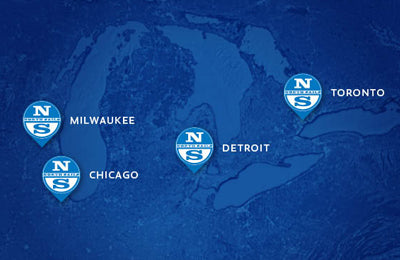
GREAT LAKES. GREAT RACES.
GREAT LAKES. GREAT RACES.
Our Top 5 To Tackle
A perfect combination of pristine waters, spectacular scenery and ever changing weather conditions makes the Great Lakes an exciting place for sailors of all levels. Distance racing in this unique environment can teach even the oldest dog new tricks. From helming, sail trim, navigation and night sailing, the entire crew can take part and experience the thrill of offshore racing. Our team have picked their favorite races across the Great Lakes to take on this year, have you signed up to any yet?
“CYC's Race to Mackinac remains the single most important focus for many Lake Michigan Sailors. Not only does the race end in a truly beautiful and fun spot, but it offers uniquely different and challenging conditions along the way - from excruciatingly slow drifting to exhilarating summer thunder storms, to upwind bashing.”
- Perry Lewis, North Sails Expert, Chicago.
Register now to start planning your season of sailing and talk to your local team about how North Sails 3Di is the #1 choice for offshore distance racing.
Lake Erie Interclub Cruise
Lake Ontario 300
Bell's Beer Bayview Mackinac Race
CYC Race To Mackinac
Lake Superior International Offshore Series
READ MORE
READ MORE
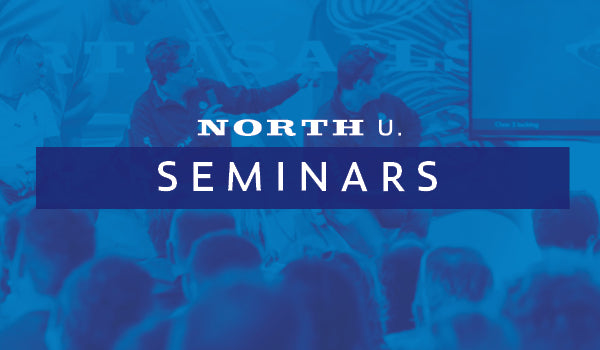
NORTH U TRIM SEMINARS COMING TO THE MIDWEST
CALLING ALL SAILORS IN THE MIDWEST
North U Trim Seminars Are Coming To A City Near You!
The North U Racing Trim Seminar is offered as a one-day course focusing on boat speed and sail trim, and it's coming to your city! Two locations, back to back, Chicago and Milwaukee. Get the most out of your sailing experience and up your game on the race course!
WHERE?
CHICAGO-MARCH 3RD
DePaul University
Lincoln Park Campus
2320 N. Kenmore Ave.
Chicago, IL 60614
(near Fullerton & Halsted)
Seminar Location: Schmitt Academic Center
Room: SAC-161
MILWAUKEE- MARCH 4TH
Hosted by the University of Wisconsin-Milwaukee Sailing Team!
University of Wisconsin-Milwaukee
3210 N. Maryland Avenue
Milwaukee, WI 53211
Seminar Location: Lubar School of Business
Room: TBA
Can’t make a seminar in your location? Try our Trim Webinar, available on-demand anytime.
“You’ve got to be fast to win!”
North Sails President Ken Read – AC TV commentary
Turning sailors into racers and racers into winners. Sign up HERE!
READ MORE
READ MORE
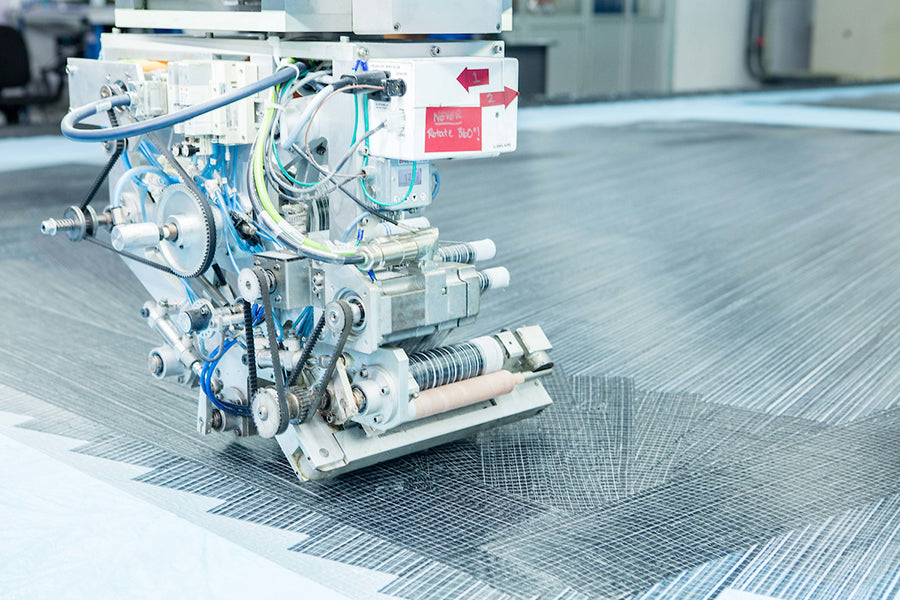
NORTH SAILS COMPLETA SU EVOLUCIÓN HACIA LA TECNOLOGÍA 3Di
NORTH SAILS COMPLETA SU EVOLUCIÓN HACIA LA TECNOLOGÍA 3Di
El comienzo de 2018 marca un hito en la historia de North Sails. La velería líder mundial completa un ciclo de diez años de transformación desde su tecnología de 3DL, velas laminadas en 3D, a estructuras de composite moldeadas 3Di. Las plantas de la firma en Minden (Estados Unidos) y Sri Lanka ya sólo fabrican 3Di, la vela de mayor éxito de la historia.
North Sails lideró la tendencia de construcción laminada de mylar e hilo con sus revolucionarias velas 3DL, que dominaron la velería de altas prestaciones desde principios de 1990 hasta la America’s Cup de 2007. Con la aparición del 3Di, la compañía fue abandonando la producción de velas laminadas a favor de estructuras 3D de composite con filamento esparcido y preimpregnadas. Las velas 3Di proporcionan propiedades de conservación de la forma y de durabilidad muy superiores a cualquier otra vela de construcción laminada. El moldeado en tres dimensiones a escala real es la piedra angular de la tecnología North Sails.
Desde que el sindicato suizo Alinghi sorprendió a la comunidad de la vela probando estructuras 3Di en preparación para la defensa de la 32 America’s Cup en Valencia, el concepto 3Di no ha dejado de evolucionar y expandirse a lo largo y ancho del extenso catálogo North Sails, y hoy está disponible para todo tipo de embarcaciones, de grand prix a monotipos, de superyates a cruceros. La introducción el pasado año de las 3Di NORDAC para crucero y 3Di RAW 760S para regata supuso la aplicación del 3Di a barcos de menor eslora y su consiguiente popularización.
En respuesta a una demanda en constante crecimiento, North Sails ha ido adaptando sus instalaciones de producción en Minden (especializada en velas grand prix y de superyates) y Sri Lanka (barcos hasta 50 pies de eslora) a medida que la tecnología evolucionaba de velas de paneles y 3DL a 3Di. La última línea de producción de 3DL se cerró definitivamente en septiembre de 2017, y hoy las dos factorías fabrican exclusivamente 3Di. North Sails cuenta con líneas de preimpregnado idénticas en ambas plantas trabajando 14 turnos por semana, con siete líneas ATL (Automated Tape Laying o sistema de colocación automático de cintas) en Minden y otras cinco en Sri Lanka funcionando 24 horas al día y siete días por semana. Las líneas de preimpregnado y ATL alimentan ocho grúas y diez moldes a escala real ajustables de 3D.
Dan Neri, director general de North Sails, explica la evolución de la estrategia de producción de la firma: “La expansión de la factoría de Sri Lanka responde al éxito de la nueva 3Di RAW 760S para barcos de competición de menor tamaño y de la 3Di NORDAC para cruceros de pequeña eslora. Las velas 3Di siguen respondiendo a las necesidades de navegantes de todas las clases, desde Skiffs de 18 pies en Australia hasta la flota Ultime de 100 pies en Francia. Nuestra tecnología está detrás de un número sin precedentes de victorias en regata y de récords mundiales, además de infinidad de historias de cruceristas gracias a la consolidación de la 3Di NORDAC entre la comunidad de crucero”.
La planta 3D Minden es el centro de referencia para investigación de materiales, ingeniería y fabricación de productos tridimensionales, exclusivos de North Sails. Por su parte, Sri Lanka Manufacturing cuenta con instalaciones de última generación que ocupan a cerca de 1.200 personas distribuidas en ocho edificios. Ambos centros de producción envían las velas 3Di a todo el mundo.
La gama North Sails 3Di incluye las líneas 3Di RAW, 3Di ENDURANCE, 3Di NORDAC y 3Di Downwind.
Para más información sobre las velas North Sails 3Di, visita www.northsails.com o contacta con nosotros en info@es.northsails.com
READ MORE
READ MORE
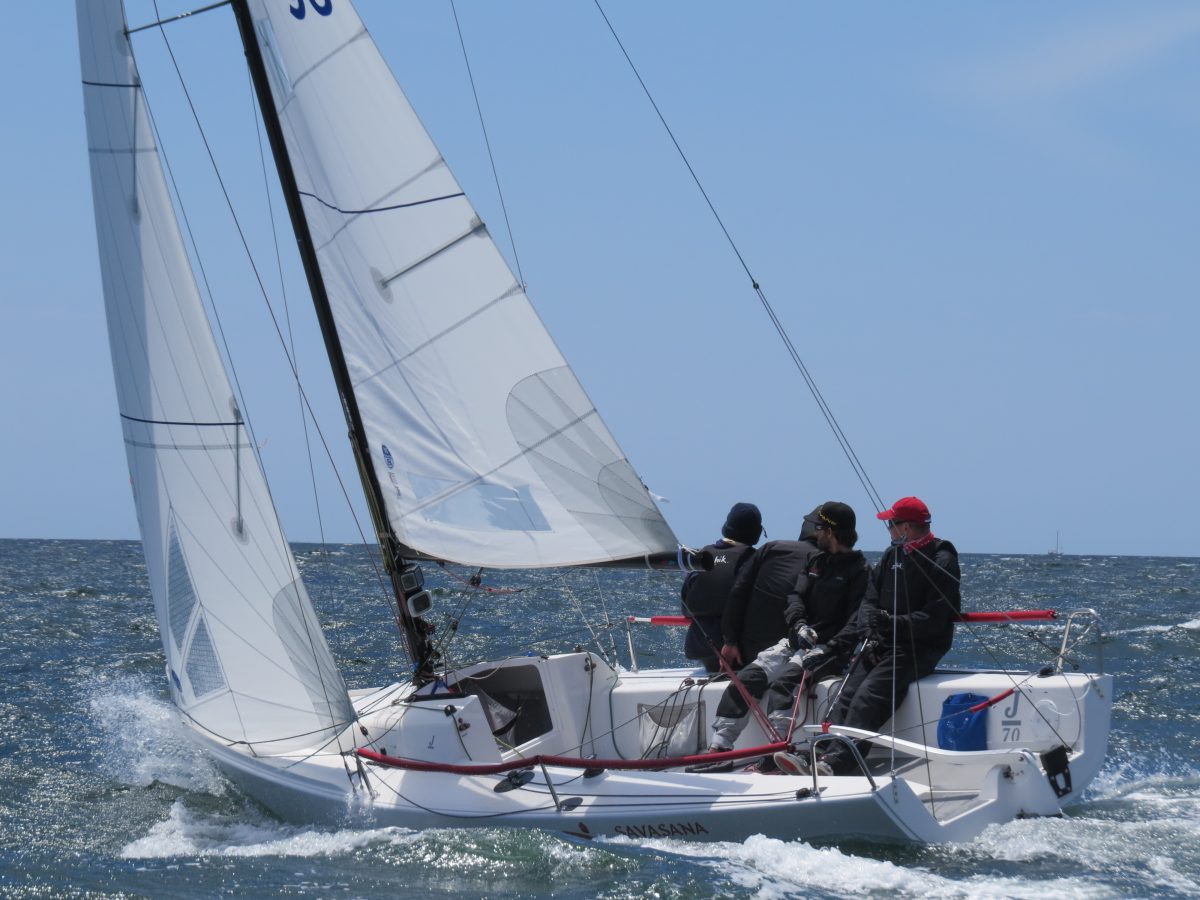
HOW TO TRIM THE J/70 JIB FOR MAX SPEED
J/70 JIB TRIMMING FOR SPEED
Jib Lead and In-hauling Settings for the J-6 Jib
Trimming the jib on the J/70 involves both technique and accuracy. Proper jib trim will help balance the boat and help in boat speed and pointing ability. While achieving the proper trim is the goal, being able to repeat the trim consistently will also make a big impact on your boat’s performance. The important factors in proper jib trim are the lead car position, jib sheet tension, in-hauler tension, jib halyard tension and reference marks to repeat all the settings. The final trim position for the J/70 jib is a balance between the sheet tension and in-hauler tension.
When the jib is trimmed in, the leech of the jib should be lined up with the spreader stripes (between 18”-22” from the side of the mast). Within this range, your upper jib leech telltale should be flowing 90-100% of the time. Trim in until it just stalls then ease a hair until it starts flowing again. This is your max trim.
Jib Car Position
The first step in jib trim on the J/70 is jib lead car position. Setting this position is important as it affects all of the other settings. Combining the jib lead car position with the amount of sheet tension, in-hauler and halyard tension allows the trimmer to manipulate the sail to fit the conditions and style of the skipper. When discussing the position of the jib lead car, we reference the number of holes visible behind the first deck mounting screw in front of the car once in a position.
Windward Sheet
On the J/70, we use the windward, or lazy jib sheet as an ‘in-hauler’ to pull the clew of the jib to windward and more inboard. When setting the in-hauler tension, our reference point is the distance the clew of the jib is away from the side of the cabin house.
J-6 Jib: For the J-6 some in-hauler is always required. In very choppy conditions, use less in-hauler with the clew at 2”-3” from the cabin house and the lead at 5-6 holes showing. In light to moderate chop the clew can be at or just inside the cabin house with the lead at 6 -7 holes showing. In very flat water the lead can go back more to 7-8 holes showing.
J-2 Jib: Our go to setting for the J-2 is 2” from the cabin house. In Flat water we may go to 1” away and in moderate chop conditions 2.5-3.5”. In big waves and chop we may go with no in-hauler. Remember that the less in-haul is used, the farther forward the jib car needs to be.
For the J-2 jib with no in hauler, the car should be around 3-4 holes showing and with a lot of in-hauler on and the jib clew is at 1” from the cabin house, there should be 5-6 holes showing in front.
Jib Halyard
The jib halyard on the J/70 is rigged with a fine tune purchase that can be adjusted while sailing. In lighter winds, the jib halyard should be set so that there are slight wrinkles appearing in the first panel along the luff of the sail (approx. 4-8” back from luff of sail). If wrinkles extend further back in the sail, or no wrinkles appear at all, the halyard should be adjusted to compensate. As the wind gets stronger, and the sails need to be de-powered, the jib halyard should be tightened just to the point where the wrinkles along the luff disappear. As the halyard is tightened and loosened, it is important to keep in mind that the halyard tension also affects the leech tension of the jib and the sheet and/ or in-hauler may need to be adjusted to compensate.
Make Marks
Make reference marks on jib sheets for both the sheet tension and in-hauler tension. Having reference marks will make it much easier to duplicate your trim settings quickly. Jib sheet and deck reference marks help accurately repeat trim settings It is a good idea to experiment with different settings for each control to get used to how each control affects the sail and how they interact with each other
The basic effect of the three jib controls, lead car position, in-hauler and jib halyard is:
Jib Lead Car Position
Forward = Tighter leech, round foot
Aft = Open leech, flat foot
In-hauler
More = Tighter leech, round foot
Less = Open leech, flat foot
Jib Halyard
More = Flatter sail
Less = Deeper sail
** Counting the number of open holes in front of the jib lead car and after the first bolt identifies jib lead position.
*** The distance (in inches) from the clew of the jib to the side of the cabin identifies in-haul measurement. Use less In-Haul when lead is forward and more in-haul when lead is aft.
After setting the sheeting position of the jib, the trimmer needs to constantly check to ensure the trim remains correct as the conditions change. Since the jib on the J/70 is high aspect (tall and thin) changes in the conditions have a significant impact on the trim of the sail. For this reason, there are telltales attached to the upper leech of the jib to help the trimmer know when the sail is going to stall. When the sail is trimmed properly for upwind, the leech telltales will be flowing and if the telltales begin to stall, the sail will need to be adjusted to regain the flow. Most often, only a small adjustment is needed to help return the proper trim and flow to the sail. The reference marks on your spreaders will also help with jib trim. You will find that in 10+knots in flat water you may be able to sheet so the jib leech is at the inside, 18” spreader mark and the leech telltale is still flowing. When it is light and lumpy you will find that the leech will need to be closer to the outside 22” spreader mark. Easing the jib sheet slightly is the first step in returning flow to the jib. Normally, this will only require an inch (or less) of sheet to be eased out. If the leech telltales continue to stall when the leech is sheeted in to the spreader stripes, other adjustments need to be made to properly trim the sail. Since the telltales indicate the stalling of the upper leech of the sail, adding twist is likely the solution. The two ways to best achieve more twist in the jib, is to move the lead car aft and use less sheet tension. As described earlier, both adjustment will add twist to the sail and help regain the twist and flow at the top of the sail.
Other J/70 Speed Resources:
J/70 Speed Guide
J/70 Full Tuning Guide
J/70 XCS-1/J-6 Quick Tuning Chart
READ MORE
READ MORE
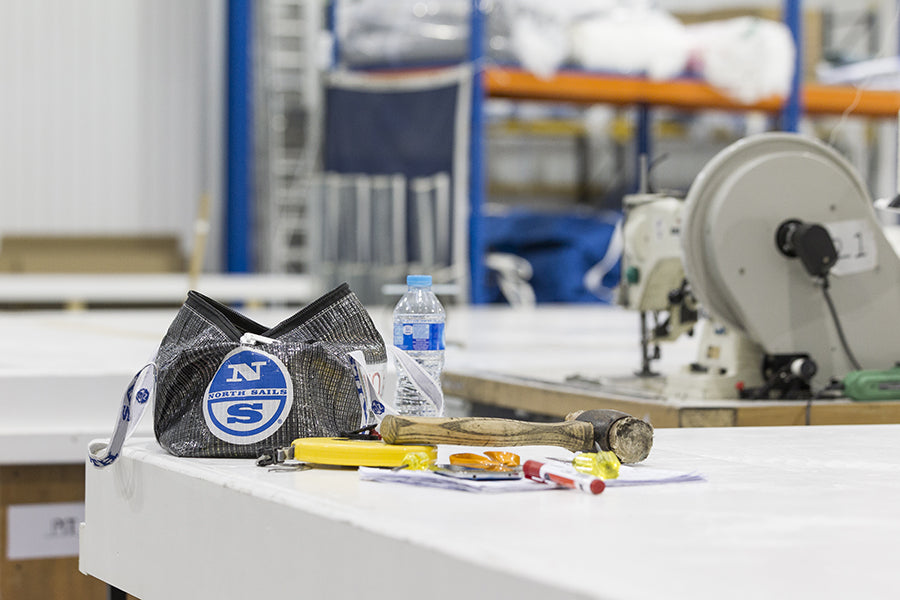
WELCOME TO THE MIDWEST
WELCOME TO THE MIDWEST
Our Midwest Team Welcomes A New Expert
We are pleased & excited to welcome Allan Terhune back to North Sails and introduce him to our Midwestern sailors!
Many of you know that we have had a consistent veteran staff for quite a long time now – Perry Lewis has been a mainstay here nearly 40 years, Tom Pease (North Sails in Milwaukee) has been with the company for just as long, Luke Logan has been Service Manager approaching 20 years, and Deanna Trejo has been managing our office for nearly 5 years. So it is high time to welcome a new face!
Allan brings a fresh enthusiasm along with a wealth of experience & knowledge. His extensive sailing resume, both racing & coaching expertise speaks for itself. Allan has built a foundation in competitive One-Design classes, while maintaining his most important interest in helping sailors at all levels achieve maximum performance. We know that he will be a valuable asset to our team in providing superior service, both to our existing client base as well as to newcomers.
Welcome Allan- We are proud to have you on our team!
READ MORE
READ MORE
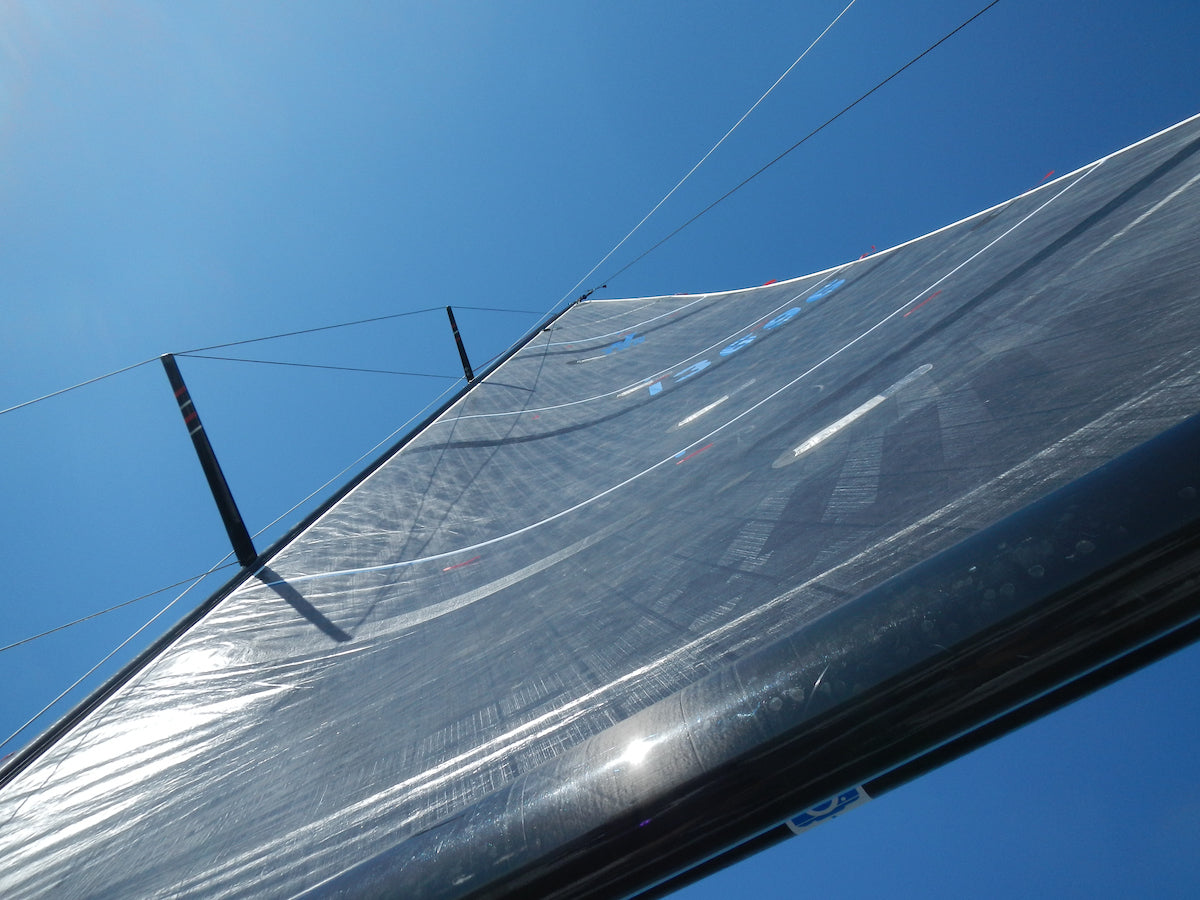
TIPS FOR TAKING PROPER SAIL SCAN PHOTOS
TIPS FOR TAKING PROPER SAIL SCAN PHOTOS
Investigating your sail twist profile with onboard imagery
First, position your camera(phone) at the mid‐foot area of your sail. Angle your camera to catch all three draft stripes from luff to leech. Usually the bottom stripe will have one end in a corner and the other end in the opposite, higher or lower corner of the frame.
To get a good angle of your headsail, you'll need to get down to deck level, so lay on your back and shoot up from the middle of the foot. (Hopefully a friend is driving, especially if it’s choppy!)
To get a good image of your mainsail, you'll need to position your camera so the angles are similar, and at the same time try to include the center of the boom in the bottom of the photo to assure you are in the right place. This will help us calculate the twist profile when the photo is measured by your sail expert.
READ MORE
READ MORE
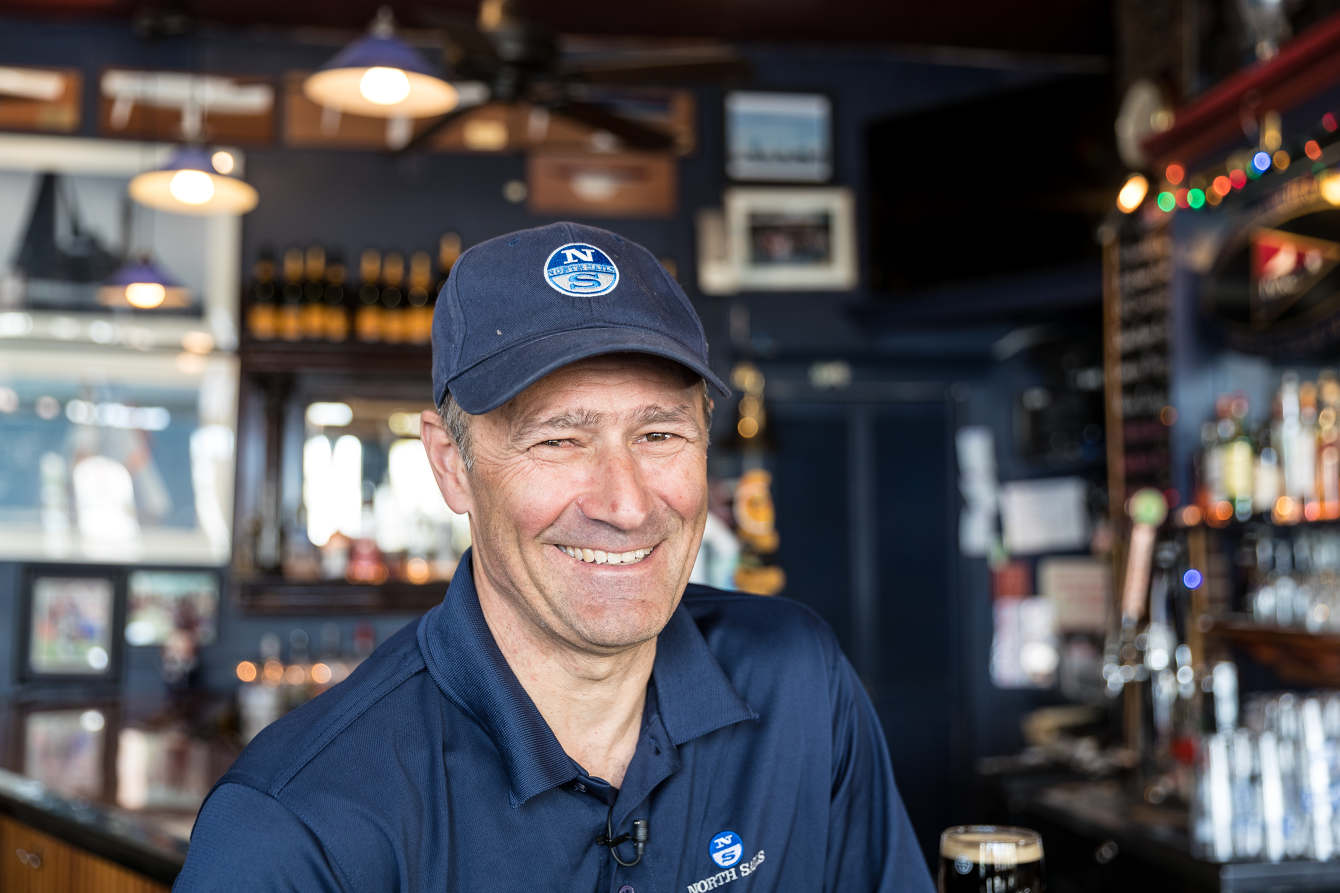
DESIGNER SPOTLIGHT: JB BRAUN
DESIGNER SPOTLIGHT: JB BRAUN
One of the world’s leading sail designers talks about the next generation of innovation
© Joe Berkeley
JB Braun loves making sailboats go faster, and that’s his job as Director of Design and Engineering at North Sails. “There’s a lot that goes into it,” he says. “It’s not only developing a product but developing the tools and software to help create it.”
JB manages the 80-person worldwide design team for North Sails. “I’m trying to develop and bring more communications, more design expertise into it. I want it to be recognized because it’s part of what makes North Sails different.
“We have 80 designers around the world, mostly working independently. In the past few years, we’ve implemented some great systems that help our design team be more efficient, which allows more time for collaboration and creativity. Exploring the design space will provide more performance for our customers.”
Before taking on his current role, JB was part of the design team for Oracle Team USA, helping to create the revolutionary foiling cats that defended the 2013 America’s Cup. JB was also instrumental in teams adopting 3Di during the Volvo Ocean Race 2011-12. “My job now is to try to take those skills and that type of development and bring that back into North Sails. Our process is the engine above the waterline, which is making boats perform better and increasing the enjoyment for our customers.”
JB’s on-the-water sailing career includes a cabinet full of youth trophies, two Team USA Olympic campaigns in the Flying Dutchman, and a Transatlantic record onboard Nicorette. Educated as a Mechanical Engineer at Northeastern University (Boston, USA), JB combined his passion for sailing with his engineering background to develop software and products that lead to faster sails. Today he is one of the world’s leading sail designers, having served as lead designer for various America’s Cup and Volvo Ocean Race teams and helping boats like the 100’ Comanche break records.
JB has helped revolutionize upwind/downwind sail design. In 2000 he developed Virtual Wind Tunnel, a program within the North Design Suite that made possible the first accurate simulation of downwind sails in action. Ten years later, he became the project leader for 3Di, developing and integrating sail design and construction techniques into the North Sails production line. “I helped bring 3Di from an idea that was not really a product into a mainstream product,” he explains. “The proof of concept for 3Di was the Volvo Ocean Race 2011-12. The product proved itself able to stand up to the brutal conditions of that race, and has since gone on to be further proven as the highest performance and most durable sail in the industry.”
Now that 3Di is sought after by both racing and cruising customers, JB is working on several new innovations. “We’ve changed MemBrain™, our finite elements analysis (FEA) tool, to engineer and analyze the winged sail combination that Team New Zealand is trying to apply for the next America’s Cup,” he says. “We’re also working on what we call the Sail App for North U, to help people better understand sail shape. You’re sailing along, you pull on the backstay, and you can see the performance change as you change sail shape. It’s still in the development phases, but I believe it’s the next step in how we communicate, both internally and with our customers.”
Other development projects include new velocity prediction (VPP) tools for the TP52 class. “That’s the premiere racing class right now,” he says. “We have some specific tools we’ve developed in the North Design Suite to help us quantify differences in design.”
What excites JB the most is making sails perform better, and he sees a fantastic opportunity in North’s fully integrated design approach.
“We’re unique in the industry because we design and analyze the sails with our North Design Suite software, and then use those same tools to physically build the 3Di sails. When we go through our analysis process, we have complete confidence that what we’re designing is actually what gets built and delivered to our customers. The design of the sail will have a huge impact on the performance of the boat.”
Industry experts like naval architects, engineers, and project managers now rely on North Design Services for information that will help them design and build faster boats. “From the very concept of a boat,” JB explains, “we’re helping these professionals by providing design software and tools to do a better job in their area of expertise. All these things start off as a concept or idea. North Sails helps grow that into a final product.
“Historically, a naval architect would design the hydrodynamic model, then ask for the aerodynamics,” he continues. “For us to do a really good job with the sail plan, we need to balance the two. It’s a seesaw, with aero on one side and hydro on the other. When the seesaw is balanced, you get the best performance, so if you start off with the seesaw at the beginning, the design loop gets much more refined. Change the hydro to balance with the aero. Design refinement before the boats get made.
“The IC37 by Melges is a perfect example. It went through design revisions and we developed aero models before the boats were even laid up.”
Naval architects and designers are finding this information so valuable, they’re coming back and wanting more.
“Our tools are now refined in a way that has a direct impact on the designs that this team is coming out with,” JB says, “and that will help us make boats go faster and be more efficient.”
READ MORE
READ MORE

CRECE LA FAMILIA NORTH SAILS PALMA
CRECE LA FAMILIA NORTH SAILS PALMA
North Sails anunció el pasado mes de enero la incorporación de Doyle Palma al equipo de superyates de North Sails Palma.
Quinten “Quinny” Houry, Fiona Bruce y Russell Thom, respetados especialistas en fabricación de velas de superyates, refuerzan el potente equipo de la velería de Palma, una de las 16 específicas para superyates que North Sails posee en todo el mundo.
READ MORE
READ MORE
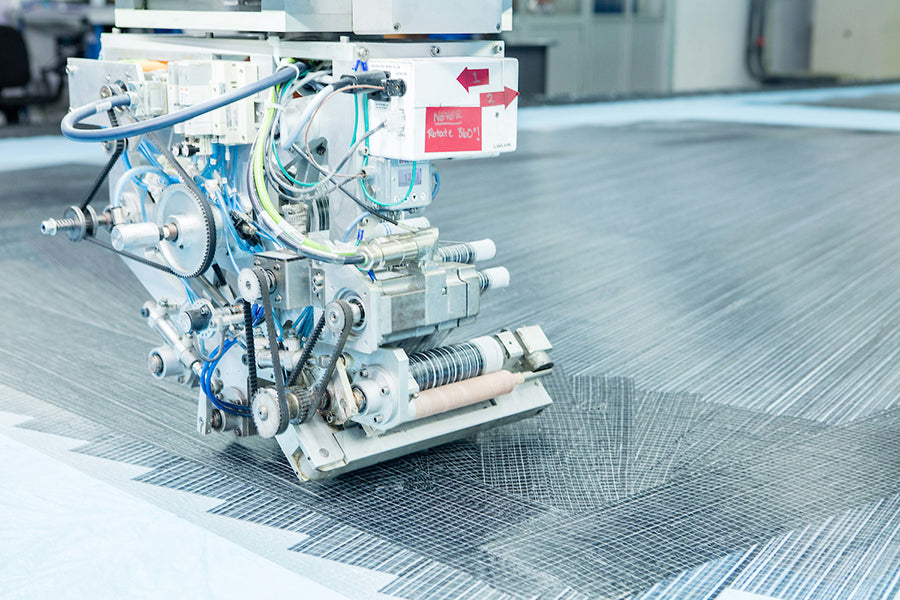
NORTH SAILS COMPLETA SU EVOLUCIÓN HACIA LA TECNOLOGÍA 3Di
NORTH SAILS COMPLETA SU EVOLUCIÓN HACIA LA TECNOLOGÍA 3Di
El comienzo de 2018 marca un hito en la historia de North Sails. La velería líder mundial completa un ciclo de diez años de transformación desde su tecnología de 3DL, velas laminadas en 3D, a estructuras de composite moldeadas 3Di. Las plantas de la firma en Minden (Estados Unidos) y Sri Lanka ya sólo fabrican 3Di, la vela de mayor éxito de la historia.
North Sails lideró la tendencia de construcción laminada de mylar e hilo con sus revolucionarias velas 3DL, que dominaron la velería de altas prestaciones desde principios de 1990 hasta la America’s Cup de 2007. Con la aparición del 3Di, la compañía fue abandonando la producción de velas laminadas a favor de estructuras 3D de composite con filamento esparcido y preimpregnadas. Las velas 3Di proporcionan propiedades de conservación de la forma y de durabilidad muy superiores a cualquier otra vela de construcción laminada. El moldeado en tres dimensiones a escala real es la piedra angular de la tecnología North Sails.
Desde que el sindicato suizo Alinghi sorprendió a la comunidad de la vela probando estructuras 3Di en preparación para la defensa de la 32 America’s Cup en Valencia, el concepto 3Di no ha dejado de evolucionar y expandirse a lo largo y ancho del extenso catálogo North Sails, y hoy está disponible para todo tipo de embarcaciones, de grand prix a monotipos, de superyates a cruceros. La introducción el pasado año de las 3Di NORDAC para crucero y 3Di RAW 760S para regata supuso la aplicación del 3Di a barcos de menor eslora y su consiguiente popularización.
En respuesta a una demanda en constante crecimiento, North Sails ha ido adaptando sus instalaciones de producción en Minden (especializada en velas grand prix y de superyates) y Sri Lanka (barcos hasta 50 pies de eslora) a medida que la tecnología evolucionaba de velas de paneles y 3DL a 3Di. La última línea de producción de 3DL se cerró definitivamente en septiembre de 2017, y hoy las dos factorías fabrican exclusivamente 3Di. North Sails cuenta con líneas de preimpregnado idénticas en ambas plantas trabajando 14 turnos por semana, con siete líneas ATL (Automated Tape Laying o sistema de colocación automático de cintas) en Minden y otras cinco en Sri Lanka funcionando 24 horas al día y siete días por semana. Las líneas de preimpregnado y ATL alimentan ocho grúas y diez moldes a escala real ajustables de 3D.
Dan Neri, director general de North Sails, explica la evolución de la estrategia de producción de la firma: “La expansión de la factoría de Sri Lanka responde al éxito de la nueva 3Di RAW 760S para barcos de competición de menor tamaño y de la 3Di NORDAC para cruceros de pequeña eslora. Las velas 3Di siguen respondiendo a las necesidades de navegantes de todas las clases, desde Skiffs de 18 pies en Australia hasta la flota Ultime de 100 pies en Francia. Nuestra tecnología está detrás de un número sin precedentes de victorias en regata y de récords mundiales, además de infinidad de historias de cruceristas gracias a la consolidación de la 3Di NORDAC entre la comunidad de crucero”.
La planta 3D Minden es el centro de referencia para investigación de materiales, ingeniería y fabricación de productos tridimensionales, exclusivos de North Sails. Por su parte, Sri Lanka Manufacturing cuenta con instalaciones de última generación que ocupan a cerca de 1.200 personas distribuidas en ocho edificios. Ambos centros de producción envían las velas 3Di a todo el mundo.
La gama North Sails 3Di incluye las líneas 3Di RAW, 3Di ENDURANCE, 3Di NORDAC y 3Di Downwind.
Para más información sobre las velas North Sails 3Di, visita www.northsails.com o contacta con nosotros en info@es.northsails.com
READ MORE
READ MORE
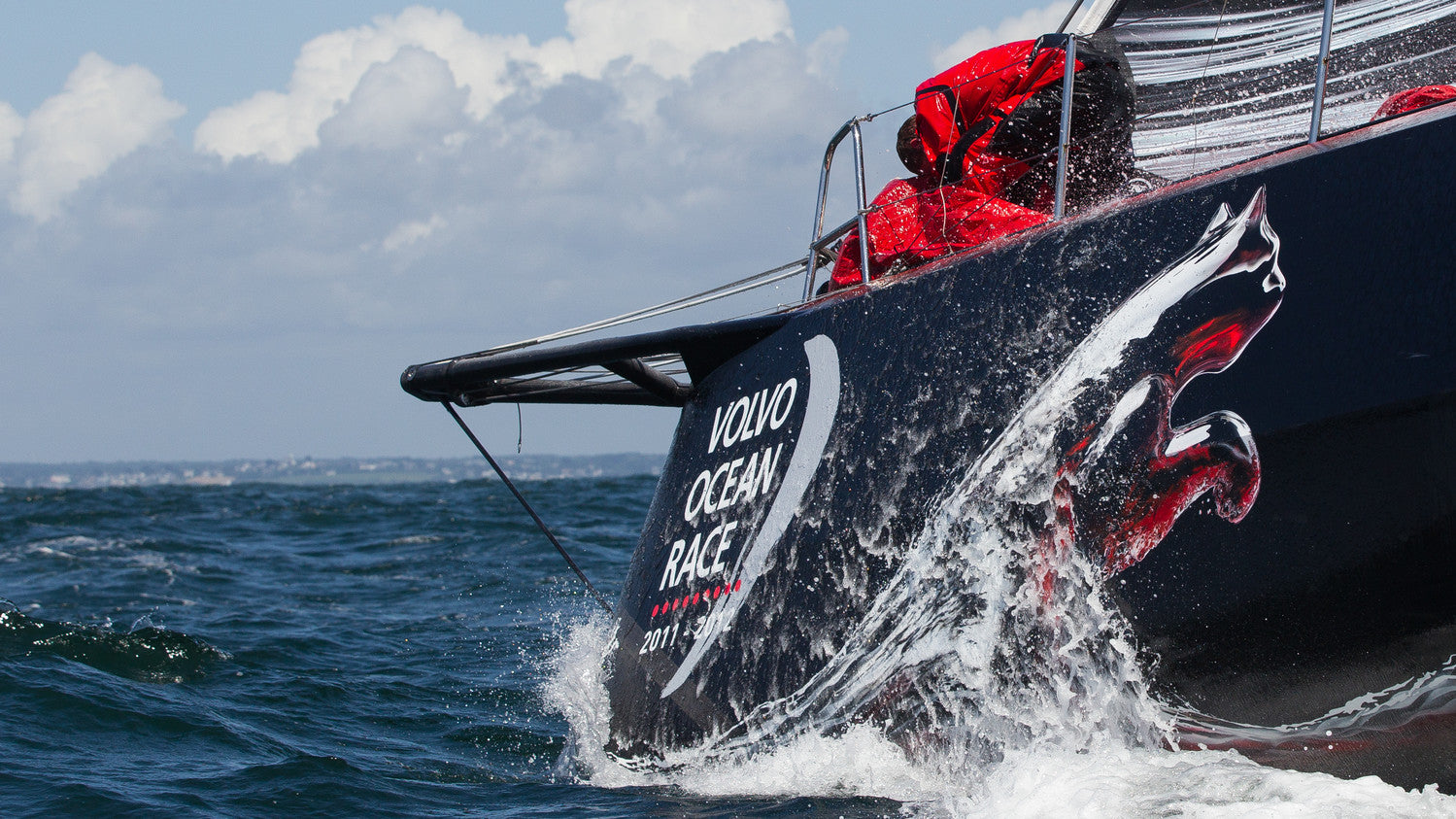
VOLVO OCEAN RACE: JUST ANOTHER YACHT RACE, ONLY LONGER
VOLVO OCEAN RACE: JUST ANOTHER YACHT RACE, ONLY LONGER
Around the World racing veterans from North Sails share their biggest lessons learned
What does an extreme event like the Volvo Ocean Race have in common with the distance racing most of us do? We asked race veterans (and North Sails employees) for lessons learned; read on for a few tips that just might help you on your next race.
The biggest screwups teach valuable lessons.
North Sails Vice President Kimo Worthington won the 1997-98 Volvo Ocean Race on EF Language
“On our first Southern Ocean leg from Cape Town to Australia, we didn’t have any idea what we were doing and we wiped out in a big squall, blew out our kite. We ended up in irons, and when I looked over the side the spinnaker pole had somehow wrapped itself around the front of the keel. Huge mess. Four hours of cleanup, and then we crashed another four times before the leg was over.
“As soon as we got into Fremantle, we had a very frank team meeting—not rah rah, but how did we screw up, how could we do it better? Instead of imploding, we decided to stack harder and farther back than anyone else. We also decided reefing was the key. Once we reefed, we could carry the kite in 40 knots of wind. By the time we passed Cape Horn, we were 500 miles ahead. That debrief was key to winning the race.”
Tune up with the fastest team before the start.
North Sails President Ken Read skippered PUMA Ocean Racing around the world in 2008-09 and 2011-12.
“MAPFRE and Dongfeng did something very interesting before this race. They both must’ve decided they were good enough to win a two boat race, so they trained with each other to create an even bigger speed advantage over the other teams. So now what you have is two arch rivals going out to play with each other. Tuning up beforehand is about three things: Time, money, and smarts. Time to do some serious training. Money to buy the best drivers. And then enough smarts to team up for pre-race training with the other top guys… that’s a pretty powerful combination.”
© Ian Roman / Volvo Ocean Race
Keep working with your sail designer to get faster.
North Sails Designer Mickey Ickert has worked with several Whitbread and Volvo Ocean Race teams, including 2005-06 winners ABN AMRO.
“Back when the Whitbread and Volvo were on the cusp of satellite communication, periodically I would get a call from the boat discussing the next sail or sail recuts to be made in port. In those days, the sails were consistently developed and updated by each team, with the aim to catch up or outperform the opposition. It’s a long race, with plenty of opportunity to learn and improve, so it was possible to outperform the early leader if everyone kept talking as a team with the designers.”
© Oskar Kihlborg Volvo Ocean Race
READ MORE
READ MORE
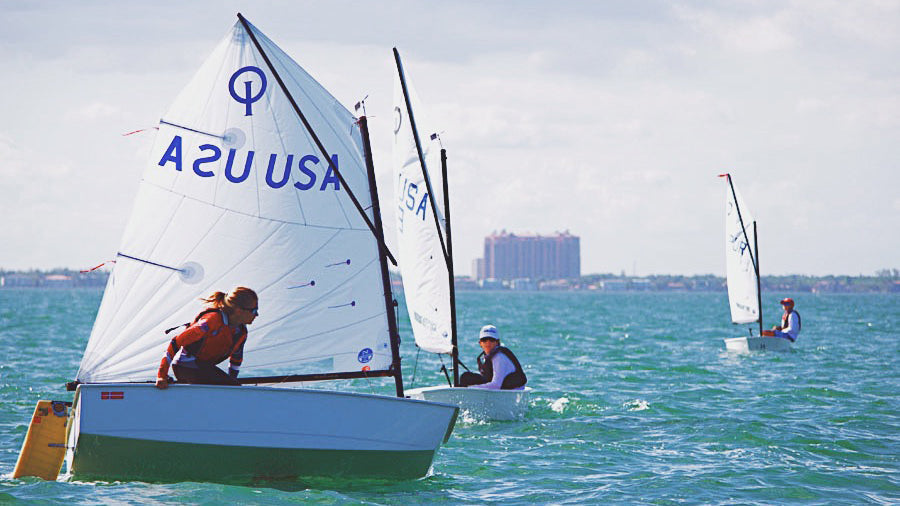
OPTIMIST DINGHY SPEED GUIDE
North Sails class leaders Zeke Horowitz and Juan Carlos Romero answer your International Optimist Dinghy speed and boathandling questions.
Who sails an Optimist Dinghy?
The pram-style Optimist is a great starter boat for learning to sail and later learning to race, and youth sailors can literally take their Optimist Dinghy to whatever level they want. Any motivated young Optimist sailor will develop both confidence and dinghy sailing skills, from boathandling techniques to big-fleet strategy and tactics; some will go on to race at the highest levels. The sailors who do best in the class are those who spend the most time sailing their boats, usually with a good coach, strong sailing program, and ample resources. The International Optimist Dinghy Association is the biggest one-design class in the world.
Top young Optimist sailors line up on the starting line at a clinic held on Miami's Biscayne Bay.
Who is the ideal Optimist sailor physically?
Sailors should be fit and agile, able to move gracefully and hike out for extended periods. Those who do best are usually 12 to 14 years old and weigh up to 110 pounds. Regionally, top sailors can still compete at 115 or even 120 pounds. Girls sail equally with boys, and it’s common to see three or four girls in the top 10 at any regatta.
What are three top Optimist speed tips?
Find a good coach and team.
Focus hard while you’re on the water.
Do well in school so you can miss days while off sailing.
What should buyers know when choosing an Optimist Dinghy?
Any sailor’s first boat is typically a used boat, to allow for collisions due to inexperience with dock landings and being in close quarters with other boats. Competitive sailors will normally move up to new boats as they reach higher levels. Older boats can remain competitive, but heavy travel and racing schedules put a fair amount of wear and tear on the boats. As a result, used boats may need gelcoat dings and scratches repaired. A fully outfitted new boat may run $5,500, while a good used boat costs 30 to 40 percent less. Keep in mind that you can purchase different sizes of boom section with different stiffness, although most sailors stick with a mid-range version. As a sailor grows, a stiffer boom may be preferred. If your mast is extremely bendy, it may also help to replace it with a stiffer one as experience and size merit.
How do you move an Optimist Dinghy around?
An Optimist weighs only 35 kilograms (77 pounds), which makes it easy to put on top of a car. There are also many trailering options; some teams own trailers that carry up to 18 boats, plus a coach boat!
How long does it take to rig an Optimist Dinghy?
Rigging time depends on how focused the sailor is on the task, but it’s not hard to have a boat ready in 40 minutes. What’s most time-consuming is attaching the sail to the spars, which in the Optimist requires tying knots in a way that’s carefully prescribed by the rules (see the North Sails Optimist Tuning Guide). The goal is to match the luff curve with how much the mast will bend in a given condition, which varies depending on a sailor’s weight.
How many sails are allowed?
Top sailors will take two sails to a regatta, but just one sail is allowed for the duration of the event; the other is a backup in case of a breakdown. There is some nuance to selecting Optimist sails, but North presents a good choice of radial or crosscut sails of different size depending on the sailor’s weight. Read more about what North offers, from a crossover sail for beginners, to two crosscut and four radial-cut racing sails.
International Optimist Dinghy Tuning
What are the keys to rig set-up?
Tuning the rig on a boat with an unstayed mast is different than on other boats. It starts before you attach the sail on the mast; first measure your mast rake—from the top of the mast to the edge of the coaming on the transom—and then move the adjustable mast step until you get the right rake measurement for your weight. This is your “base” setting. The process is detailed in the North Tuning Guide. The Tuning Guide also covers the critical process of tying the sail to the boom, mast, and sprit, and connecting the sprit correctly to the mast.
Properly eased outhaul tension shows wrinkles at each sail tie giving ample power to the lower part of the sail.
What control systems are unique to the Optimist?
Having a sprit pole, and a line to change the tension on it, is not the norm on most one-design racing boats. Sprit tension controls leech tension, but if you have too much, a wrinkle will appear between the tack and the peak of the sail. A sail that’s set right for upwind sailing often develops the same wrinkle when you turn downwind, so you’ll often need to ease the sprit tension at that point to get rid of the wrinkle. Preventers are another unusual concept on the Optimist. They are needed because of the way the sail, boom, and sprit are connected with the mast. The top preventer keeps the sail from popping off the top of the mast, and in heavy air, it can be tightened to force the sail to set lower on the mast. The lower preventer, called the boom preventer, maintains boom position on the mast and helps you set the right luff tension for the conditions. There are strict rules about how high or low the sail can be on the mast—a mark on the sail must fall between two marks on the mast to be legal.These controls are described in the Tuning Guide as well. We recommend the Guide to every new sailor and Opti parent.
A modest wrinkle from the top of the mast extending toward the end of the boom indicates correct sprit tension.
Optimist Dinghy Upwind Sailing
How do you trim the sail upwind in light air?
Here’s a checklist to run through if you’re sailing upwind in light enough air to be sitting in the boat. Set your mast rake a bit aft of your base setting, since your mast is probably not going to bend under this wind condition (see Tuning Guide). Ease the outhaul until any horizontal crease in the foot disappears and some vertical creases show up above each sail tie; the creases should not pass above the first seam in the sail. Luff tension should be eased enough that as you sail into a puff, horizontal wrinkles appear at the sail ties along the mast. To be sure you’re not closing the leech too much, ease the sprit pole just to the point that a wrinkle appears from the top of the mast to the clew. Focus on where to trim the boom relative to the corner of the transom—a good general rule is no farther inboard than the corner, or leave it just outside.
Shown sailing in a clinic (without sail numbers), these Optimist Dinghies show off the design’s distinct profile with sprit rig and squared off bow and stern.
When sailing in medium winds, how should the sail be trimmed upwind?
Move the mast rake back to your base setting when you move to the rail, and in choppy conditions, pull the outhaul tight enough so the vertical creases at the boom sail ties extend only up to the first seam. Smooth out the wrinkles in the luff by removing one twist in your boom preventer, so you achieve a round, deep nice shape for the entry. You want moderate luff tension, but you don’t want it tight. Trim the sprit so the sail is very smooth, and trim the mainsheet so the boom is right over the corner or just inside the corner of the transom.
In hiking mode or heavy air upwind, how do you trim the sail?
When hiking, rake the mast a bit forward from your base setting to compensate for how the mast will bend. Have your outhaul tight enough that a crease shows in the foot, until you fill the sail with wind. Take another twist off the boom preventer to get good tension on the luff. Sprit pole tension should still be tight and the sail, smooth. When trimming, ease the boom to the corner of the boat and sometimes just outside the corner.
When the Optimist is sailing upwind, overpowered, how should the sail be trimmed?
When you’re fully hiking and still overpowered, you want to have the mast raked aft (2 cm from base setting, as per the Tuning Guide). You should also have more tension on the outhaul—on shore you may have a crease in the sail, but when the sail fills it should be deeper than that from the foot to the first seam. The key depowering technique is to loosen the sprit tension, take another twist off the preventer, and push the boom down hard to pull on the vang—then, pull only some of the sprit tension back on, which leaves the sail with a wrinkle from the top of the mast to the clew. This indicates that the top of the sail is flat and the leech is open, which will help you keep the boat upright. Check that when you flick the luff of the sail with your fingers, it is super tight. Tighten the bridle safety line to the boom so it is also super tight; now your mainsheet tension will start bending the boom a bit, further flattening the bottom part of your sail. The other way to depower is to pull the daggerboard up a little, but use this as a last resort.
Demonstrating good upwind sail trim, this Optimist sailor is flying her leech telltales and has the boom trimmed at or near the transom corner.
What are the key gear changes in an Optimist when sailing upwind?
The Optimist sailor’s focus when sailing upwind is primarily on body movement, mainsheet trim, and steering the boat. None of the sail controls are adjusted. When there are choppy conditions or a big wave, bear off and ease the sail to stay powered up. In a flat spot, trim harder to improve your pointing. Because the Optimist is a hard-chine boat, keeping the boat flat is critical—the boat makes leeway and the rudder works like a brake when you allow heel.
What else is important upwind?
One important technique to learn is “sailing and bailing.” Two buckets are attached to the boat with bungee cords, and the technique is to scoot aft and squeeze the bailer bucket between your front leg and the bulkhead, rocking the boat to windward to fill the bailer by feathering the boat up and hiking at the right time. Move your mainsheet and tiller extension to the same hand and use your free hand to toss the water in the bailer overboard. Don't forget that a full bailer of water weighs 8 pounds, which is quite a bit of weight working against you when it’s sloshing around the floor of your boat.
Optimist Dinghy Downwind Sailing
Where do you sit when sailing the Optimist downwind?
Heading downwind, you always sit on the rail, heeling a little to windward to lift the leeward chine out of the water and to tilt the sail a little higher. In light air and until you’re surfing, stay forward, with your shins against the bulkhead. Effectively, you’re staying in the middle of the boat. In surf and big waves, move aft quite a bit to avoid submarining the bow under a wave and then move forward again. The amount of fore-and-aft body movement is greater in an Optimist than in some other singlehanders because the bow is blunt, so in waves you need to work hard to keep it above water.
How do you trim downwind?
As a general rule when heading straight downwind, let the sail out until it’s about 90 degrees from the boat’s centerline. In very light air, it’s good to sail by the lee, letting the main out past 90 degrees, because it helps the boom to stay out as you heel to windward. Otherwise, the most important adjustment is your sprit tension. In light to medium winds, ease the sprit slightly when you round the weather mark so that the sail looks smooth. You’ll also raise your daggerboard fully out of the water, unless you need to hike or you have surfing conditions; then we recommend having a third of the board in the water to maintain good steering control.
This sailor’s downwind trim shows slight windward heel, mainsheet eased to 90 degrees, and daggerboard fully raised.
How much pumping of the main is fast downwind?
Pumping the main is fast any time there’s good wind and waves. Top sailors grab the sheet at the ratchet block and pump it by extending their hand up over their heads. You are allowed one pump per wave, and at major regattas there are on-water judges keeping count.
How do you shift gears when sailing an Optimist downwind?
Think about how far in or out you have the boom, and think about how much you should be moving fore and aft. In max light air, the daggerboard is up, the boom is out past 90 degrees, and you’re focused on keeping the boat as quiet and at as steady an angle of heel as possible. In 20 knots, it’s completely different—the board is only two-thirds of the way up, you are pumping on every wave, and you are moving all over the place.
Optimist Dinghy Boathandling
What are the keys to starting well in an Optimist?
It’s important to get into the front row and hold your position on the line in advance of the start. It’s also key not to get flagged for sculling with your rudder. This takes practice, always keeping the boat moving but at the slowest speed possible. You want just enough flow across the leech of your main to hold your spot. The boats tack quickly, so we recommend that you learn to do a quick double-tack; sometimes when there’s space to windward, you can tack twice and gain valuable room on your lee side for acceleration.
What are the keys to tacking an Optimist well?
In light air, the key is rolling at the right time. Be patient, and wait until the boat is head to wind before you start the roll. Start from sitting inside the boat. As the boat passes head to wind, move to the old windward side to initiate the roll. Then hop across to the new windward side, trying to land inside the boat so as not to over flatten.
Steering from behind your back, move what was your forward, mainsheet hand aft to hold the tiller extension as well, then bring your other hand around and take the mainsheet. In all conditions, over-trim the mainsheet when you start your tack until head to wind so you maintain flow on your sail, then ease it through rest of the process and finally trim the sheet afterwards, usually after the boat has been flattened. In medium air, you make the same move, but it happens faster and you’re moving from rail to rail. The main trim is the same. When it’s windy, you hardly roll the boat and simply move quickly across, grabbing the rail with one hand to get there. Ease the main during the tack once you pass head to wind and then trim when fully hiked.
What are the worst mistakes in tacking an Optimist?
Over-rolling the boat and filling it with water is easily the worst mistake. In light air, be sure not to use too much rudder. That’s slow, and so is not getting enough roll. We have one word to describe finding the right amount of roll for each condition—practice!
What are the keys to jibing an Optimist well?
In light air, keep it smooth. Have the boat rocked to weather already, then just lean in and grab the parts of the mainsheet, lean out, and pull the sail over. Stand up and walk across the boat to avoid a big splash, then transition to heel the boat again to windward. In medium winds, your roll jibe is the same but involves a quick hop across the boat (as you would in a tack). In heavy air, the jibe is different. Your main goal is “Don’t flip over.” Try to pull the boom across while surfing a big wave because your sail will be less loaded and you’ll be more in control; however, you’ll often find the boom still has enough load on it to require a strong pull. A common mistake is to get stuck—you’ve turned the boat part way, but the main is too loaded to come across. When you are ready to jibe, jibe with confidence by making a decisive turn at the same time that you pull the main over. As the sail comes over, cross the boat quickly to the rail and steer back to leeward on the new jibe. Make sure the main doesn’t get eased beyond 90 degrees as you jibe, or you’ll surely flip.
Do you have any other suggestions for jibing in heavy air?
The chicken jibe (also known as “tacking”) is popular when it’s blowing. If you’re a less-experienced heavy-air sailor and not sailing in the top 20, this is a great way to be sure you’ll stay in the race.
Can you recover on your own from capsizing an Optimist?
An Optimist sailor can “self-rescue” because the boat has three air bags. Make sure they are fully inflated so less water gets in the boat. If you flip, right the boat from the windward side and spend at least one minute standing in the boat and bailing hard with both bailers, which are attached to the boat with bungee cords. At that point you can start sailing and bail out the rest as you go.
What boathandling drills do you recommend?
Practice making 720-degree turns. Doing circles not only is good practice for when you may have to clear yourself from a foul in a race, but also teaches you to sail the boat well, using your body weight to trim and turn the boat. The Optimist has a huge rudder, which also makes 720s fast, but good movement and trim is the key.
The board is down and the main is powered up for the turn at the leeward mark. A bit of leeward heel would reduce the amount of rudder required.
What are the most common Optimist boathandling mistakes?
Let’s start with not capsizing. It takes practice to learn where the edge is in heavy air. Other mistakes we see include using too much rudder instead of doing smooth roll tacks and roll jibes. This applies to sailing in a straight line, too. For example, avoid using too much rudder downwind. If you start heeling to weather too much, the boat wants to head down. Instead of pushing the tiller to compensate, shift your body weight to leeward and trim the main.
What’s the coolest thing about the International Optimist Dinghy class?
The Opti class is by far the largest and most dynamic one-design class, in part because it has the most variables on the planet. Parents, coaches, and thousand of young sailors, growing up through a super-sensitive time of their lives. The basic strategies and tactics the class requires are a great outlet and an excellent way to learn the values of discipline and conservative decision-making. Whether you travel and learn about getting through airports and how to make friends in other countries, or you simply learn to take care of your own boat and sail on your own, Optimist sailing is a chance for you to learn a whole lot about yourself in a supportive, fun, rewarding environment. The Optimist is sailed all over the world and has a half dozen continental championships. After sailors age out, some go on to contend for Laser Radial and 4.7 world titles, and many become leading competitors in doublehanded classes such as the 420 and 29er. A final testament to the class: the great majority of skippers at the 2016 Olympics got their start in the Optimist class.
READ MORE
READ MORE

WHO WE ARE: JOEL CARO
WHO WE ARE : JOEL CARO
Get to know your local sales expert
Joel Caro is from Toronto, Ontario and started Sail-making/Sailing in Santiago, Chile in the early 90's at "Mississauga Sails", his family Sail Loft. He attended INACAP Institute for Engineering in International Business.
What do you Sail? How long have you been sailing?
I mostly sail One Design Classes from Wayfarers, Snipe, SR-21 to Etchells, Soling, C&C, J/24, J/105 and J/122. I have been sailing since 1993, so around 25 years now.
What Boats/Classes do you sail in?
I currently sail in the local J/105 Fleet 4 One Design Class here in Toronto.
What got you into the marine industry? Favorite aspect of working in the industry?
My family comes from a Sail-making background, both my parents started sail-making with Hans Fogh at Fogh Sails and then later North Sails Fogh Toronto back in the late 70's. I basically grew up in that Sail loft in Toronto, so I started learning the trade at a young age.
My favorite aspect of working in the industry is being able to work in something that I love to do and to give our customers the best sails in the world while also delivering exceptional customer service. Another favorite aspect is being able to sail on different sailboats with customers with our sails.
How long have you been working at/with North Sails?
I have been working at North Sails since 2013.
What is your earliest/favorite sailing memory?
My earliest/favorite sailing memory would have to be when I was living with my family in Santiago, Chile, we had our own sail loft which we named " Mississauga Sails " (Mississauga is the city we used to live in). One of our customers called to ask if I wanted to go sailing on his J/24 at a regatta on Lake Rapel. I was 15 or 16 at the time and I said sure, let's go (it would be my very first regatta and I had no idea how to sail).
My skipper picked me up and he said the rest of the crew would meet us there, and so the drive from Santiago to Lake Rapel is around 2 hours, so as we are driving about 10 minutes in, I ask why are we heading to the airport and he replied, "we are going in my plane".
Long story short, I had no idea my skipper had a plane and that we were going to fly to this weekend regatta, so you can imagine the excitement, the flight was awesome and only took 20 minutes, we won the weekend regatta and we flew back to Santiago with the crew. The whole experience was amazing.
How long have you been working in the industry? What keeps you coming back for more?
I have been a sailmaker for 25 years, and I enjoy the competition and sailing with our customers with our sails.
If you could have any boat in the world, what would it be? And why?
It would have to be the DNA F4, which is an exciting Carbon 46 foot Foiling One Design Catamaran; designed and built to push the boundaries of long distance sailing (and because I like to sail fast).
What's your best advice for sailors when it comes to sail care?
My best advice for sailors when it comes to sail care (this goes for both cruising and racing) is to take care of your sails (they are not cheap!). They are the engines for your sailboat, just like a vehicle, your engine needs maintenance and repairs, so bring in your sails at the end of the season for a Full 10-Point Inspection. This ensures your sails are in top condition for the following season. Lastly, make sure to store your sails properly, in a dry area and in a pest free environment.
READ MORE
READ MORE
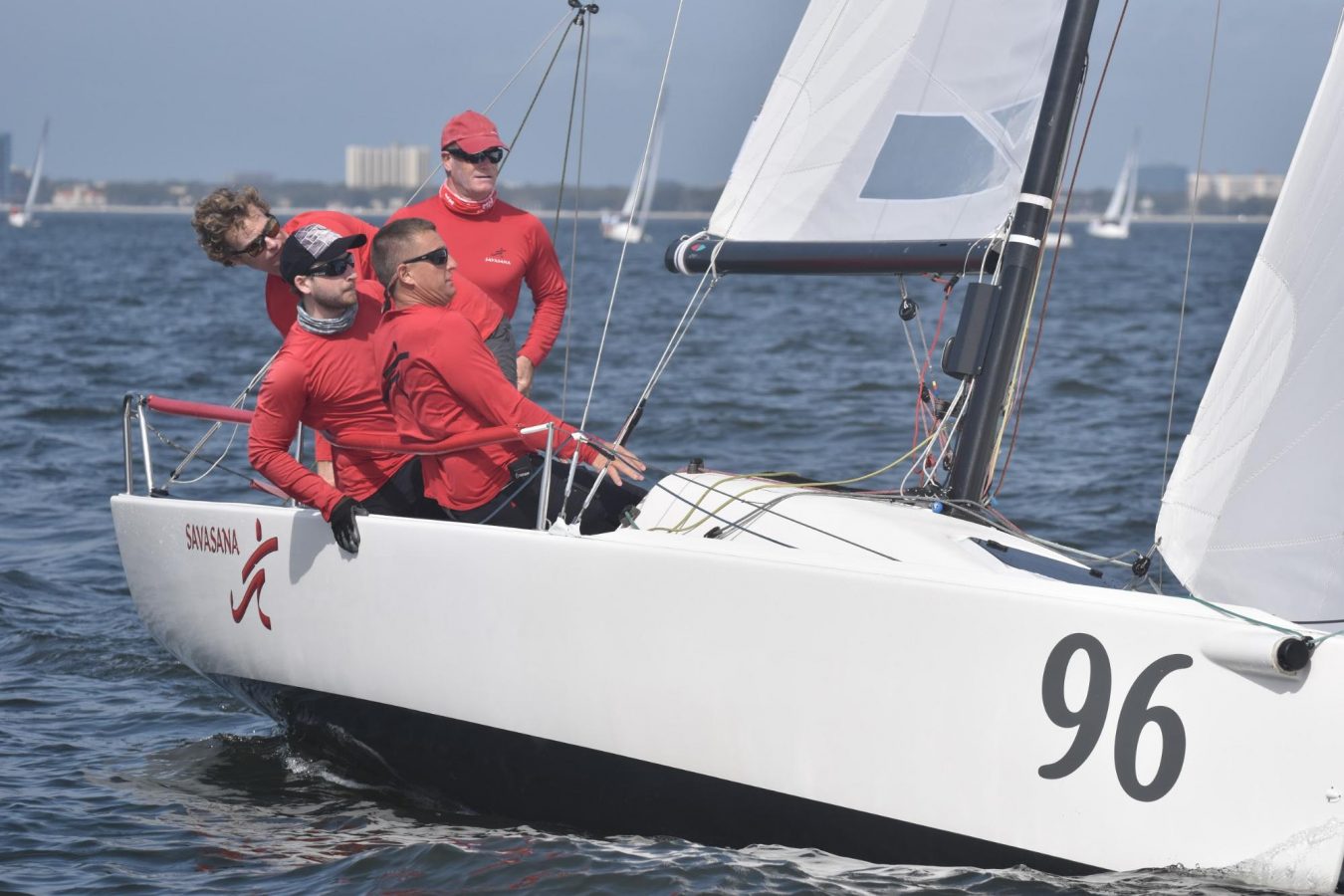
INTERVIEW WITH BRIAN KEANE, J/70 US WINTER SERIES CHAMPION
INTERVIEW WITH BRIAN KEANE, J/70 U.S. WINTER SERIES CHAMPION
North clients continue to succeed given the right tools for success
Team Savasana, US Winter Series champions powered by North Sails.
North Sails products are designed to be a tool for our clients to help them excel on the race course. North Sails has developed fast, user-friendly sails that give teams like Brian Keane’s a competitive advantage.
We caught with Brian after his race series win in Davis Island, FL where he sailed his way to success through a high level of competition in the US J/70 class. Each regatta result finish his team had totaled 7 points in the three-event series, and given one throw out he was left with only 4 points. Here’s what Brian had to say about his team, how they prepared for the winter series, and how they maintained consistency through three regattas, giving his team the overall series win.
NS: The entire series had all types of conditions. It was windy at the first event, shifty in the second, light air in the third. How did your team adjust to keep such great consistent results?
“We were pretty happy that we had a variety of conditions because it gave us a chance to test our tuning and boat handling across a wide spectrum. I think we felt pretty fast in all conditions, whether it was windy or whether it was light. I think the key thing is being smart and avoiding the costly errors. At the end of the day, we felt as fast as anybody, but the real key is not shooting yourself in the foot by making any major mistakes.”
NS: What are some things of most importance that you focus on going into each event given that you might have maybe a different crew every time?
“Yeah, we had slightly different teams, even in each of the three events. When you do that, it just reinforces the importance of being able to communicate effectively within the team, so if somebody’s out and somebody new is in, they can get up to speed very quickly.”
“Because we had a different trimmer in each of the three events, we made sure that we got there early >to practice. We spent about a day and a half practicing. And part of that practice is working on boat handling and our settings for different conditions, so everybody knows who’s doing what. The other part of that practice is then to make sure, from a speed standpoint, we are where we need to be.
As far as the actual racing is concerned, our goal was to get off the line in a clear lane. We had enough confidence in our speed that if we could get off the line sometime in the lower-density area and be able to hold for a few minutes that we’ll quickly be near the top of the fleet and we can just grind down from there.”
“Starts and minimizing risk I think are some of the key themes across all three events.”
North-powered boats finished 1,3,4*,5*,6,7 at the 2017-18 US Winter Series.
NS: Out of all three events, was there a race highlight, or a moment that stuck out that you remember?
“In event two on the windiest downwind leg- it was blowing like stink. We just killed it and extended dramatically on the entire fleet. That’s always fun. We won the race and won it by a lot. It was exhilarating. You know, I think back on it … I haven’t looked at all of our finishes, but I think one of the things I feel good about and was how consistent we were going into each event. I am not sure if we ever had a race out of the top ten, and that’s a sign that you’ve got speed and you’re not shooting yourself in the foot. You’re just always there and relentless.”
“That’s the kind of stuff that wins regattas, and wins a race series- it’s being consistent.”
NS: What advice would you give a new J/70 team?
“We sometimes call it “sail by the numbers.” We have a lot of data and we know exactly how we wanna set up for every condition. We’re not wasting time wondering what the right setup for the rig or for sail trim is as the conditions change. As the conditions change, we can look at our grid and we know what to do.
That takes a lot of the complexity out of it. So a new team should ask some of the other teams what they should be focusing on. “How do you think about rig setups, sail trim in different conditions?” Try and create your own map, your own grid, so you can sail by the numbers, so you can think about sailing and what you’re doing during the race, as opposed to trying to figure out how to make your boat go fast.”
NS: What were the biggest contributions to your team’s success this weekend?
“Smart decisions, tactics, strategy, where to start, and where to go.”
2017-18 U.S. J/70 Winter Series
Teams Powered by North Sails
Event 1
1, 3, 5, 6, 7, 8*, 9, 10 / Congratulations Brian Keane
Event 2
1, 3, 5*, 6, 7, 8*, 10 / Congratulations Joel Ronning
Event 3
1, 3, 4, 5, 6, 7, 8, 9, 10, 11, 12 / Congratulations Jack Franco
Series Overall
1, 3, 4*, 5*, 6, 7 / Congratulations Brian Keane and team Savasana!
* Denotes Partial North Sails Inventory
Max Nickbarg, Thomas Barrows, Brian Keane and Ron Weed.
READ MORE
READ MORE
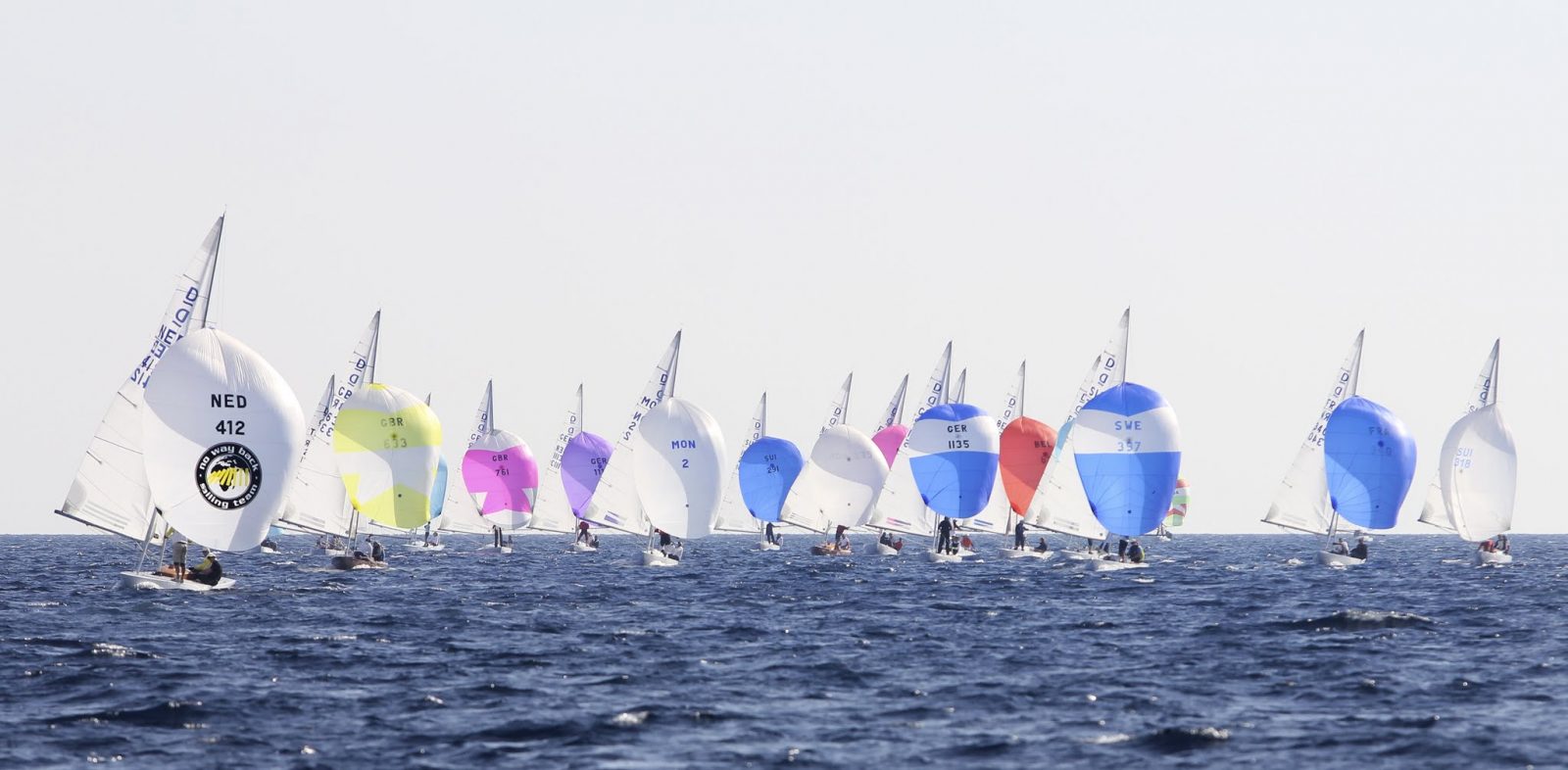
TIPS FROM DRAGON WORLD CHAMPION
TIPS FROM DRAGON WORLD CHAMPION
2017 World Champion Andy Beadsworth shares tips from his World Championship winning experience
© Jean-Louis Chaix
Andy Beadsworth is the reigning Dragon World Champion, and a well known name among the International Dragon Class fleet, he has multiple national and international titles under his belt. We spoke to Andy about his top tips for going around the race course and how he sets up his boat for a day on the water.
What are you looking for whilst setting up your mast on a race day?
The most important thing is to make sure the sail plan looks the same on both tacks. Although that sounds fairly obvious, it takes a massive amount of effort and work to achieve that and is one of the big things. We put a lot of time and effort into is making sure the rig is symmetrical on port and starboard tacks and basically every race day we go through the rig and check our base settings that we record. We are quite diligent in checking a length as well as a tension so that we have got a good record (of our settings) and that also something that we can check on the water.
What do you use to tune your boat on a race day?
On a daily basis we would look at the rig and the sails and adjust what we felt is necessary in order to achieve what we want on the day and to achieve the characteristic of the boat that we are experiencing. We constantly make the adjustments to achieve what we are looking for.
As you round the windward mark, what’s the most important adjustment to make?
The most important thing is to get the spinnaker up and set and the jib furled and then making sure all the sails are working as efficiently as possible, then getting the rig forward and remembering to let the ram off before the runners. Spinnaker up, sails set and pulling efficiently before all the small stuff. Generally we let the ram off down the offset leg to make sure it isn’t forgotten and make sure the mainsail tack go down the run.
And the same question for a leeward mark rounding, what are the important adjustments you make?
Make sure mainsail tack is on, the rig goes back and ram comes on preferably before rounding, so that for the exit of the mark you are sailing the boat as well as possible, especially as most people aren’t so there are big gains to be made. This is especially important when not doing as well as you should be, the leeward mark rounding is one are where you can make big gains just by being set-up precisely with the boat going as well as it can go.
With 2 more events left in the Cascais winter series, what advice can you give to the Dragon sailors competing at the event?
Set-up for waves, it’s a wavy venue! Have a set up that gives a powerful, twisted sail . It’s generally a windy, bumpy venue unlike some of the venues that we sail at in the Med so expect waves.
With a successful year last year under your belt, what are your goals for the team for the rest of 2018?
Personally, I would like to try and consolidate on the year and try and maintain our performance prior to speaking again at the worlds in 2019.
Thank you Andy for your time, we wish you the best of luck for 2018!
Looking to speak to an expert? Contact your local loft to find out more about our Dragon World Championship winning products.
READ MORE
READ MORE
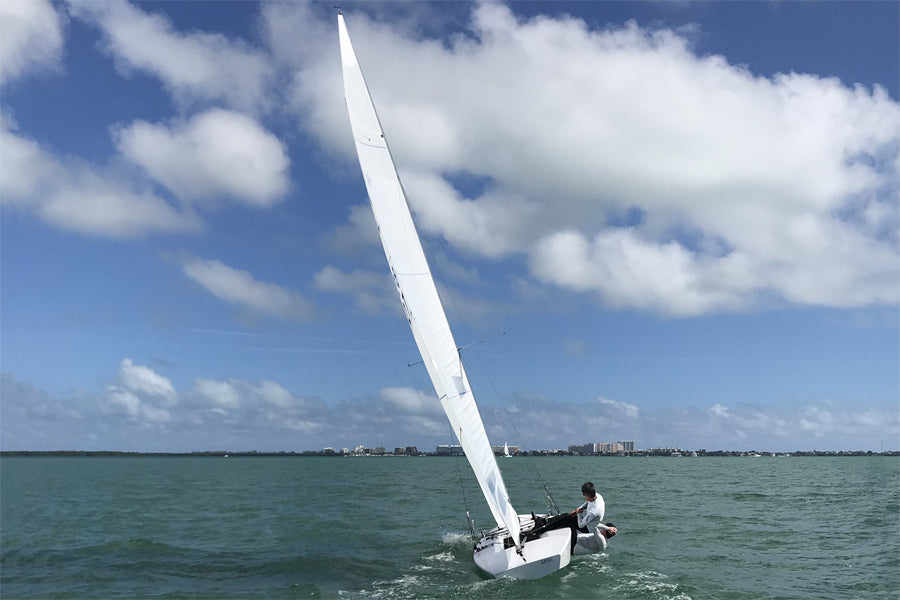
O'LEARY BROTHERS WIN STAR MID-WINTERS
O’LEARY BROTHERS WIN STAR MID-WINTERS
Congratulations to Peter and Robert O'Leary for winning the Star Mid-Winters and the Walker Cup last weekend. Peter has returned to the Star class to race with his younger brother Robert as his crew. The full family compliment was on hand for the first regatta with father Anthony in the coach boat.
Peter and Robert launched a brand new Star for the regatta and she was fully equipped with sails from North. Nigel Young from North Sails Ireland has been working with Peter in the Star class since 2010 and is delighted to play a small part in this campaign.
We can expect to see more great results from this Team as the season unfolds, good luck from us all here at North Sails Ireland.
Full results
READ MORE
READ MORE
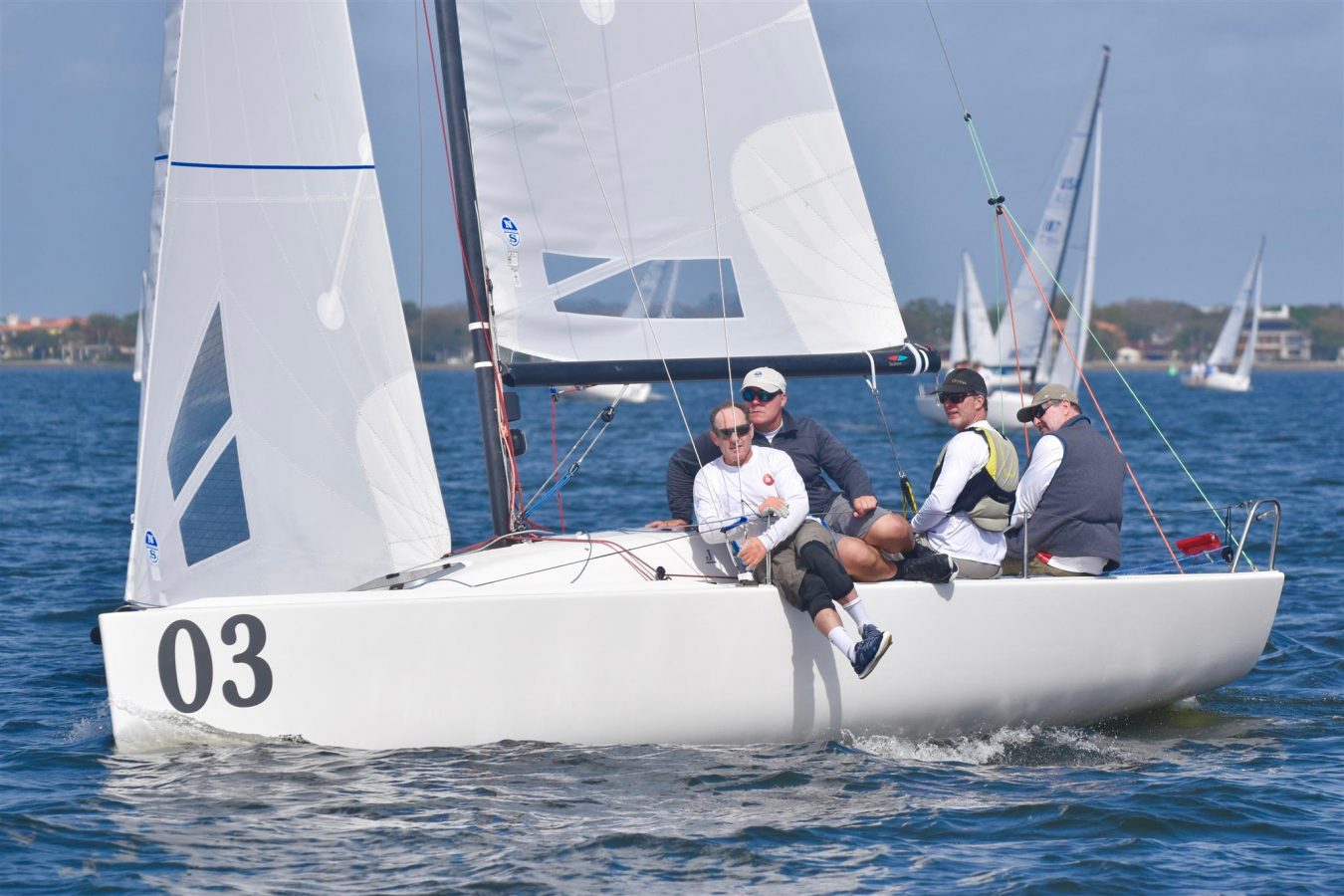
HOW TO SURVIVE LIGHT AIR IN A LARGE FLEET
HOW TO SURVIVE LIGHT AIR IN A LARGE FLEET
Challenging conditions, team Flojito 3JT had it figured out
The third event of the 2017-18 J/70 US Winter Series was sailed in light and shifty conditions. Even some of the best teams struggled with the unknown of when the next shift would happen, what would be the end result, and how they could set themselves up for the next puff without seeing it first. Some came out ahead, others had their worst finishes. Challenging conditions for all, but one team had it figured out and was confident in their strategy. Here are a few of the lessons learned by winning team, Jack Franco’s Flojito 3JT:
Crew Weight
The J/70 is very sensitive to weight placement and movement. Each upwind leg we work hard to get our crew weight as far forward, while sailing a lower angle and as maintaining as much balance as we could. The goal is to never let the boat heel too far either way. Ideally, it will have just a touch of leeward heel, which allows us the crew flatten hard, giving an acceleration, when each little puff comes down.
Going downwind, the goal is to use the weight to steer the boat as much as possible so that the rudder cannot create drag. This can be very effective. The spinnaker trimmer leads by talking to the driver and the rest of the team, orchestrating the movements to keep everyone on the same page and working the boat hard.
Starting – Critical in light air
We had to focus hard. At this event in particular, finding a spot on the line where there was the least amount of congestion as possible wasn’t easy, but it really paid off. Generally, you want to be on starboard at 1:15 and about 60 meters off the line. This will allow more control of your boatspeed, and allow you to manage your hole with more confidence. The goal in this case was to have space on our leebow, and to make sure that we are going full speed at the gun. Communication is very important during the final countdown. On our boat, the bow guy calls the time, the trimmer calls meters/ distance to the line, and the main trimmer/tactician is dictating the maneuver. The key is to make sure you are going full speed at go! If you get too close to the line, you have to slow down which is a killer in light air. If you are too far, you can’t get up to the line in time, which reinforces that 60 meters rule at 1:15 to 1:30, making it critical to be right on time.
Jib Trim
We sailed with the North J-6 this weekend. In the light air you want to make sure the halyard is soft to give the sail more depth and a little draft -aft. It is also critical to make sure there is enough inhauler-on so that there is enough shape in the foot, but not too much return on the leech. If we had too much return, the lead would be set further aft, or we just ease the inhauler a bit. From there, the adjustments are made with the leeward sheet to adjust the upper leech tension. Never let the leech telltales stall out. When a wave comes or if you feel a little slow, ease the leeward sheet, but not the inhauler. From our experience at the 3rd Winter Series, It seemed to work well.
Mainsail Trim
For light air, you want to set the main up with the traveler all the way up, and the sheet with enough tension to keep the telltales flowing. If you want to sheet harder to get more height, the traveler needs to be moved or dropped to leeward a car width so the lower leech doesn’t stall. The outhaul is not eased too much as we worry about the lower main getting too full and closing the slot with the jib since we were inhauling so much.
The big key is that light air is a finesse game
Little adjustments make a big difference and teams that move and communicate well together make large gains. The other thing to remember is that it is easy to get frustrated in light air. If you work hard at keeping the boat moving at full speed, the tactician has a much easier job putting your boat in the right place at the right time.
READ MORE
READ MORE
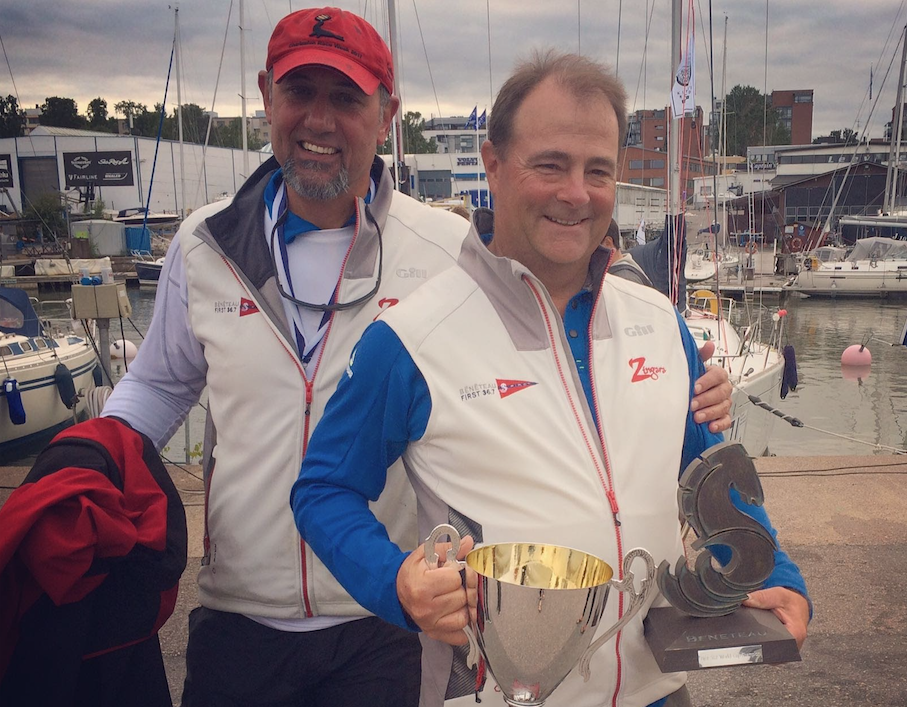
WHO WE ARE: GEOFF MOORE
WHO WE ARE: GEOFF MOORE
Get to know your local sales expert
Geoff Moore with Zingara boat owner Richard Reid at the 2017 Beneteau 36.7 World Cup in Helsinki, Finland.
Geoff Moore is a Rhode Island native who grew up sailing in New England. He attended the University of Rhode Island for Political Science. Since 2002, he has been with North Sails Toronto.
What do you sail? How long have you been sailing?
I have been competitively racing sailboats since 1974.
What boats/classes do you sail?
All types of dinghies, Lasers, Sunfish, Lightnings, Snipes, Albacore, Interclub dinghies, I14s, all manner of US collegiate dinghies.
Small keelboats, J/24, J/22, Etchells, Shields, Sonars, Ideal 18's, IOD's, Stars, J/80's, J/70's, Melges 20's, 24's, and 32's, Farr 30s , and C&C’s every size.
Larger One Design Keel boats, Farr 40, J/105s, J/30s, J/35s, J/111, Beneteau 36.7, Beneteau 40.7, Swan 42. 6 Meters, 8 Meters, 12 Meters.au 40.7, and the Swan 42.
And, of course too, many handicappers, and cruising boats to list here.
What got you into the marine industry? What’s your favorite aspect of working in the industry?
I have always been passionate about sailboats, and specifically about how sail shape affects their performance. The technology has always fascinated me. Whether it be woven textile science, or spread filament, molded, composite, membranes, the goal is always the same, to construct sails light in weight, exquisitely shaped, with the least possible distortion under load. Achieving one or two of those objectives is rather easy these days. North Sails is a company full of highly motivated people who are committed to the challenge of achieving all three objectives. That makes it an exciting and challenging place to be. Delivering beautiful sails, and witnessing first hand, how they enhance our client’s enjoyment of their boats is by far the best part of this job.
What is your earliest sailing memory?
My earliest sailing memories were as a very young child, with my younger brothers, and parents, sailing aboard our Alberg 23 “Winsome” upon the waters of Narragansett Bay and Rhode Island Sound. On weekends we would visit various harbors and anchorages, taking time to swim, dig for clams, fish, and learn about the ocean and sailboats. In those days there were always 12 Meters about training for the America’s Cup. It seemed to me that they had always been there, and they would never leave. The America’s Cup is now gone, but the 12 Meters, and their legacies, are still there.
How long have you been working in the industry? What keeps you coming back for more?
I get a kick out of learning and sharing little tricks about how to make sails perform better. It still excites me to help install beautiful new sails. I don’t think I will ever lose interest in that.
If you could have any boat in the world, what would it be? And why?
What kind of question is that! It is like asking someone to pick a favorite child. And, how could I possibly pick just one. I believe all sailboats have some merit, if not in their performance, then certainly in their history. Someone had to conceive and then construct every sailboat. To build a boat is not a trivial endeavor. If pressed I think I would not be alone in choosing a boat that was the most popular One Design fleet in the area where I lived. Beyond that it is fun to race fast boats on big open water, and slow boats in confined harbors. It is nice to do a little of both.
READ MORE
READ MORE

BAM GEARS UP FOR CARIBBEAN 600
BAM GEARS UP FOR CARIBBEAN 600
North Sails Ireland are delighted to play a part in the success of BAM with Conor Fogerty
Conor had the following to say to us at the Volvo Sailing awards night:
"North Sails have been a key part of the BAM story since her first launch in 2015. The new J2 and J5 played a key part in the OSTAR 2017 and I am looking forward to racing with the new 3Di mainsail for the RORC Caribbean 600 race in 2018"
North Sails Ireland supplied the first inventory for Conor back in 2015 with which he won his class in the 2016 RORC Caribbean 600 race. These sails were a mix of 3DL and 3Di plus the Nylon downwind sails.
In early 2017, for his epic OSTAR-winning attempt, NS Ireland supplied a new 3Di Code 2/3 reefing jib and a No. 5 "Radian" jib for exceptionally heavy upwind work. These sails did the business for Conor and BAM as she took first place in the Gypsy Moth Class in the OSTAR.
We have also just supplied a new 3Di offshore main for his 2018 RORC Caribbean 600 Race which starts very soon!
Good Luck with that one Conor, we will all be watching with interest.
Click here to follow the Caribbean 600
READ MORE
READ MORE
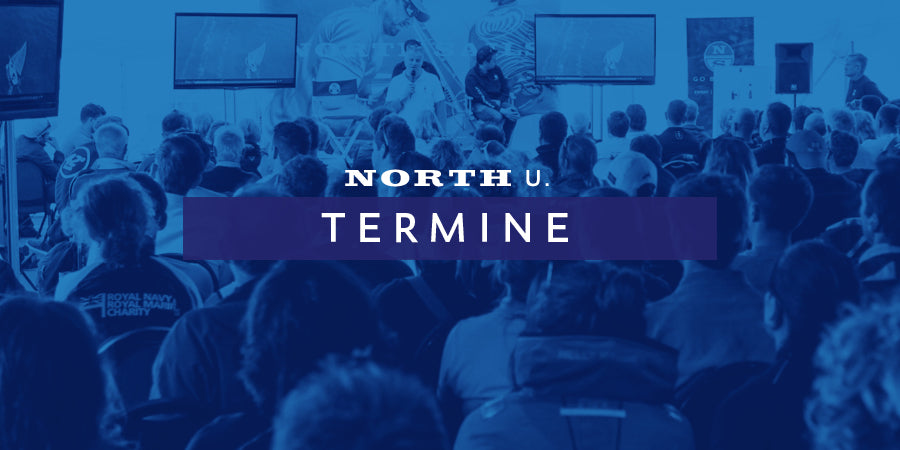
NORTH U TERMINE 2018
NORTH U TERMINE 2018
Bevorstehende Termine
TERMINE
13.-15. April 2018
North U 2018 / 1 - Neusiedlersee - auf Lago 26
Freitag, 13. April um 18:00
Begrüßung und Überblick zur North Sails University mit Einführungsvortrag über Segeltrimm vom Trainerteam
Aufnahme individueller Schwerpunkte der einzelnen Teilnehmer
Samstag, 14. April 2018 und Sonntag, 15. April 2018
Theorie Einheit(en) und Beobachtung am Wasser mit direktem Feedback (Einsatz von Funkhelmen)
Debrief mit Foto- und Videoanalyse im Anschluss an die Wasserarbeit
Teilnahmebeitrag
€ 595,00 (Trimmvortrag, Bootsmiete, Training) pro Teilnehmer
Bei weniger als 10 angemeldeten Personen können wir die Veranstaltung leider nicht durchführen – wir bitten um Verständnis.
25.-27. Mai 2018
North U 2018 / 2 - Attersee – YST LM OÖ – auf eigenen Booten
Freitag, 25. Mai um 18:00
Begrüßung und Überblick zur North Sails University mit Einführungsvortrag über Segeltrimm vom Trainerteam
Aufnahme individueller Schwerpunkte der einzelnen Teilnehmer
Samstag, 26. Mai 2018 und Sonntag, 27. mail 2018
Beobachtung am Wasser bei den Wettfahrten mit der Möglichkeit des direktem Feedback nach dem Zieldurchgang
Debrief mit Foto- und Videoanalyse im Anschluss an die Wettfahrten
Teilnahmebeitrag
€ 195,00 Skipper und Boot
€ 50,00 für jedes weitere Crewmitglied – maximal € 150,00
(inklusive Trimmvortrag, Analyse der Wettfahrten, individuelle Betreuung und Dokumentation)
Bei weniger als 10 angemeldeten Personen können wir die Veranstaltung leider nicht durchführen – wir bitten um Verständnis.
Inhalte
Jeder Regattasegler möchte gerne das Potential von Schiff und seiner Mannschaft ausschöpfen und erfolgreich segeln, sich weiterentwickeln und im besten Fall gewinnen. Regattasegeln ist ein komplexes Unterfangen: Trimm, Taktik, Boat Speed, Steuern, Regeln, Bootshandling, Crewarbeit... aber bekanntlich ist eine gute Bootsgeschwindigkeit ein wesentlicher Schlüssel zum Erfolg.
Nicht immer sind dafür neue Segel notwendig, meistens gehören sie nur richtig eingestellt!
Daher bieten wir ihnen die Möglichkeit mit Wissen und Praxis ihr Schiff und ihre Segel optimal einzustellen und das Erlernte sofort umzusetzen. Der Schwerpunkt der North Sails University liegt auf dem Segeltrimm. Fragen, Wünsche und „Problemzonen“ jedes einzelnen Teilnehmers werden vorab besprochen und der Fokus bei den Segelaufnahmen danach ausgerichtet. Das neue und aufgefrischte Wissen über seine eigenen Segel und den eigenen Trimm ist sicher für die gesamte Segelsaison äußerst nützlich!
Ablauf
Ein strukturiertes, auf die individuellen Bedürfnisse und Wünsche der Teilnehmer abgestimmtes Programm – wobei wir Sie eine Runde um den Regattakurs begleiten - hält die Balance zwischen theoretischem Input, eigener Umsetzung und direktem Feedback am Wasser. Das am Freitag im Vortrag erlernte Trimmwissen wird bei den Wassereinheiten Samstag und Sonntag in der Praxis angewandt. Die professionelle Dokumentation der schnellen Boote mit Hilfe von Fotos und Videos - sowie die Herausarbeitung der Unterschiede zu den weniger schnellen - erfolgt an beiden Tagen nach der Wasserarbeit im Rahmen eines Debriefing.
Bei weniger als 10 angemeldeten Personen können wir die Veranstaltung leider nicht durchführen – wir bitten um Verständnis.
North U
Die North Sails U. wurde 1980 in den USA gegründet mit den klaren Zielen:
Segler zu Regattaseglern und Regattasegler zu Siegern zu entwickeln. Sind sie in Österreich mit dem gleichen Zielen dabei und kontaktieren sie unser Trainerteam.
Ihr Trainerteam
Für Fragen zu Ablauf, Inhalt und Schwerpunkten stehen wir gerne auch persönlich im Vorfeld zu ihrer Verfügung.
READ MORE
READ MORE
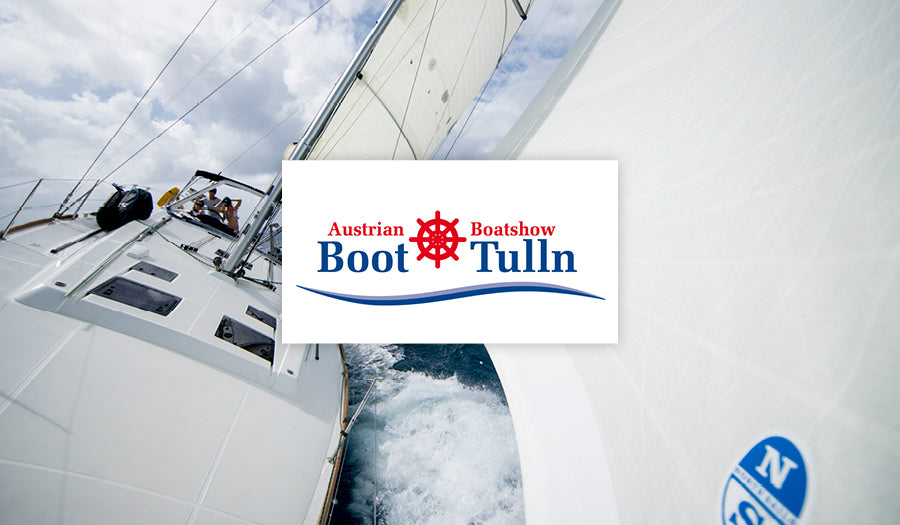
ERMÄßIGTER EINTRITTSBON
North Sails auf der Boot Tulln 1. 3. - 4. 3. 2018 in Halle 4/419
READ MORE
READ MORE
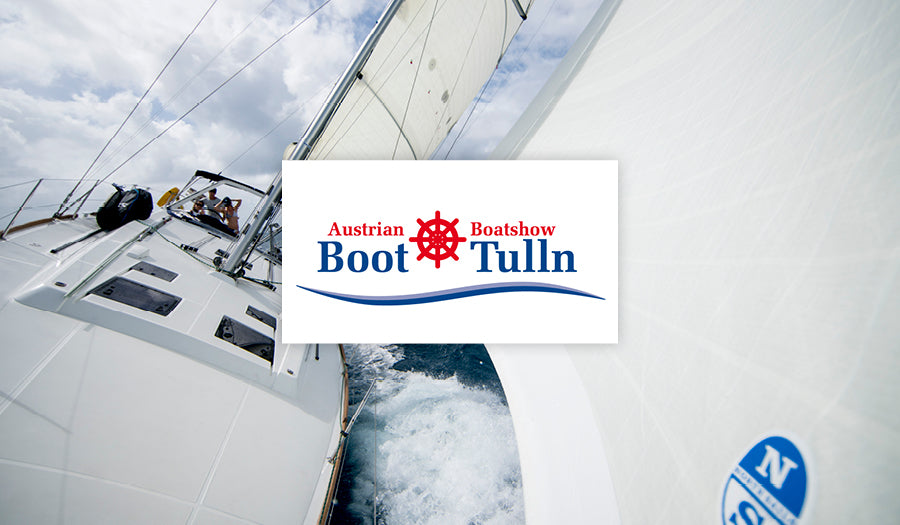
ERMÄßIGTER EINTRITTSBON
North Sails auf der Boot Tulln 1. 3. - 4. 3. 2018 in Halle 4/419
Download deinen Ermäßigungsbon und besuche unsere täglichen North Events ab 16.00 Uhr in Halle 4/419
READ MORE
READ MORE
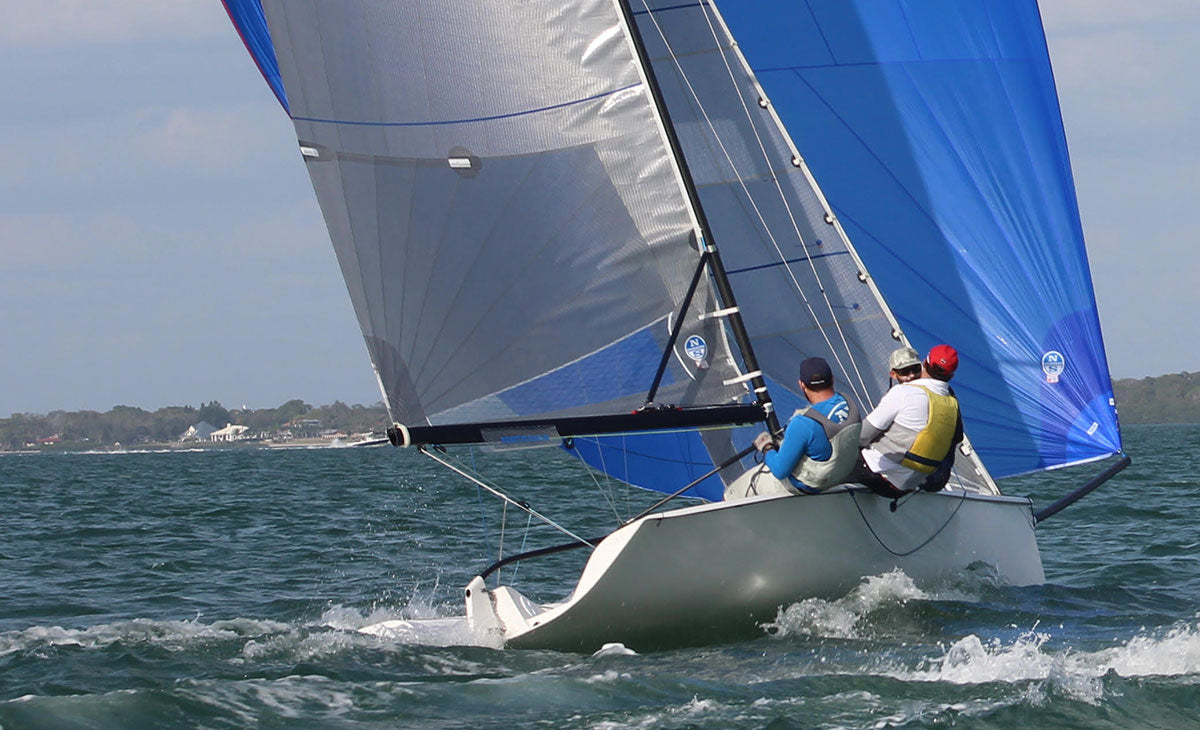
ZEKE HOROWITZ CLAIMS OVERALL VIPER 640 WINTER SERIES
NORTH SAILS’ ZEKE HOROWITZ CLAIMS OVERALL VIPER 640 WINTER SERIES WIN
Good starts and pure speed were keys to success in Sarasota
The final stop of the Sarasota Viper Winter Series finally delivered some beautiful conditions and 29 teams were able to complete eight races over the course of the weekend in 10-20 knots.
Physical stamina and technique were at a paramount as the big breeze punished any mistakes made by the teams. Without big wind shifts, starting and speed were key. North Sails clients finished strong, showing great consistency that allowed them to have spectacular overall finishes in the series.
We asked Winter Series champion, Zeke Horowitz, to share how he was able to sail upwind with great speed in the big breeze. Here is what helped him to the win the overall series.
“Make sure you know how many turns it takes to get to 40 on the uppers on your PT1 when you feel fully overpowered and set the lowers to show a hint of weather poke in the middle of the mast. Make sure to get at least 3.25″ of mast blocks in front of the mast. The name of the game is keeping the head stay as tight as possible and keeping a steady angle of heel. Playing the jib sheet along with the main sheet (using heavy vang) helps with both of those key elements. Keys for downwind sailing are conservative boat handling (sets, douces, and jibe) and active crew weight. Having the crew weight move out and back when you get the ‘knock down’ puffs helps keep the rudder in the water and the bow down. Don’t underestimate the power of good puff calls from the crew! If the team knows the puff is coming, they’ll be ready to react quickly.”
Learn more about the fastest Viper 640 sails. Contact our experts today for any additional questions you may have.
2017-18 Sarasota Viper Winter Series
Overall
1
Zeke Horowitz
3
Jay Rhame / Peter Beardsley
5*
Paul, Ken, and Karl Kleinschrodt
6
Jonathan Nye
7
Robert Harrison
8
Mike Dowd / Will Stocke
9
Geoff and Mary Ewenson
* Denotes Partial North Sails Inventory
Jake Doyle, Zeke Horowitz and Brendan Healy, overall winners of the 2017-18 Viper 640 Winter Series. Missing Ian Coleman who also sailed with Zeke in the first two events.
READ MORE
READ MORE
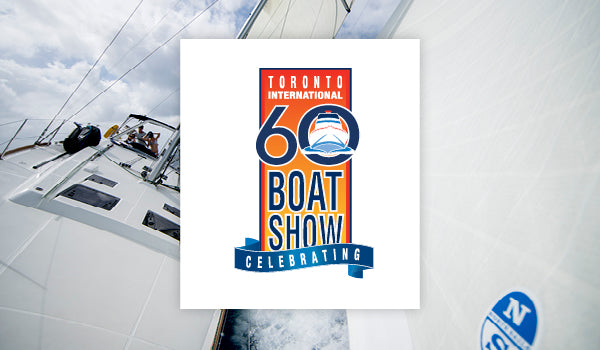
AWAY TO THE RACES
AWAY TO THE RACES
Kicking off the 2018 year with the Toronto International Boat Show
This year marked the 60 th Anniversary of the Toronto Boat Show – quite the milestone for organizers. Each year has its own specialities and focus. For 2018 and our Toronto loft, the focus was on 3Di Nordac which many customers were eagerly interested in knowing more. The NEW product for 2018 has garnered widespread interest and support, specifically among cruisers. Torontonians were no exception. Our local North Sails experts Geoff Moore, Louisa Sonosky, Miro Balcar, Mike Wolfs and Hugh Baeton were on site throughout the show to answer any questions regarding 3Di Nordac and all North Sails products. Additionally, Hugh Beaton and Mike Wolfs were on-hand to share their North Sails stories.
https://www.youtube.com/watch?v=7VVd9kf797w&index=4&list=PL3EYJa84RjjlT3EZMHCmft8wvCRMit65D
A busy show it was throughout the 10 days with familiar faces and new; thank you to everyone who stopped by!
If you have questions regarding a quote you received at the show, products or materials please reach out to any of our local North Sails experts.
Hear our team talk about their expertise in sailmaking and service. See you on the race course!
https://youtu.be/7VVd9kf797w
READ MORE
READ MORE
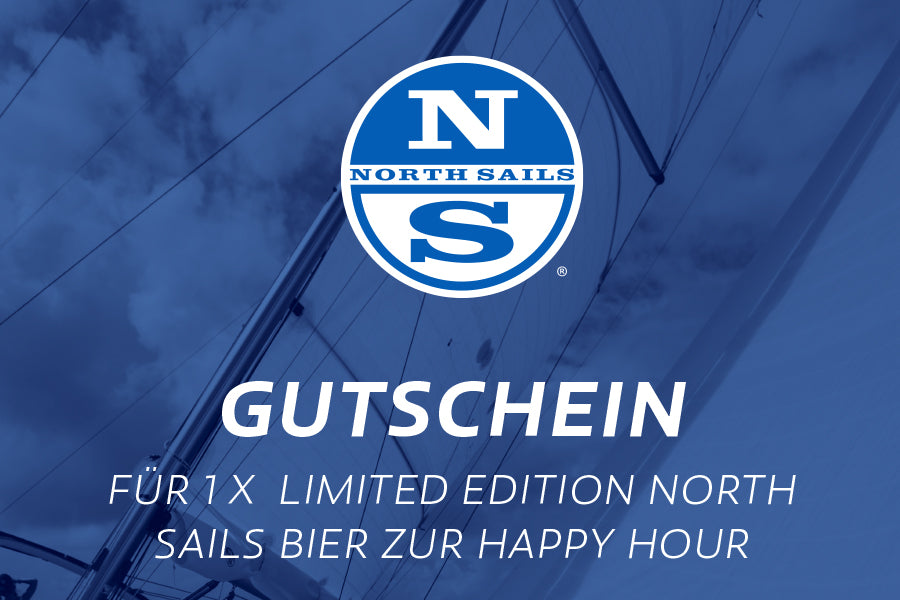
NORTH SAILS AUSTRIA AUF DER BOOT TULLN 2018
CHEERS,
Die Limited Edition North Sails Bier zur Happy Hour auf der Boot Tulln 2018 täglich ab 17.00 Uhr bei North Sails Austria Halle 4 / Stand 419 solange der Vorrat reicht.
Plopp, so einfach gehts: Gutschein vollständig ausfüllen und bei der Happy Hour abgeben oder bis zum 01.03.2018 an office.at@northsails.com senden.
Trimm mit,
bei unserem kostenlosen Trimmvortrag, der North University, welcher auf der neuen Kielversion der Lago26 von Hans Spitzauer täglich um 16.00 Uhr am North Stand gehalten wird.
Staunen und Angreifen,
das raffinierteres "Dacron"-Fahrtensegel- mit 3Di-Technologie nur bei North Sails erhältlich.
Das 3Di NORDAC ist ein revolutionäres Produkt, welches das Dacron Fahrtensegel neu erfindet. 3Di NORDAC kombiniert die einzigartigen Eigenschaften von 3Di-Verbundsegeln mit altbekannter Polyesterfaser. Das Resultat ist ein innovatives Fahrtensegel mit einer noch geschmeidigeren und beständigeren Aerodynamik für bessere Kontrolle, mehr Komfort und höhere Performance. North Sails fertigt schon seit Jahren tausende 3Di- Segel, die Millionen von Seemeilen zurückgelegt haben. 3Di-Segel bestehen aus ultradünnen, gleichlaufenden Faser Tapes, die mit duroplastischem Harz vorimprägniert sind. Mit dem North-eigenen, computergesteuertem Tape-Legesystem werden die Segelmembranen mit einer hoch komplexen Faseranordnung versehen. Die 3Di-Segel werden dann über einer frei konfigurierbaren 3D-Form in einem Stück als Membran thermogefertigt. Im Gegensatz zum konventionellen Weben und Nähen von einzelnen Segeltuchbahnen verwendet die 3Di Technologie eine monolithische Konstruktionsweise, wie sie schon seit Jahrzehnten bei Yachten aus Glasfaser und Verbundmaterial Verwendung findet. 3Di NORDAC ist die moderne Lösung bei der Suche nach höchstem Cruising-Vergnügen und bester Performance.
STARK – GESCHMEIDIG - NAHTLOS
100% Polyester für unerreichte Haltbarkeit.
Weiße Oberfläche mit ausgezeichneter Reiß- und Verschleißfestigkeit
3D-geformte Verbundkonstruktion aus einem Stück
Variable Faserdichte und -ausrichtung für optimales Verhältnis von Material und Belastung
Integrierte Lattentaschen,Eckverstärkungen und Reffpunkte
Hervorragende UVBeständigkeit Einsatzgebiete
Speziell für kleine bis mittelgroße Fahrtenyachten mit einer Vorliekslänge bis 16m entwickelt
Wir freuen uns auf Ihren Besuch!
Andrea Seidl, Hans Spitzauer, Ernst Seidl
Ihr North Sails Messeteam
READ MORE
READ MORE
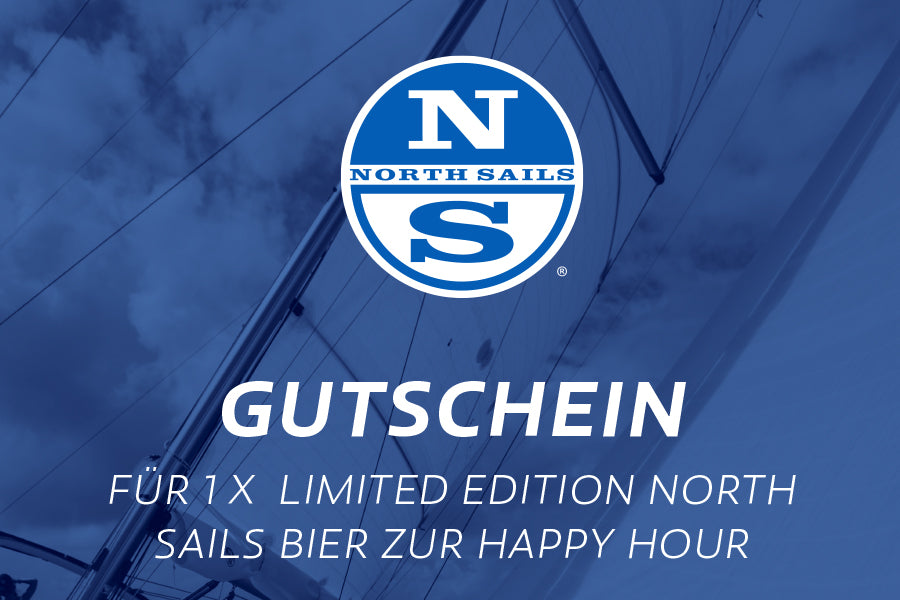
NORTH SAILS AUSTRIA AUF DER BOOT TULLN 2018
CHEERS,
Die Limited Edition North Sails Bier zur Happy Hour auf der Boot Tulln 2018 täglich ab 17.00 Uhr bei North Sails Austria Halle 4 / Stand 419 solange der Vorrat reicht.
Plopp, so einfach gehts: Gutschein vollständig ausfüllen und bei der Happy Hour abgeben oder bis zum 01.03.2018 an office.at@northsails.com senden.
Trimm mit,
bei unserem kostenlosen Trimmvortrag, der North University, welcher auf der neuen Kielversion der Lago26 von Hans Spitzauer täglich um 16.00 Uhr am North Stand gehalten wird.
Staunen und Angreifen,
das raffinierteres "Dacron"-Fahrtensegel- mit 3Di-Technologie nur bei North Sails erhältlich.
Das 3Di NORDAC ist ein revolutionäres Produkt, welches das Dacron Fahrtensegel neu erfindet. 3Di NORDAC kombiniert die einzigartigen Eigenschaften von 3Di-Verbundsegeln mit altbekannter Polyesterfaser. Das Resultat ist ein innovatives Fahrtensegel mit einer noch geschmeidigeren und beständigeren Aerodynamik für bessere Kontrolle, mehr Komfort und höhere Performance. North Sails fertigt schon seit Jahren tausende 3Di- Segel, die Millionen von Seemeilen zurückgelegt haben. 3Di-Segel bestehen aus ultradünnen, gleichlaufenden Faser Tapes, die mit duroplastischem Harz vorimprägniert sind. Mit dem North-eigenen, computergesteuertem Tape-Legesystem werden die Segelmembranen mit einer hoch komplexen Faseranordnung versehen. Die 3Di-Segel werden dann über einer frei konfigurierbaren 3D-Form in einem Stück als Membran thermogefertigt. Im Gegensatz zum konventionellen Weben und Nähen von einzelnen Segeltuchbahnen verwendet die 3Di Technologie eine monolithische Konstruktionsweise, wie sie schon seit Jahrzehnten bei Yachten aus Glasfaser und Verbundmaterial Verwendung findet. 3Di NORDAC ist die moderne Lösung bei der Suche nach höchstem Cruising-Vergnügen und bester Performance.
STARK – GESCHMEIDIG - NAHTLOS
100% Polyester für unerreichte Haltbarkeit.
Weiße Oberfläche mit ausgezeichneter Reiß- und Verschleißfestigkeit
3D-geformte Verbundkonstruktion aus einem Stück
Variable Faserdichte und -ausrichtung für optimales Verhältnis von Material und Belastung
Integrierte Lattentaschen,Eckverstärkungen und Reffpunkte
Hervorragende UVBeständigkeit Einsatzgebiete
Speziell für kleine bis mittelgroße Fahrtenyachten mit einer Vorliekslänge bis 16m entwickelt
Wir freuen uns auf Ihren Besuch!
Andrea Seidl, Hans Spitzauer, Ernst Seidl
Ihr North Sails Messeteam
READ MORE
READ MORE


